F ish F armer


AQUA NOR

The Scots are back!
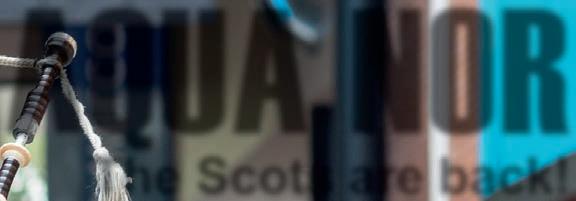

Shrimp

Eco-friendly approaches
PATHWAYS TO SUCCESS

Careers in aquaculture

The Long game
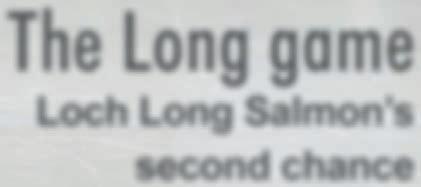

Loch Long Salmon’s second chance

SEPTEMBER 2023

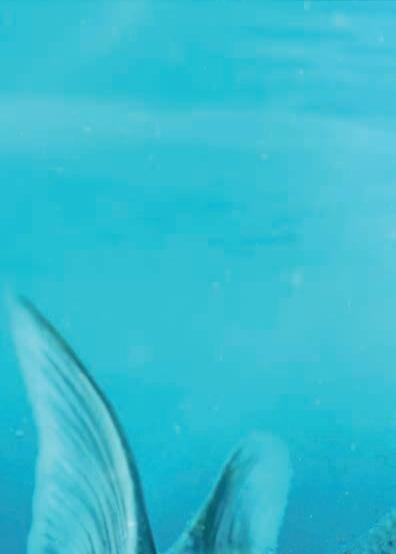








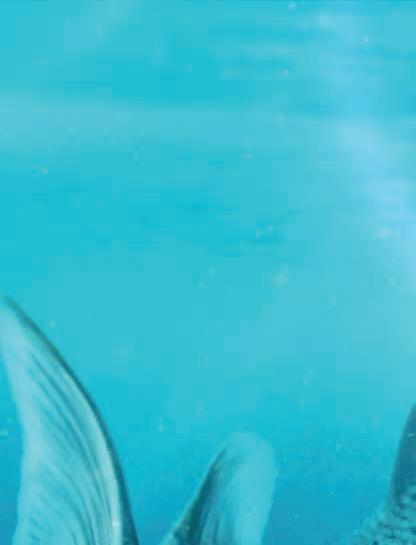
















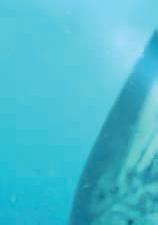






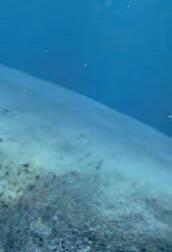
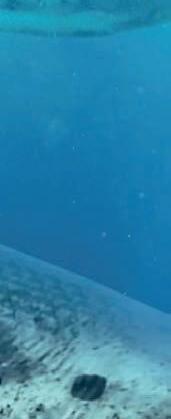
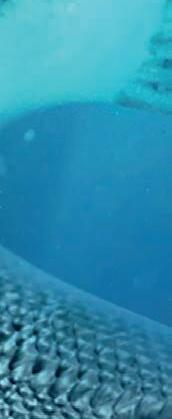
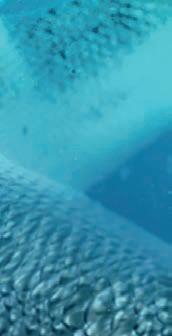






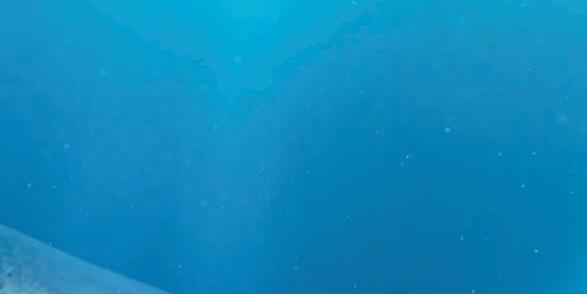


























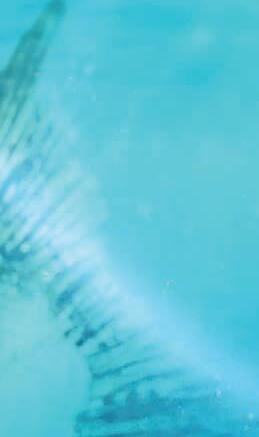






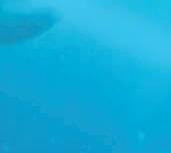







































SMARTFLOW HIGH LEVEL EFFICIENCY & ACCURACY SmartFlow connects all Vaki Smart Pumps, Graders and Counters for full overview and control of the fish handling system. MSD Animal Health UK Ltd. Registered office Walton Manor, Walton, Milton Keynes MK7 7AJ, UK. Registered in England & Wales no. 946942. Copyright © 2023 Merck & Co., Inc., Rahway, NJ, USA and its affiliates. All rights reserved. AHI-AQP-220800006 LEARN MORE To find out how SmartFlow can revolutionise your business, contact your MSD Animal Health account manager.
Last month saw the return of Aqua Nor, the aquaculture industry’s biggest trade show. After four years, the event has regained its truly international status, with visitors and exhibitors from Chile, North America, China and New Zealand as well as across Europe.
A full-scale Scottish Pavilion also returned to Aqua Nor 2023, which had not featured at the show since 2017. It says much for the international nature of collaboration in this industry that the piper who created such a stir at the Pavilion’s opening was a Norwegian.
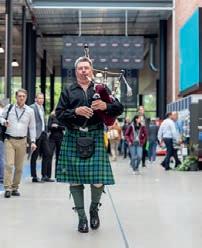
You can read our report from the show in this issue. Trondheim also gave Fish Farmer an opportunity to catch up with Mairi Gougeon, Scotland’s Cabinet Secretary for Rural Affairs, Land Reform and Islands. Read our interview with her starting on page 32.
This month’s issue also features a couple of stories from the southern hemisphere, both focusing on shrimp production. Vince McDonagh writes about a project in Australia that aims to provide an opportunity to benefit from aquaculture for indigenous communities in a way that does not damage the environment. We also profile Selva Shrimp, a business that is helping shrimp farmers in Vietnam and Indonesia to work with the precious mangrove forests rather than threatening them.
We chart the latest progress for Loch Long Salmon in the company’s efforts to introduce semi-closed systems to fish farming in Scotland and our roundup of boats and barges news focuses on the latest developments in that field.
Nicki Holmyard’s shellfish column touches on celebration and frustration – celebration of the UK’s long-lived oyster industry at festivals around the country and frustration at the failure so far to reform the burdensome system of export health certificates.
Finally, aquaculture offers many and varied career opportunities, especially in coastal communities where jobs can be hard to come by. Our Careers in Aquaculture feature provides a flavour of just how important this is.
Best wishes
Robert Outram
Robert Outram
Serving worldwide aquaculture since 1977
Meet the team
Editorial advisory board: Steve Bracken, Hervé Migaud, Jim Treasurer, Chris Mitchell and Jason Cleaversmith
Editor: Robert Outram

Designer: Andrew Balahura
Commercial Manager: Janice Johnston


jjohnston@fishfarmermagazine.com
Publisher: Alister Benne�
@fishfarmermagazine
@fishfarmermag
www.fishfarmermagazine.com
Fish Farmer Volume 46, number 09 Contact us
Tel: +44(0)131 551 1000
Fax: +44(0)131 551 7901 Email: editor@fishfarmermagazine.com
Head office: Special Publica�ons, Fe�es Park, 496 Ferry Road, Edinburgh EH5 2DL



Subscriptions
Subscrip�ons address: Fish Farmer magazine subscrip�ons, Warners Group Publica�ons plc, The Mal�ngs, West Street, Bourne, Lincolnshire PE10 9PH
Tel: +44(0)177 839 2014





UK subscrip�ons: £75 a year
ROW subscrip�ons: £95 a year including postage – all air mail

Printed in Great Britain for the proprietors Wyvex Media Ltd by J Thomson Colour Printers Ltd, Glasgow ISSN 0262-9615
Cover: Øyvind Luckow at the opening of the Sco�sh Pavilion, Aqua Nor
Photo: Aqua Nor
Editor’s welcome
WELCOME www.fishfarmermagazine.com 3
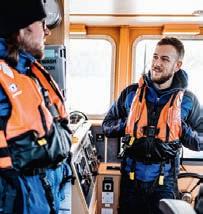
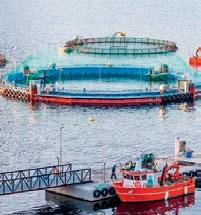
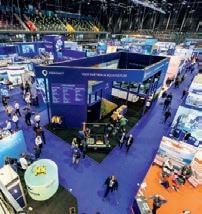





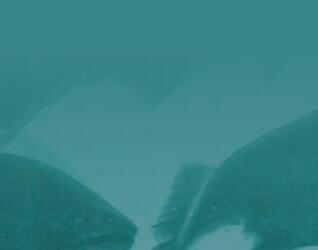



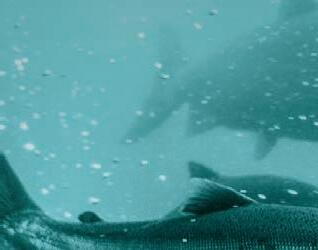




News What’s happening in the UK and around the world 6-21 Processing news Update from the processing sector 22-23 Comment Martin Jaffa 24-25 Salmon Scotland Tavish Scott 26-27 Shellfish Nicki Holmyard 28-29 Aqua Nor review Stories from the show; Mairi Gougeon interview 30-41 Australia Vince McDonagh 42-43 Shrimp farming Aquaculture and the mangrove forests can co-exist 44-45 Loch Long Salmon The bid to bring new farm technology to Scotland 46-47 USA Vince McDonagh 48-49 Water quality Filtration and the biome in RAS facilities 52-55 Careers in aquaculture Opportunities in fish farming 56-63 Boats and barges Roundup of the latest marine developments 64-67 What’s new Monthly update on innovation and solutions 68-69 Aqua source directory Find all you need for the industry 70-72 Industry diary All the latest aquaculture events, conferences and courses 73 Opinion Nick Joy 74 In the September issue... F ish F armer www.fishfarmermagazine.com CONTENTS 4 30 46 56 aquaculture water treatment solutions thoughtful solutions for fresh & sea water. Discover our ultraviolet and ozone water treatment and disinfection solutions
profibreed FryGutter

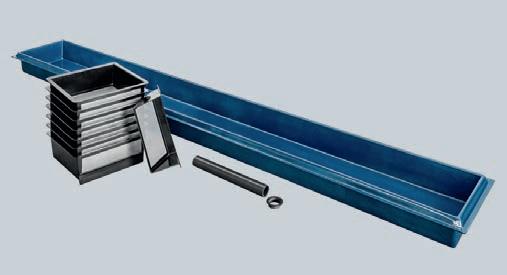



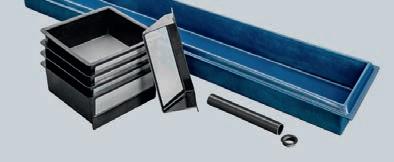






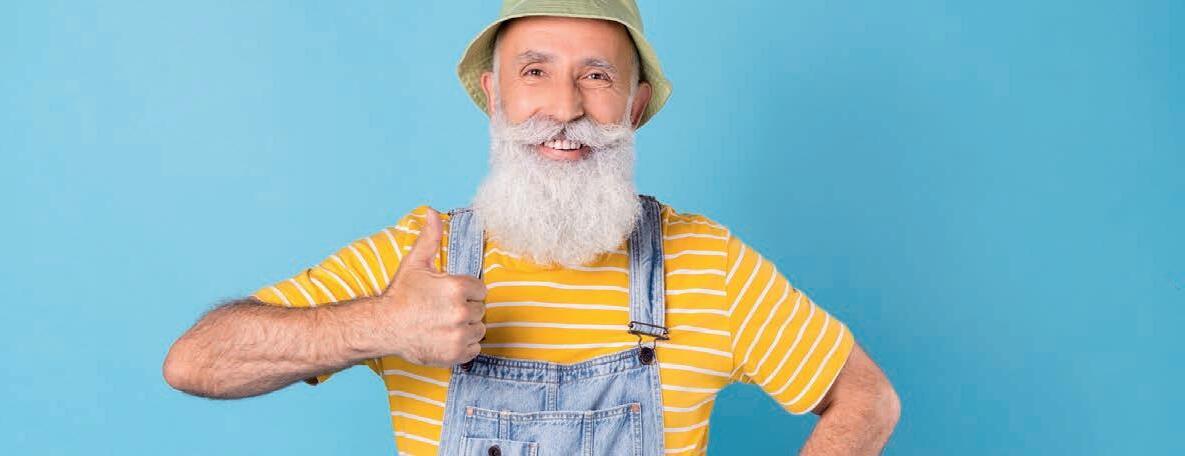























www.fishfarmermagazine.com 5 Specialized in the tough high energy sites CAGE NETS AND MOORINGS THE WORLD OF AQUACULTURE ...ready for offspring? ... made by professionals for professionals! www.fiap.com
The FIAP profibreed FryGutter 2-Fold, 4-Fold 7-Fold is for the incubation of salmonid eggs and subsequent feeding of young fish used worldwide. • Made of high-quality material (glass fiber) with laminated reinforcements • Robust, with smooth inner walls • Supplied with adjustable pipe outlet (DN 50) and seal • included: FryGutter Basket and FryGutter Sieve #1409-1 #1410-3 #1411-1 FishFarmer_190x130mm_Sep.indd 1 18.07.23 16:21
Scottish Government to trial aquaculture reforms


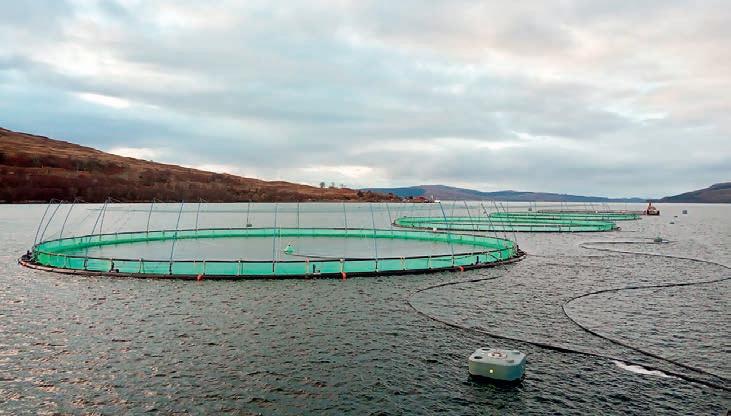
of management measures in marine protected areas and supporting community-led marine protection.”
The Scottish Government also intends to develop a Blue Carbon Action Plan to improve the management, protection and enhancement of Scotland’s critical blue carbon environments.
More generally, a rural delivery plan will include land reform, support for farmers to help to build skills and reduce the carbon footprint of rural industries.
A streamlined consenting process for fish farming will be trialled in two local authority areas over the next 12 months, Scotland’s First Minister Humza Yousaf has promised.





The pledge comes in the Programme for Government, which sets out the devolved Scottish Government’s aims and objectives for the coming year.
The Scottish Government has already accepted the recommendations of the Griggs Report on the reform of aquaculture regulation, including the need for a robust but streamlined consenting process for new or expanded fish farms, which reduces the duplication of effort of the different regulators.
Mairi Gougeon, Scotland's Cabinet Secretary for Rural Affairs, Land Reform and Islands, recently published a Vision for Sustainable Aquaculture setting out principles for the development of the sector.

The programme also includes a commitment to reduce the risk of escapes from fish farms, with a new Technical Standard for Scottish Finfish Aquaculture.
On the marine front, the First Minister also said that he would be pressing the UK Government to stump up more cash to recompense Scotland’s seafood sector for the costs of Brexit, above and beyond
the £14 million annually (to 2024-25) currently provided for the Marine Fund Scotland. New legislation for fisheries would also see Remote Electronic Monitoring (REM) on board all pelagic and scallop dredge vessels fishing in Scottish waters. The Scottish Government will also consider responses to its consultation on tracking and monitoring tools for inshore fishing vessels.
The Scottish Government will also publish a Science and Innovation Strategy for Scotland’s marine and freshwater environments that sets out “… how science and innovation will contribute to the delivery of the blue economy ambition and commitments as well as emerging opportunities and challenges.”
On the controversial proposals for highly protected marine areas (HPMAs), plans for which were scaled back this summer after the initial consultation exercise, the programme commits to: “...enhance the protection of our marine environment, including through progressing implementation of a suite
Cautious welcome from Salmon Scotland
Trade body Salmon Scotland welcomed many aspects of the Programme for Government, including the promised “rural delivery plan”, but expressed concern about a reference to “next steps” in relation to HPMAs.

Tavish Scott, Chief Executive of Salmon Scotland, said: “The Scottish Government has rightly recognised the huge economic and rural contribution of the aquaculture sector.
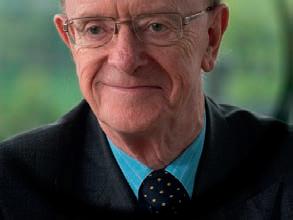

“We look forward to working with ministers to support the growth of a sustainable blue economy to help feed the world, delivering higher export sales and creating jobs in rural Scotland.
“It’s clear, however, that faster progress is needed to address the cumbersome regulatory landscape in Scotland, which is holding back growth – 18 months on from the Griggs independent review, action is urgently needed.

“And if the Scottish Government resurrects HPMAs, the negative reaction will be resolute, determined and considerable.











“We want to work in tandem with government to unlock the economic potential of Scotland and its rural communities. Salmon farming is key to delivering this."

6 UNITED KINGDOM NEWS United Kingdom news www.fishfarmermagazine.com
From the top: Scottish Sea Farms’ Fishnish site; First Minister Humza Yousaf; Tavish Scott; Professor Russel Griggs
Seafish guidance on water quality testing
INDUSTRY authority Seafish has produced guidance and training for UK shellfish producers on how to carry out water quality sampling for statutory microbiological and biotoxin monitoring programmes as part of changes to the Official Control Regulations on shellfish.
This follows a change in approach last year by the Food Standards Agency (FSA) to allow local authorities to permit trained shellfish farmers to collect their own shellfish and water samples. The aim is to streamline the application of the Official Control Regulations for everyone involved.

This change is one of the positive results emanating from a programme of work initiated by the Shellfish Stakeholder Working Group, following a study by Seafish that identified differences in the way in which EU member states meet the Official Control Regulations.
Historically, industry involvement in LBM sample collection was only permitted in exceptional circumstances and with explicit FSA permission on a case-by-case basis.
Aoife Martin, Seafish Director of Operations, said: “Our report into the Official Control Regulations highlighted the feasibility of delivering a responsive, adaptive and risk-based approach for bivalve production and suggested a package of proposals for how such an approach could be applied in the UK.”
The guidance outlines the processes and considerations involved in collecting, processing and transporting LBMs, the level of oversight or supervision required, and who will be responsible at each stage. It also includes an agreement template for local authorities to adapt to their needs.
An online Official Control sampling training course has also been developed to ensure that sampling meets the standards required, regardless of who is doing it. Two courses will take place this autumn, with further courses arranged on request.
The guidance and template are available to download from the Seafish website under the “Review of Official Control Regulations (OCR) for shellfish production” section at bit.ly/seafish-testingwater-quality

Information on the training course can be obtained from the Seafish Onshore Training team by emailing onshoretraining@ seafish.co.uk.
The Hydrotech Drum Filter Value series focuses on reduced maintenance, increased component quality and simplified operation – all to give your plant maximum filtration performance at a minimum operational cost.
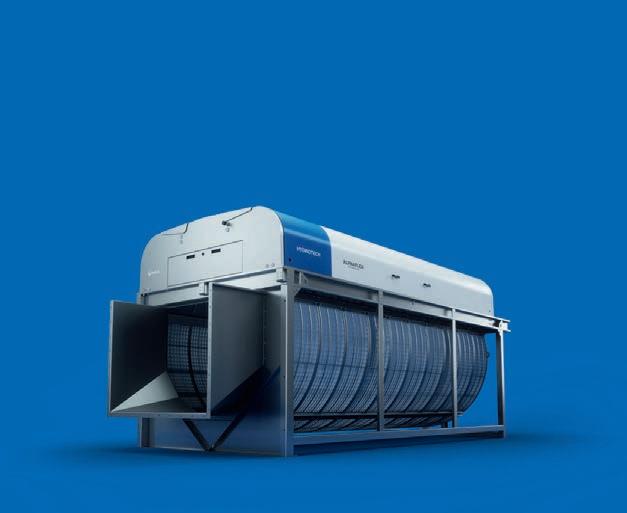
www.fishfarmermagazine.com 7
Above: An oyster farm
Contact us! Call +46 (0)40 42 95 30 or visit www.hydrotech.se Smarter,
20230104 Fish Farmer Hydrotech 92x130 mm Ad.indd 1 2023-01-04 11:10:50 • Fish Cage Nets – Nylon & HDPE • Predator Solutions • Net Service Plant • Treatment Tarpaulins • Lice Skirts • Supplier of LiFT-UP • Wrasse Hides
stronger, more economical drum
filters
NEWS IN BRIEF
Ley-Wilson joins SAIC as Riddle steps down





FISH farming expert
Ed Ley-Wilson is joining the Sustainable Aquaculture Innovation Centre (SAIC) in the newly created role of irector of Innovation and Business evelopment.
Ley-Wilson was most recently Head of Aquaculture at Aquascot, a supplier of Scottish salmon products, and has joined SAIC after a year’s sabbatical.
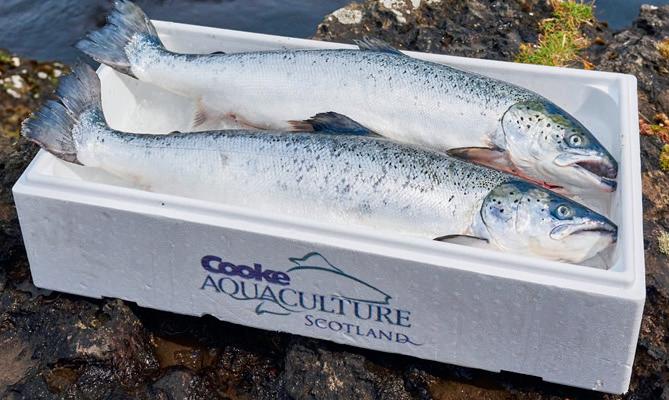


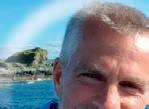
Meanwhile, SAIC’s irector of Innovation and Engagement, Sarah Riddle, is leaving after three years with the organisation to focus

on her family business, Northern Light Consulting.
Heather ones, CEO of SAIC, said: “While we are sorry to see her go, Sarah has achieved everything we had hoped for and more, and we wish her all the best with her future endeavours.
“Ed will be an excellent addition to the SAIC team, providing a great deal of continuity with his breadth and depth of experience. He also brings with him the background and skills we need as we prepare to enter a new phase for the innovation centre.”
Cooke hatchery linked to Kinglas leak
SALMON producer Cooke

Aquaculture Scotland says an apparent leak at one of its hatcheries that led to waste aquafeed spilling into a river has been fixed. Ef uent, including feed pellets, was being discharged into the Kinglas Water in Argyll and Bute on the west coast of Scotland. It had been spotted and filmed by anti-


‘Disappointment’ at lack of progress on digital EHCs






salmon farming campaigner on Staniford, and also reported to the Scottish Environment Protection Agency.

Cooke later reported that the hatchery’s outlet filter screens had been inspected and any damaged screens had been replaced, after which no feed had been observed entering the watercourse.
Ace Aquatec launches biomass camera

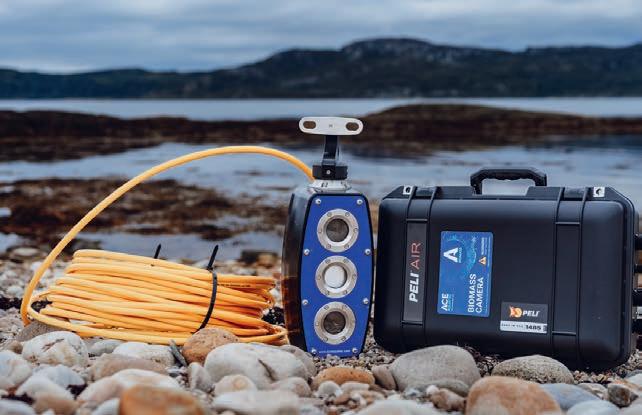
AN argument has broken out over a pilot scheme aimed at speeding up Brexit paperwork for seafood exporters, which has been terminated. Salmon producers and the Scottish Government have expressed disappointment at the slow pace of progress, but the UK Government says it is still on track.
The beta test programme, carried out by the UK Government’s Department for Environment, Food and Rural Affairs (or Defra) with salmon producer Cooke Aquaculture, involved a digitised version of export health certificates (EHCs), which have been required for all animal-based exports to the European Union since the UK formally left the EU single market at the start of 2021.
Seafood industry businesses believe that digitising the paperwork would reduce errors in the system and the time and cost involved in the process. Defra has now informed Cooke that the study is being brought to a close, but there appears to have been some miscommunication over what happens next and how long it might take.
will begin to test this new and improved service from early 2024, and will draw upon the feedback and insights learnt in the pilots. This will provide the capacity to send digital certificates to the European Union and further afield, delivering more than the original testing programme.”
Mairi Gougeon, Cabinet Secretary for Rural Affairs, Land Reform and Islands, wrote to UK Environment Secretary Thérèse Coffey to complain that the pilot project has been terminated without a clear timeline and without consulting with the Scottish Government.


Gougeon also wrote: “In your letter of 13 January, you stated that you hoped a comprehensive timeline for the project would be shareable soon. We are now seven months on; no timeline has been offered and businesses now have further uncertainty in which to operate and to make investment decisions.”
Tavish Scott, Chief Executive of Salmon Scotland, said:
ACE Aquatec has unveiled an automated artificial intelligence (AI) camera system, which it says will revolutionise biomass data capture for fish farmers around the globe. Launched at the Aqua Nor trade show in Trondheim last month, the A-BIOMASS promises to transform the way fish farmers across the globe monitor and grade their fish stocks by using machine learning and AI for real-time millimetre accuracy.
The camera is also lighter than many of its competitors and has been designed to be easy to use.

See Aqua Nor report, page 40.

A spokesperson for Defra said: "As has always been the case, the first pilot is ending with the intention of moving into a second phase of delivering fully digitised certification for exports. We

“The sector is disappointed with the length of time this is taking, but we’re pleased there will be work to develop a global export system. We’ll be the first to put our hands up and volunteer to help develop and test it."

www.fishfarmermagazine.com 8 UNITED KINGDOM NEWS
Above: The Ace Aquatec biomass camera
Top: Ed Ley-Wilson
Above: Sarah Riddle
Top: Cooke Aquaculture salmon
Above: Mairi Gougeon, Cabinet Secretary, Rural Affairs
DON’T GET CAUGHT WITH A FAILED PUMP ON THE JOB.
Bring confidence to your net cleaning job, with the most reliable pump on the market.



NLB’s high-pressure water jet pumps are proven reliable for offshore and onshore net cleaning. Engineered specifically for the aquaculture market, they withstand the harsh conditions of open seas, foul weather, and salt corrosion, all while delivering the same performance and durability NLB has been recognized for since 1971. Our units also offer a compatible interface with the industry’s leading head cleaning systems.

NLB will go the extra mile to make the switch easy for you. Contact us today to discuss your options!
WE’RE IN YOUR TERRITORY. DARLINGTON, UK

NLBCORP.COM +44 7391 745 119 © Copyright 2023 NLB Corp. | PSaleAqua_23_001_v1
Our UK branch has moved to a larger facility to ensure our pumps and support are readily available when you need them.
Scottish Sea Farms’ incubation unit set for autumn opening
“Exposure to clean water is hugely i portant and e’re er confident of our water quality here at Barcaldine,” said Conn.
“Equipped with the most sophisticated recirculating aquaculture system (RAS) of its kind in Scotland, the main hatchery draws in freshwater from the nearby Gleann Dubh reservoir and puts it throu h a co plex s ste of filters and UV light to remove anything greater than 0.01 microns and ensure that no bacteria or viruses can get through.
“Within the new unit, there will be three similar RAS setups, supplying water to the racks where the new eggs are housed.
“Any one of the racks can be supplied by an individual RAS setup so we can supply them all at different temperatures should we choose to – the importance being that it gives us control over how quickly or otherwise the ova develops.
“And because the water is so clean, it’s as safe as it can possibly be for the ova.”
SALMON producer Scottish Sea Farms says the £2m incubation unit at its Barcaldine hatchery is on track to open this autumn.
Scottish Sea Farms, which is jointly owned by Norway’s SalMar and Lerøy, believes the new unit will help ensure security of egg supply and improve fish sur i al.

Currently, the Barcaldine hatchery receives fertilised eggs that have developed to the eyed stage from its specialist suppliers.
Thanks to a new incubation unit, which will be located in its own dedicated building adjacent to the main hatchery, Scottish Sea Farms will soon be able to receive eggs immediately post-stripping and fertilise them on-site.
This means they can be incubated through the most fragile stages of their development until robust enough to be transferred to one of the company’s three hatcheries: Barcaldine itself, Knock on the nearby Isle of Mull or Girlsta in Shetland.
Barcaldine is situated on the banks of Loch Creran in Argyll on the west coast of Scotland.
Scottish Sea Farms’ Head of Freshwater, Rory Conn, commented: “What we’re doing is creating a bespoke facility that will allow us to have greater control of the eggs even earlier in the production cycle.”
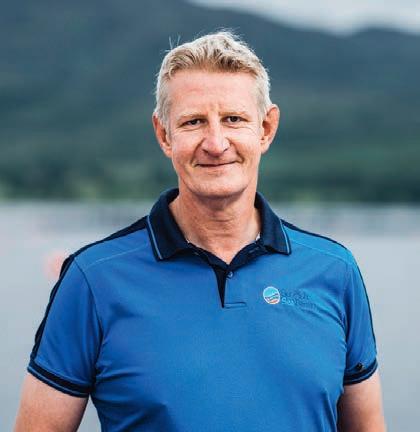
“We’ll be able to take our time through these most critical initial stages, incubating the eggs for longer and at lower temperatures as we deem appropriate.”
Emerging research suggests, he said, that incubating eggs at lower temperatures during the very early stages can have better outcomes for fish health later in life, particularl ith regard to cardiac health.
He added: “We would be looking to incubate as low as possible, likely 2-3°C, to encourage the slow and steady development of the ova.”
By receiving eggs immediately poststripping, the freshwater team will also ha e reater in uence o er another e welfare factor – water quality.
The new unit is expected to create four additional jobs at Barcaldine, skilled roles that will involve everything from fertilising the eggs with milt to rinsing and disinfecting the ova.
Once the eggs reach the eyed ova stage, they will go through a comprehensive quality check process to ensure that only viable eggs are transferred to incubation trays.
“The priority with this latest investment in our freshwater farming is to secure the supply and quality of our ova and provide the capacity for optimal incubation from fertilisation onwards,” said Conn.
“Initially, we’ll fertilise only a proportion of our ova supply on-site. However, the unit has the capacity to accommodate all our current and future ova requirements.”
The new unit is the latest investment by Scottish Sea Farms to future-proof e suppl and fish health and sur i al. Other work in this area includes a ground-breaking collaboration with genetics specialist AquaGen to produce a supply of eggs from broodstock that have been proven to thrive at Scottish Sea Farms’ marine sites – a project that is no in its fifth ear.
www.fishfarmermagazine.com 10 UNITED KINGDOM NEWS
Above: Scottish Sea Farms’ new £2m incubation facility
Left: Scottish Sea Farms’ Head of Freshwater, Rory Conn
Labour’s Murray backs salmon farming
SHADOW Scotland Secretary Ian Murray has praised the salmon farming sector’s “immense contribution” to the Scottish economy and its “crucial” support for livelihoods.
The Labour MP toured Bakkafrost Scotland’s Loch Roag salmon farm on Lewis in the Western Isles. He was joined by Western Isles Labour candidate Torcuil Crichton and welcomed to Loch Roag by Tavish Scott, Chief Executive of Salmon Scotland and Iain MacIntyre, Director of Marine Operations at Bakkafrost Scotland.
Murray said: “As the UK’s largest food export, Scottish salmon makes an immense contribution to our national economy.
“The salmon farming sector also provides vital local jobs in the Western Isles and rural areas throughout the Highlands and Islands, with the farms crucial for livelihoods and communities.
“In some remote coastal areas, the jobs created by the local salmon farm are the only reason that shops, restaurants and other businesses are viable.
“It is the job of government to ensure the continued success of Scottish salmon, facilitating sustainable growth with animal welfare remaining a top priority.”
Ian Laister, Managing Director of Bakkafrost Scotland, said: “Bakkafrost Scotland aims to be the leading sustainable salmon producer in Scotland. With more than 500 staff across 54 sites on the west coast, we remain committed to bringing long-term quality employment opportunities to what can often be among the country’s more remote and fragile communities.
“Today’s visit provided an important opportunity to share our approach to being one of the world’s most vertically integrated salmon farming businesses – from feed to finished products.
“This ensures unrivalled traceability, consistently exceptional quality and our world-renowned provenance.”
Scott commented: “We were delighted Mr Murray took the time to get his feet wet and see first-hand how our skilled farmers look after the salmon in their care.
“He rightly recognises the vital importance of international trade for Scottish salmon and its contribution to the entire UK economy.
“Our sector is the economic backbone of coastal communities like the Western Isles, with 400 livelihoods directly dependent on the sector.”
Scottish salmon is the UK’s largest food export, with recent HMRC figures showing that exports jumped by 9% to £306m, driven by significant growth in the Asian and American markets. Scotland's farm-raised salmon sector directly employs more than 2,500 people in Scotland and supports more than 3,600 suppliers and an additional 10,000 indirect jobs.
Wild Fisheries Fund supports kelp programme









A restoration programme for kelp forests is among seven major environmental projects being supported by Scotland’s salmon farmers to help save wild salmon and sea trout.

More than £118,000 has been granted to organisations this year through Salmon Scotland’s Wild Fisheries Fund to address long-term species decline.
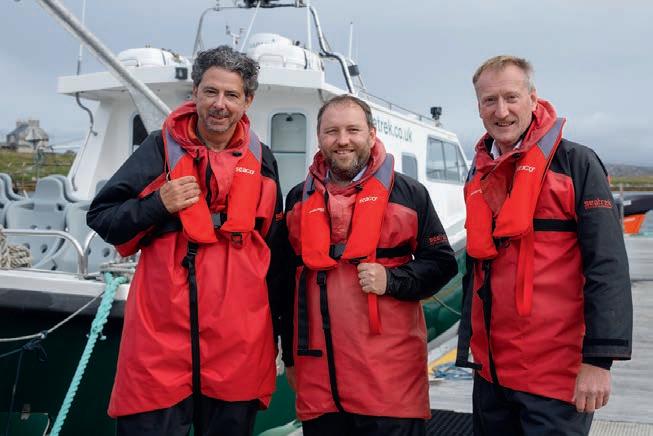
The fund is part of a £1.5m commitment from Scotland’s salmon farmers to support the conservation, restoration, and sustainable management of ild fish nu bers.
Atlantic Mariculture, seaweed farms based at Ardtoe on the Ardnamurchan Peninsula, has been awarded £43,102 to deploy specially designed kelp shelters for wild salmon and sea trout.
his ill see fi e inshore forests created with seaweed grown on ropes along the west coast near the Rivers Shiel and Moidart, both key ecosystems.


Habitat loss and rising river temperatures primarily due to climate change have impacted wild salmon and sea trout populations throughout the UK, including the Scottish coastline.
Salmon farming companies, which only operate on the west coast, launched the fund to help find solutions, engaging constructively with the ild fish sector and ta in meaningful action to save wild salmon.
Previously called the Wild Salmonid Fund, more than £190,000 has already been invested since 2021 including a £35,000 grant to save the leaking Fincastle Dam on West Harris, helping preserve an i portant sal on fisher .
The fund is co-ordinated b fisher ana er on Gibb, who is based in Fort William and has championed a constructive relationship between the farm-raised
salmon sector and fisheries and angling groups.
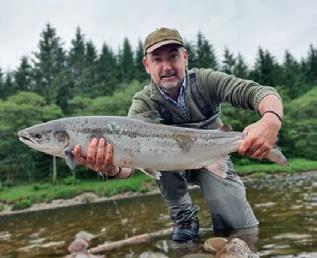
The other six projects awarded funds are:
• Ayrshire Rivers Trust –£15,543 to address riverbank erosion at the Netherton Burn.
• Loch Lomond Angling Improvement Association – £23,000 to fund habitat improvement along the River Fruin.
• Loch Lomond Fisheries Trust – £12,381 to engage with young people in Garelochhead.
• River Eachaig Fishery Syndicate – £11,084 for improvements on the Cowal Peninsula, South Argyll.
• River Ruel Improvement Association – £10,000 to tackle erosion and sediment.
• Obbe Fishery – £3,000 to repair an ageing sea dam wall, introduce an underwater ca era for onitorin fish runs and add and clean feeder streams spawning gravel. on ibb, co ordinator of the Salmon Scotland ild fisheries fund, said “It’s fantastic to support a variety of innovative projects dedicated to conserving and enhancing the habitat, particularly for a species facing extinction in certain areas... The aquaculture sector can play a vital role in mitigating their decline.”
Kelp forests provide food and securit for an fish species, and it is hoped that Atlantic Mariculture’s planned ‘shelters’ will offer crucial rest stops for migrating sea trout.


www.fishfarmermagazine.com 11
Above: (From left) Torcuil Crichton, Ian Murray and Tavish Scott
Above: Jon Gibb, Wild Fisheries Fund Below: Kelp
SalMar planning huge increase in output
SALMAR is planning to increase its annual output by at least a third, investors have been told.
The world’s second largest producer of Atlantic salmon, and part owner of Scottish Sea Farms, outlined its ambitions at a Capital Markets Day event in Tromsø.
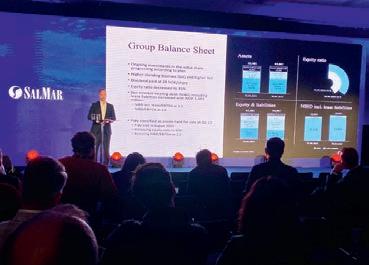
CEO Frode Arntsen said that sustainable organic growth is now top of the group’s agenda. SalMar is planning overall organic growth from all regions, which implies a future harvest volume of 362,000 tonnes, an increase from the expected harvest volume of 273,000 in 2023 or a 33% increase, even without major investments.
The company has increased its estimate of the annual cost savings after the integration of NTS, NRS and SalmoNor from NOK 671m (£50.4m) to NOK 844m (£63.3m), of which 71% has been realised by the end of August 2023.
Arntsen added: “The company continues to invest with clear ambitions in both coastal farming and offshore aquaculture. SalMar aims to maintain its leading role by growing and developing the industry nationally and internationally.
“Our ambition is further growth in all our regions, but where, how quickly and how much we want to invest depends on where we find sustainable framework conditions.
“In Norway, the ground rent tax that has been introduced is a particular concern for the further growth potential beyond the organic growth potential we have gained through the NTS transaction last autumn.”
tron fi ures, but cotland disappoints
Ahead of the Capital Markets Day, SalMar reported a 2023 second quarter operational EBIT or profit of NOK 1.745m (£130m) – around £55m higher than the same period last year.
Norway delivered the strongest performance with an EBIT of NOK 1.790m (£132m), adding that Scottish Sea Farms, in which it owns a half share, delivered weak results due to biological challenges.These challenges now mean the volume guidance for Scottish Sea Farms has reduced to 27,000 tonnes.
As expected, a low slaughter volume took place in Iceland during the period.
SalMar also reports that its joint offshore operation, SalMar Aker Ocean’s Ocean Farm 1, started its third production cycle in early May and expects slaughter to start in early 2024.
Earlier in August, Goldman Sachs Asset Management completed the purchase of 72.11% of the shares in
the wellboat supplier and aquaculture services business Frøy ASA from SalMar’s wholly owned subsidiary NTS, against a settlement consisting of NOK 4.8bn (£360.5m) in cash consideration.
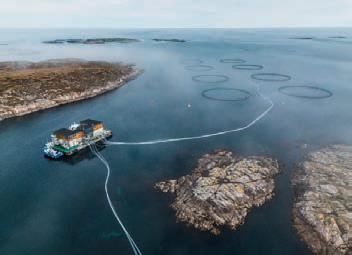
Arntsen said: “We report strong results that are largely in line with our expectations and good progress in our work to integrate NRS, NTS and SalmoNor into SalMar.
“We have recently signed a refinancing package and strengthened our balance sheet through the sale of shares in Frøy. All this gives us an even stronger basis for further growth.
“In recent years, the company has made significant investments along the entire value chain.”
He said that SalMar would continue to campaign for changes to the tax system imposed on the salmon farming sector. SalMar would be “open to pursue legal steps in due course” but “will continue open and fact-based dialogue with authorities”.
The impact of the new tax, which the company said is likely to cost it NOK 2.3bn (£172m), has not been included in the financial results for 2.
Norway salmon exports continue 30-month run of growth
NORWEGIAN salmon exports were up by value again during August, increasing month on month consistently for the past two and a half years.
Figures published by the Norwegian Seafood Council today reveal that the country’s salmon farmers sold 125,041 tonnes of fish worth NOK 10.7bn (£793m) last month.

This represents a value increase of 18% and a volume rise of 6%, compared with August last year.Poland, the US and the Netherlands were the biggest markets for salmon in August.
Norwegian seafood exports of all types were worth NOK 14.2bn (£1.05bn) during the month, a value increase of 15% on a year ago.
Seafood Council analyst and salmon specialist Paul T Aandahl said the value of salmon exports had grown continuously for the past 30 months, adding he had to go back to May 2011 to find such a continuously long growth.
The organisation’s CEO Christian Chramer said that, once again, a decline in the value of the krone was the principal reason for the higher revenues.
“In August, the Norwegian krone was as much as 16% weaker against the euro than in the same month last year,” he added.
Chramer said North America was the global region with the greatest value growth.
“The export value to this market increased by 24% to a total of NOK 1.5bn (£110m).This accounted for 10.4% of the total Norwegian seafood exports in August when measured in value.
He added: “The USA is becoming an increasingly large and important market for us.
“We have to go back to the 1980s to find the last August when more than 10% of the value of Norwegian seafood exports went to North America.”
www.fishfarmermagazine.com 12 EUROPEAN NEWS European news
Above: SalMar CFO Ulrik Steinvik presenting 2 results at Aqua Nor
Below: SalMar coastal farming site
Tax forces Måsøval to axe its innovative semi-submersible farm project
THE Norwegian fish farming company Måsøval has cancelled a major semisubmersible salmon farm project because of the ground rent (or resource rent) tax. Known as Aqua Semi, the closed roof scheme was designed to open up new areas in salmon farming and reduce lice and disease.

But Måsøval, which put the project on hold last year, said in its second quarter report that the project is no longer economically viable because of the new tax, which was voted in by the Norwegian Parliament earlier this year.

The company’s EBIT or operating profit is also affected by a NOK 45m (£3.3m) write down for Aqua Semi.
Måsøval said that in 2019, it received four development licences. The development phase was finalised last year. The statement continued:
“The new resource rent tax does not give a tax break for investments in development licences, while introducing a full resource rent tax on profits after the project is finalised and licences converted to regular commercial licences.
“This tax makes the project in its current form economically non-viable.
“Måsøval has therefore decided to cancel the project and take a one-off write-down of the investment with a total of MNOK 45.”
Meanwhile, the group,
which also has salmon farming interests in Iceland, announced operating revenues to almost NOK 805m (£60m) against NOK 934m (£69m) in Q2 last year.
The group’s operational EBIT in Q2 2023 was NOK 210.5m (£15.6m), from NOK 500.6m (£37m) last year.
The result after tax was a loss of NOK 123.3m (£9.2m) against a profit of NOK 436.2m (£32.7m) last year.
The decrease in revenues was attributed to a lower harvested volume and more downgrading, with lower achieved prices compared to the corresponding quarter last year.
The drop in operational EBIT, it added, was caused by higher prices of feed and costs for sea lice treatment.
Måsøval is maintaining its harvest guidance of 24,300 tonnes in 2023, with 7,200 tonnes expected in Q3.


Andfjord Salmon moving into top gear
ANDFJORD Salmon, one of Norway’s youngest land-based fish farming companies, has said it is rapidly advancing with the expansion of its aquaculture facility at Kvalnes, And ya.

The summer months saw successful preparatory efforts and the deployment of personnel and equipment.
Two months ago, Andfjord Salmon unveiled the specifics of its expansion plan at Kvalnes, targeting a total production capacity of 40,000 tonnes (HOG) through a gradual increase between 2025 and 20 0. An initial volume of 8,000 tonnes is anticipated for 2025.
The company said that contractors had achieved extensive groundwork, which involved injecting concrete to stabilise the sections surrounding the 12 pools that constitute the upcoming construction phase at Kvalnes.
Martin Rasmussen, CEO of Andfjord Salmon, said: “Our approach involves constructing an ocean-like fish enclosure on land.”
Mowi’sfeedmillinKyleakinontheIsleofSkyeproducesfeedfor salmonandtroutatalllifecyclestagesandforfreshandseawater environments.
R&DiscentraltoeverythingwedoatMowiFeedandongoing fieldtrialsinformourapproachtooptimisingrawmaterials, growthratesandanimalrobustness.
Wehavearobustpolicyonsustainabilityandallingredientsused infishfeedaretraceable.Mowialsoholdscertificationsforfeed productionaccordingtotheGlobalGAPCFM,LabelRougeand organic(NaturlandandSoilAssociation)standardsandweare alreadyworkingtowardsgainingaccreditationtotheforthcoming ASCFishFeedStandard.Mowiisregularlyauditedbymanyofthe majorEuropeanretailersandcomplywiththequalitystandards prescribedbyawidediversityofretailoutlets.
Weofferbulkdeliveriesusingourownvesselsandwecandeliver inbagsbyseaorroadtransport.
Above: Andfjord Salmon, Kvalnes phase two
Tofindoutmorecontact: kyleakinfeedsales@mowi.com +447817099334 www.mowi.com/sustainability/mowi-feed ChooseMowiFeedtorear strong,healthyfish
NEWS IN BRIEF
Norway’s farmed cod exports on the rise
Grieg facing major health issues in northern Norway

SERIOUS ongoing biological issues have led to a sharp drop in Grieg Seafood’s 2023 second quarter EBIT or operating profit, the company has disclosed.
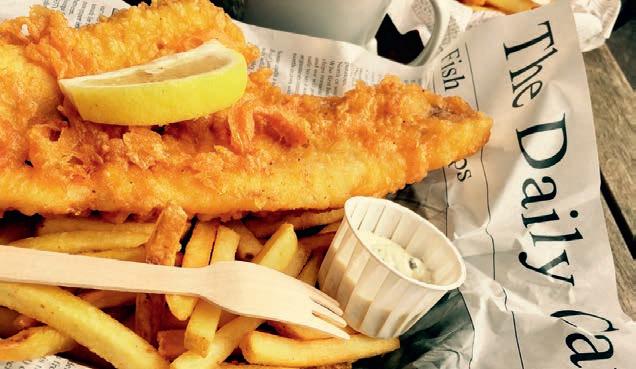
The group’s Q2 EBIT fell from NOK 986m (£73m) last year to NOK 547m (£40m) this time. Grieg farms in Norway and Canada.
Income during the quarter held up well during the period, totalling NOK 2.372m (£175m) against NOK 2.351m (£174m) 12 months earlier.
But profits were dragged down by biological issues, especially in the Norwegian region of Finnmark, where the harvest fell by 4,270 tonnes to 5,573 tonnes. The situation in Rogaland was much better, where the harvest more than doubled to 11,536 tonnes.
Some of these problems such as infectious salmon anaemia (ISA) have continued into Q2, which will impact the annual harvest total.
NORWAY’S cod farmers may be having a tough time financially of late, but what they produce is now attracting increased demand from buyers abroad.The Norwegian Seafood Council reports that 408 tonnes worth NOK 2 . m (£2m) were exported last month. No farmed cod was sold overseas in August last year.
Seafood Council analyst Eivind Hestvik Brækkan said it is now
looking likely that last month’s pattern will continue for the remainder of this year. So far, 5, 5 tonnes of farmed cod have been exported in 202 , which makes up in volume terms 14% of all the country’s fresh cod exports. Cod and haddock make up Norway’s most important white fish exports and are a big favourite with UK fish and chip shops.
Lerøy hailed as climate champion – again
among a number of Norwegian companies.
Others include Mowi and SalMar, two other leading salmon farming businesses, along with the aquafeed company Skretting.
Andreas Kvame, CEO of Grieg Seafood ASA, said the second quarter was good for the salmon industry in general, thanks to strong demand and high prices, which led to increased revenues.
But the company also experienced “challenging” biological conditions, with Finnmark the problem region.

He said: “However, a broad range of mitigating actions to thoroughly address the issues, particularly ISA and Spiro [the parasite Spironucleus salmonicida] in our Norwegian operations, were completed in Q2 and we have started to see positive results. Improved biological control, combined with the transfer of increasingly larger smolt and reduced production time in the ocean, provide the basis for improved fish welfare and performance as well as stronger growth in the coming quarters.”
THE Lerøy Seafood Group has been named a climate champion for the second year in succession by the consulting company PwC in its annual Climate Index for Norway. Lerøy has again come out top
Måsøval appoints new CFO
Lerøy CEO Henning Beltestad said: “We are proud and grateful for this award. This shows that we as a company are on the right course in our important climate work.
“Seafood is a climate-friendly protein and Lerøy has great ambitions for it to become an even more climate-friendly alternative in the years to come.”
NORWEGIAN salmon producer Måsøval has announced the appointment of Anders Hagestande as its Chief Financial Officer. Previously, he held similar positions with the salmon companies Blue Resource Group (formerly Villa Seafood), which has operations in Norway, Scotland and the US, and with Bj r ya AS of Norway. Hagestande has served as Financial Controller in Nova Sea AS and as a business developer in AquaGen AS. Hagestande commented: “Salmon farming is a team sport. Getting a key role in such a strong organisation is a great vote of confidence and means a lot to me.”



Salmon farm staff share £6m bonus at Nova Sea

NORTH Norwegian salmon farming company Nova Sea is to share more than £6m of its profits with its workforce.
Based on an island on the edge of the Norwegian Sea, the company has 33 farming licences, making it one of the largest producers of farmed salmon in the region.
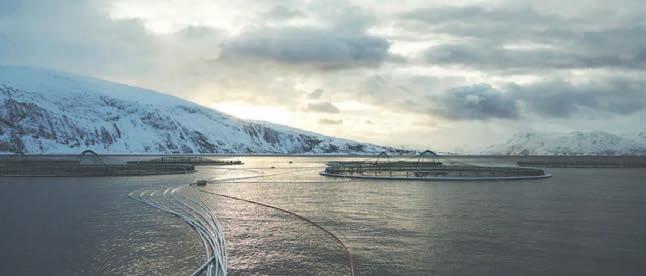
Nova Sea made a profit after tax of more than NOK 1.1bn (£83m) in 2022 against NOK 794m (£61m) a year earlier.
According to the local newspaper Helgelands Blad, it has decided to share part of those profits with its 274 employees.
It means each member of staff should receive an average of
NOK 231,000 (almost £18,000) each. The employees are also being given the opportunity to buy certain shares in the company.
The company regularly shares profits with its staff. In 2021, it was reported to have paid a total of £21.5m to the Nova Sea employees since 2016.
www.fishfarmermagazine.com 14 EUROPEAN NEWS
Above: Grieg farm, Finnmark
Above: Anders Hagestande
Above: Henning Beltestad
Above: Nova Sea staff
Cod farmer in merger talks
be determined. Based on this, Statt Torsk has decided to enter into a period of discussions with Vesterålen Havbruk to further explore the business combination...
TROUBLED cod farmer Statt Torsk has entered into an agreement of intent with the Nordland white fish aquaculture business Vesterålen Havbruk AS regarding a possible “business combination”.

In an announcement to the Oslo Stock Exchange, Statt Torsk indicated that any merger of the businesses was at an early stage.
Vesterålen Havbruk AS is a white fish group primarily located in Øksnes and Bø municipality. It employs around 200 people.
The Oslo Stock Exchange announcement said: “Statt Torsk is pleased to announce that it has received a letter of intent from Vesterålen Havbruk AS regarding a potential business combination, of which the structure is yet to



“No assurances can be given as to the outcome of the dialogue with Vesterålen Havbruk, nor the timing of concluding the process.”
Statt Torsk announced in early August that it was carrying out a strategic review of the business. The company was hit by high mortalities and production difficulties in June, which are likely to cost it almost £1m. Also last month, the company reported that its second quarter losses had more than doubled to NOK 18m (£1.3m).

CORRECTION
Our recent article on Statt Torsk (Health, production issues cost Statt Torsk NOK 12m, Fish Farmer August 2023) incorrectly placed Statt Torsk’s Stokkeneset and Rekvika site in the north of Norway. They are, in fact, in the west of the country, in Stadlandet. Apologies for this error.
Norcod revenues up, but losses also rise
NORCOD saw its revenues rise by almost 40% during the second quarter of this year, driven by increased harvesting, the company has reported.
However, Norcod’s losses also increased by NOK 6m (£450,000) to NOK 47m (£3.53m) during the April to June period.
The pioneering cod farmers revenues totalled NOK 39m (£2.92m) on a harvest of 1,380 tonnes against 963 tonnes a year ago.
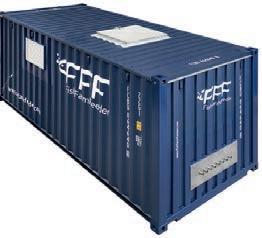
e enues for the first six onths are hi her at NOK 165m (£12m).

It has been a challenging year for Norcod so far. In February, the Norwegian Directorate of Fisheries ordered the co pan to slau hter the fish in t o ca es at a location in the ordland re ion, follo in the disco er of sexuall mature cod in the facility.
Recently, however, Norcod set out a long-term business strategy for sustained major growth. The Norwegian-based business said in its annual report that it is experiencin increased demand for year-round stable deliveries of fresh cod. It announced that it is targeting a near sevenfold increase in its annual harvest by 2027.

www.fishfarmermagazine.com 15
Mowi achieves record revenue for Q2
Swiss Blue Salmon seals deal with VAQ for Alpine farm
SWISS Blue Salmon, the company planning to establish a land-based salmon farm in the Alps, has chosen the Norwegian aquaculture technical company VAQ to build the facility.
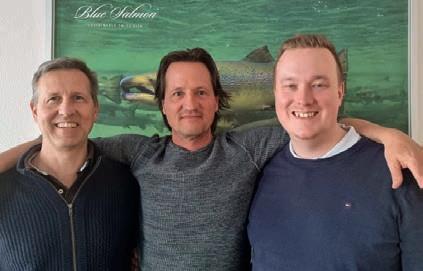

The location is the attractive Alpine canton of Glarus in the east of Switzerland.
When completed, the farm should be able to provide 3,400 tonnes or 8% of the salmon that is imported into the country.
MOWI recently recorded an all-time high revenue of €1.365m (£1.173m) in Q2 2023.
The earnings total compares with €1.32m (£1.058m) in the corresponding quarter of 2022. The operational profit was also strong at €300m (£257m) in the quarter.
Mowi said the record results were driven by strong operational performance in all business areas in addition to good prices.
Mowi CEO Ivan Vindheim said: “Strong volumes, good salmon prices and, most importantly, excellent operational performance by my 11,500 colleagues across the world resulted in a new record-breaking quarter for Mowi. I am pleased to see continuous improvement throughout the value chain.”
Consumer products delivered a seasonally record-high quarter on strong yields and improved operational efficiency. Consumer demand continued to be good, volumes improved and average prices increased.
Mowi’s feed division also had a strong quarter, recording its best-ever Q2 earnings.
Vindheim added: “Sold volumes were a seasonally record high on the back of continued strong growth in sea, which demonstrates the high quality of our feed. Feed composition, effective sourcing, feed performance analysis and collaboration between feed, farming and R&D [research and development] divisions are all key ingredients for the success of our feed strategy.”
Mowi pays a dividend of NOK 2 per share.
In Scotland, the operational EBIT doubled from €20.7m (£17.7m) a year ago to €41.8m (£35m) in Q2 this year, the equivalent of €2.29 per kilo.
Mowi said that, compared to a year ago, the Scotland biological performance had improved during the period with notably higher harvest weight and volumes.
Ivan Vindheim also said the company plans to file a case against the state through the Oslo District Court because it believes the tax to be discriminatory.
Vindheim was one of the most outspoken campaigners against the tax, among salmon farm CEOs, since it was unveiled 11 months ago.

He told the newspaper VG.no: “We believe the bottom deduction linked to the salmon tax is discriminatory and in breach of the EEA rules and the four freedoms, including the free flow of capital.”
Apart from a small proportion of fresh ater la e fish, landloc ed Switzerland imports almost all of its seafood.
But the country has the advantage of good quality water, which makes it ideal for developing a recirculating aquaculture systems farm sector.
VAQ, previously known as Billund Aquaculture Norway, has been working informally with Swiss Blue since last year. The two companies have now contractually agreed a deal for the construction of the recirculation system. une ller, Chief echnical fficer at Swiss Blue Salmon, said that over the past few months, a clear vision and strategy had been set out. VAQ had
revealed a positive attitude towards the ideas of the Swiss and developed “good chemistry” with their own team, he added.
Marius Hægh, who, as Chief Operating fficer, ana es the business at , also welcomed the co-operation.
Møller said his company plans to be a sustainable breeder by adopting state-of-the-art technologies that include artificial intelli ence, achine learning, cloud solutions, digitisation and automation. This is to be at the forefront of developments in the seafood industry.
The company had spent some time reviewing its strategy and VAQ came top of the list, Møller added.
New owners wind up FiiZK subsidiaries
A major restructuring of the troubled FiiZK group, a leading Norwegian supplier of closed and semi-closed cage solutions for the aquaculture sector, has been completed.

The industrial technology company Nekkar and BEWI Investments have together acquired an 80% share in part of the business, which has been experiencing difficulties, and are now the two largest shareholders.
Nekkar and BEWI Invest AS announced their involvement through a joint investment plan.
The FiiZK products includes cage systems, water purification systems and software tools to optimise fish farming planning, operations and analysis. It also has a base in Scotland, which covers the UK and Ireland.
Nekkar has acquired part of FiiZK for NOK 50m (£3.7m), divided into two halves: one in cash and the other in the development of the Starfish, Nekkar’s fully automated, digitally and remotely managed closed fish cage solution. BEWI will invest NOK 25m (£1.87m) in cash. A number of additional minority shareholders will invest a further NOK 10m (£751,000) in the remodelled FiiZK group.
The deal will give BEWI Invest a 41% share and Nekkar a 39% share.
The new investors said following a restructuring process, the new FiiZK group will consist of three business units:
1. Closed cage solutions for farming of fish.
2.Technical textiles, including tarpaulin-based products for fisheries, industry, agriculture and logistics. Aquaculture products include lice skirts, treatment tarps, disinfectant tarps, landing nets and freshwater depots.
3. Digital, which incorporates a suite of software products for aquaculture planning, optimisation, and analysis.
Nekkar CEO Ole Falk Hansen said: “We are delighted to team up with BEWI Invest to jointly develop and position FiiZK for the expected future growth in closed fish cage solutions.
“The integration of FiiZK’s established market position and Nekkar’s Starfish technology strengthens the company’s position as the market leading provider of closed cage solutions and aquaculture software,” he added.
Nekkar’s expertise and experience complement us very well,” said Bjørnar André Ulstein, BEWI Invest CEO.
“Both BEWI Invest and Nekkar will be active in developing FiiZK.”
www.fishfarmermagazine.com 16 EUROPEAN NEWS
Above: Ivan Vindheim
Above: The Swiss Blue Salmon team (L-R): Phil Huber (CFO), Rudolf Ryf (CEO) and Sune Møller (CTO)
Lerøy reports a better Q2, but Scotland still ‘challenging’
THE Lerøy Seafood combined aquaculture and fishing group has reported higher 2023 second quarter revenues and profits.
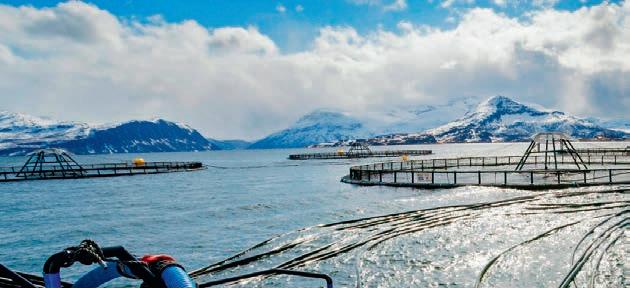
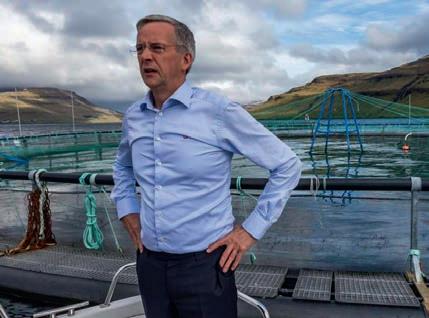
But the company is still experiencing serious problems at Scottish Sea Farms, in which it owns a half share.
The company said the group record high revenues of NOK 7.668m (£575m) were driven by strong prices resulting from a weakened krone.

On Scottish Sea Farms, however, the company said the April to June period was “extremely challenging”.

It added: “The profit contribution from associates and


the joint venture before fair value adjustment related to biological assets was minus (loss) NOK 65m (£4.8m) in Q2 2023, against (a profit of) NOK 70m (£5.25m) in Q2 2022.
“This development can be attributed to a challenging biological situation. Gradual improvement is expected through the second half this year.”
At a group level, the operational EBIT increased by NOK 23m (£1.7m) to NOK 950m (£71m).
The Q2 report said the second quarter has been impacted by price inflation on seafood products and a challenging situation in the farming segment
in the second half of 2022, which has resulted in low harvest weights and a low harvest volume in the first half of this year. The group’s downstream activities showed a significant improvement from the same period of 2022 and, despite lower
Bakkafrost results meet forecast


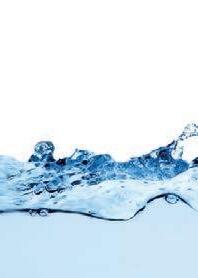
THE Bakkafrost Group reported a Q2 operatin E or profit of ( . ), exactl as predicted hen it issued a profit arnin a fe ee s a o.
his co pares ith an E of ( ) o er the sa e period last ear. a afrost shares fell b on the slo toc Exchan e follo in publication of the results.
he co pan said far in operations in cotland perfor ed ell durin the first fi e onths of this ear, but it experienced hi her ortalit le els to ards the end of the period, hich a affect this ear’s har est.
he cotland far in se ent produced an operational E of ( . ), up b ( . ) on a ear a o, hile the aroese far in and se ent produced an operational E of ( . ) a ainst ( ) in .
CE e in acobsen said o erall, the roup as satisfied ith the results especiall ith its fish eal, oil and










feed se ent, hich deli ered a record quarter.

his ear’s first half result has been record brea in ith all ti e hi h sourcin leadin to all ti e hi h fish eal and oil production. ish eal and oil prices are also at a record hi h.
Har est olu e fro our aroese sal on far s ha e been lo in the uarter due to a bac end loaded har est profile for and lo ean ei hts. or the first ti e past ears,
quotas this year, the wild catch (trawling) operation posted satisfactory results for Q2.
CEO Henning Beltestad said that the long production time for salmon meant it took time for improved performance to be reflected in the results.
e increased the bio ass in the aroe slands durin the cold period of the ear. he bio ass is health and e expect an increasin a era e ei ht of har ested fish oin for ard.
he far in operation in cotland perfor ed ell in the first fi e onths of , but to ards the end of , ortalit le els increased due to en iron ental challen es.
He said this de elop ent has continued into and a lead to lo er than anticipated har est olu es in cotland for .
he co pan as follo in the situation closel and e aluatin a ran e of ris iti atin easures.
he CE explained With the recent expansion of the pplecross hatcher in cotland, the hatcher capacit in cotland is increasin . n , e released the first batch of s olt ei hin bet een to and a lar e batch of to s olt ill be released later this ear.


Aerator


www.fishfarmermagazine.com 17
Water is our element! 50years 1973 - 2023 • Latest aerator development • extremely economical motor • speed-controllable direct drive • High efficiency • Ready for use delivery • Clean Design
Above: Regin Jacobsen
Minimax An der Sauerlandkaserne 1 D-57368 Lennestadt (Oedingen) Telefon: +49 2725 22021-0 info@linn.eu . www.linn.eu LINN Gerätebau GmbH LINN.eu Online Shop
Barramundi focuses on Brunei after Australian sell-off
FINFISH farmer Barramundi
Group has announced a “strategic pivot” to Brunei as a production centre, following the disposal of its Australian assets and fish health setbacks in its Singapore operations.
The Singapore-based company reported its financial results for the first half of this year at the end of August. Barramundi cut its net losses from SGD 11.9m (£6.95m) in H1 2022 to SGD 5.3m (£3.1m) for the same period this year, a 55 reduction. This re ects not only the termination of loss-making activities in Australia and Singapore, but also an aggressive cost-cutting strategy.
Revenue for the half-year was SGD 16.6m (£9.7m), compared with SGD 16.9m (£9.9m) in H1 in 2022, CEO James Kwan reported. He said a reduced sales volume of 714 tonnes (down from 930 tonnes) was compensated by higher retail prices. Barramundi farms the fish of the same name, also known as Asian sea bass, which is a popular high-end seafood dish in Australasia.
In May this year, Barramundi’s Australian business was placed into administration. It was subsequently acquired by Australian salmon farmer
Tassal. Results from Australia up to the point of disposal are re ected in Barramundi’s H1 figures.
In Singapore, meanwhile, trials of a vaccine for scale drop disease virus (SDDV) had proved “inconclusive”, Kwan said, and grow-out operations at Barramundi’s Singapore site were halted with an early harvest of all the remaining biomass.
Pivot to Brunei
The company enjoyed better fortunes in Brunei, however, where it has signed a distribution agreement with premium retailer Ben Foods. It also saw “stellar” results from the trial of its recirculating aquaculture system (RAS) farm, with very good feed conversion rates. Brunei,

a major oil and gas producer in the region, enjoys low energy and labour costs.
Barramundi also said that the Bruneian government are “staunch supporters” of aquaculture.
Chief Financial Officer Vanessa Tan said: “The data strongly supports the case for investment in RAS.”
A grow-out plant on land also avoids the problem of SDDV, which is endemic in southeast Asian waters.
Barramundi now plans to raise capital for a full-scale, land-based RAS facility with capacity to produce 3,000 tonnes annually.
Kwan said: “Lifting the finance burden of Australia means more opportunity to focus on strengthening aquaculture in Brunei.”
Meanwhile, Singapore will be the group’s hub for sales and intellectual property, including the development of vaccines and genetic broodstock research carried out in collaboration with research institutes.
The group’s value-added arm, Fassler, increased revenue from SGD 6.84m (£4m) to SGD 7.36m (£4.3m), but higher energy and raw material costs meant the EBITDA margin was down around 30% to SGD 0.29 (£0.17).
Chile salmon giant reports large revenue fall
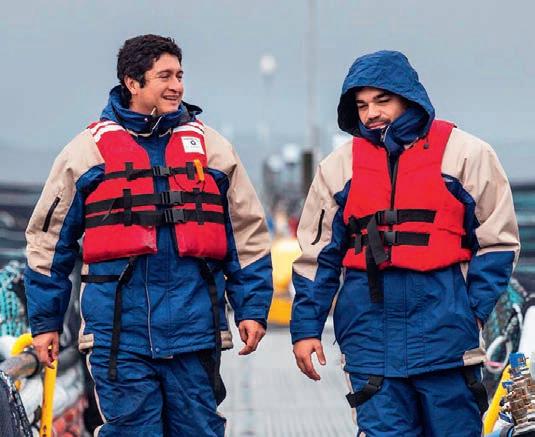
SALMONES Camanchaca, one of Chile’s largest salmon farming companies, has reported a 35% drop in its second quarter operating revenues.
Sales totalled US $63m (£49.5m) during the April to June period. The decline was mainly due to lower Atlantic salmon harvests. They were down by 48% to 6,423 tonnes due to a scheduled reduction in the
company’s harvesting plan, following its previously communicated risk mitigation strategy. The first half Atlantic salmon harvest is 15% lower than a year ago, but is in line with expectations.
The company said Coho smolt stocking to date is expected to double harvest volumes for the 2023 to 2024 season.
Operating revenue for the first half of the year was US $177.2m (£139m), which is in line with the same period in the previous year.
The company said its Atlantic and Coho salmon production target for 2023 is between 56,000 and 60,000 tonnes (whole fish equivalent) and for 2024 is between 60,000 and 65,000 tonnes (whole fish equivalent).
Due to the lower harvests, the EBITDA came in at US $4.3m (£3.38m) in Q2 for sales and margins. The EBITDA for the first half year was US $29.7m (£23.3m), in line with the first six months of 2022, with an EBITDA margin of 16.7%.
The company said smolt stocking has been completed and normal production parameters are now expected. Therefore, Atlantic salmon harvest volumes for 2023 are expected to be between 45,000 and 47,000 tonnes, while Coho salmon harvest volumes are expected to be between 11,000 and 13,000 tonnes.
WORLD NEWS World news www.fishfarmermagazine.com 18
Above: Salmones Camanchaca staff
Above: Barramundi farm, Singapore
Kingfish defeats Maine planning challenge
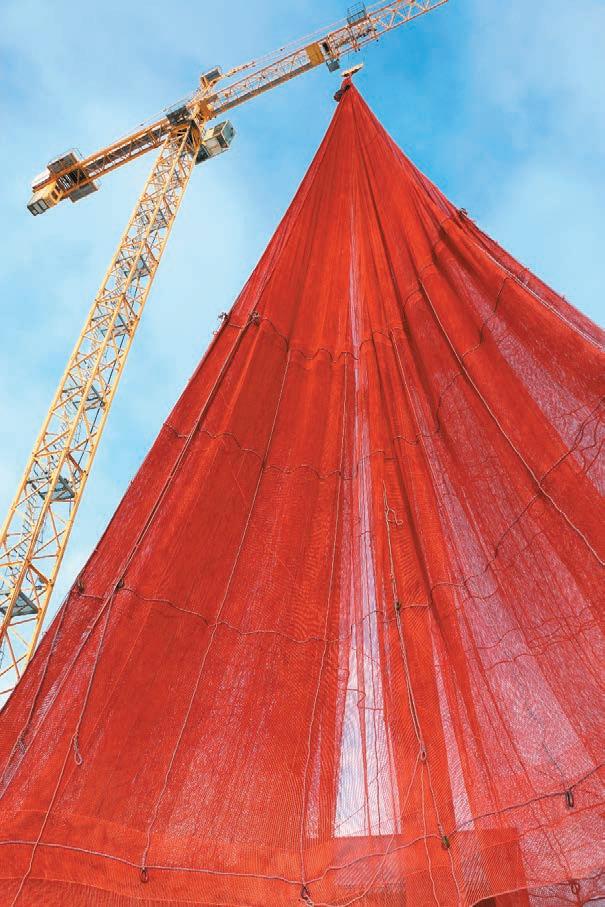
A legal bid to stop The Kingfish Company’s land-based yellowtail farm in Maine, USA has failed at the appeal stage.
The project, which would mean a recirculating aquaculture systems farm is built near onesport, Maine, had been opposed by the Roque Island Gardner Homestead Corporation and Eastern Maine Conservation Initiative. However, the Superior Court of Maine found in favour of the initial decision to grant the project planning consent.

The Location of evelopment Act and Natural Resources Protection Act (NRPA) joint permit had been issued by the Maine epartment of Environmental Protection in 2021 and affirmed, on appeal, by the Maine Board of Environmental Protection (BEP) in 2022.
Megan Sorby, Kingfish Maine Operations Manager, said: “The opposition from Roque Island continues to be unsuccessful in its appeals of the Kingfish Maine project. This latest appeal denial is a clear victory for Kingfish Maine and more importantly the residents of onesport.
“Kingfish Maine will bring economic development to the owneast region part of the northeastern coast New England and some Canadian Maritime areas and that cannot be controlled by Roque Island. We are excited to
celebrate this Superior Court victory with the community of onesport.”
In the appeal, the petitioners raised issues with what it claimed was the BEP’s “failure to independently assess the project’s impact on wildlife under NRPA.”
The court ruled: “While petitioners ask the court to vacate the board’s decision, upholding both the NRPA and site law permit, petitioners’ challenge is based on the alleged
Netwax E4 Greenline
violations of NRPA and they mount no meaningful challenge to the lawfulness of the site law permit.”
The court concluded: “…the board did not violate NRPA or otherwise act unreasonably by failing to independently assess the project’s ef uent discharges…”
Once the onesport Maine facility is fully operational, Kingfish Maine is projected to produce 8,500 metric tonnes of yellowtail.
www.fishfarmermagazine.com 19
29.06.2023
Above left: Kingfish Maine site design
Slalåmveien 1, NO-1410 Kolbotn, Norway Ph.: +47 66 80 82 15 - post@netkem.no Probably the most sustainable antifouling product for pen nets ► Powerful waterbased antifouling that offers excellent protection against fouling ► Safe for the fish and for the environment ► Protects against UV radiation ► Controlled leaking of the active ingredient ► Free from PFAS ► Free from microplastics
NEWS IN BRIEF
assal set t enefit f ndia t ade deal
India Economic Cooperation and Trade Agreement to enter this potentially huge south Asian market for the first time.
Take fresh approach on aquaculture, new Canadian minister urged
DIANE Lebouthillier, Canada’s new Fisheries Minister, has been urged to take a more pragmatic approach to salmon farming in British Columbia.
TASMANIAN salmon farming company Tassal is poised to net a potentially large export breakthrough, following a trade agreement between Australia and India. Tassal is taking advantage of tariff cuts under the Australia-
Tassal, Australia’s largest salmon producer, became part of the worldwide Cooke Seafood group last year. It has been working with Austrade, Australia’s national investment promotion agency, to open up trade with India.

So far, Tassal has exported around 30 tonnes of salmon to India, but hopes to increase that amount to 100 tonnes over the next 12 months.
Cooke appoints Morubel chief
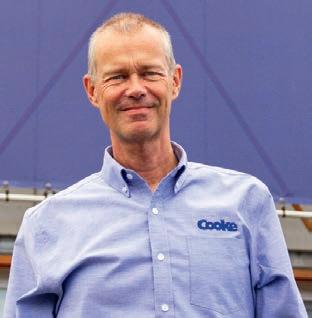
COOKE Inc has named Johan Brouwer as the new Managing Director of Morubel and Executive Frozen Sales Leader for Cooke Europe. Based in the Netherlands, Mr Brouwer is a 25-year veteran in seafood and brings significant experience in food service, retail sales and account management. He is joining Cooke from Veramaris, where he was the Director of Business Development.
Morubel is the leading shrimp processor in Western Europe,

cultivating, processing, packing and distributing shrimp and other seafood products.
Lebouthillier took over from Joyce Murray in July after the latter was removed by Prime Minister ustin Trudeau in a cabinet reshuf e.



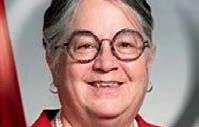

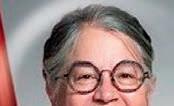
Murray, who has said she will not be standing for re-election, had planned to end open pen salmon farming in British Columbia in the face of widespread opposition from the industry.
Now Timothy Kennedy, CEO and President of the Canadian Aquaculture Industry Alliance, has issued a statement urging the new minister to think again on this policy.
Congratulating Lebouthillier on her appointment, he said: “Salmon farming in British Columbia has faced significant policy challenges in the last few years, resulting in a reduction in food production and jobs, and higher food prices for Canadians.
“Under this new minister, we are optimistic for a fresh, innovative and pragmatic approach to growing and leveraging the competitive advantage that Canada’s ocean resources offer.”
Kennedy said wild caught seafood cannot meet growing domestic and international demand. In response, aquaculture has grown substantially worldwide.
“Each year, demand is expected to grow annually by 6.90% (CAGR 2023-2028). This has led to nations such as Norway, UK, Iceland, Chile and the United States significantly expanding their capacity.”
The new minister, he suggested, can lead a new, modern policy and regulatory environment to get Canada back on track.
Proximar prepares for first Mount Fuji salmon harvest
Nordic’s Shanghai salmon farm ‘on track’
NORDIC Aqua Partners has said the development of its land-based salmon farm near Shanghai in China is proceeding according to plan. Presenting its second quarter results, the company announced that stage one, comprising an annual production capacity of 4,000 tonnes, will be completed in the first quarter of 2024.
Capital expenditure during the April to June period totalled DKK 29 million (£3.3m); the operation also enjoyed good biological performance for all batches with the first batch reaching an average weight of 900g in August.
The company had available liquidity of DKK 475m (£54m) at the end of June, including cash and undrawn credit facilities.
PROXIMAR Seafood is strengthening its production team in readiness for its first salmon harvest near Mount Fuji, Japan in around 12 months’ time.
Presenting its second quarter results, the Norwegian land-based farming company said it has now completed acquisition of the land, adding that the transfer will reduce financing costs as announced in the initial plan.

Proximar has also made the first drawdown of the loan of 8.8 billion Japanese Yen (£55m) provided by Mizuho Bank, Shizuoka Bank and the Development Bank of Japan.
Among the other second quarter highlights were the continued recruitment of new employees, strengthening of the local production team and transitioning focus from construction to production activities.
A new Chief Finance Officer is also in place, Ole Christian Willumsen, who has long-term international experience, including in Japan.
CEO Joachim Nielsen said: “I am pleased that we have completed the construction works of our 5,300 tonne facility according to schedule after many years of planning and more than two years of construction activities.
“This marks an important milestone for the company and we are now focusing our efforts on production and harvesting of the first Atlantic salmon at our facility in Q3 next year.”
The company’s net loss was NOK 24.2 million (£1.8m).
Last year, Proximar entered into a 10-year exclusive distribution agreement with the Marubeni Corporation.
www.fishfarmermagazine.com 20 WORLD NEWS
Top: Diane Lebouthillier
Above: Tim Kennedy
Above: Nordic Aqua Partners Ningbo illustration
Above: Johan Brouwer
Above: Proximar nursery, Oyama
Atlantic Sapphire breaches loan terms as losses mount
FLORIDA land-based salmon farmer Atlantic Sapphire saw its losses more than triple during the first half of this year.
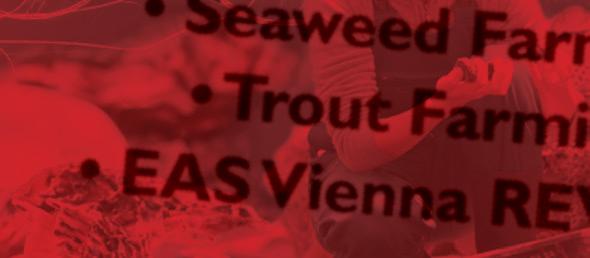


The company’s 202 half-year report also shows that the company is in breach ofits loan terms as a result of its financial performance.

Now Atlantic Sapphire has engaged DNB Markets and Arctic Securities to explore potential funding routes in this respect to ensure a sufficiently large cash buffer.

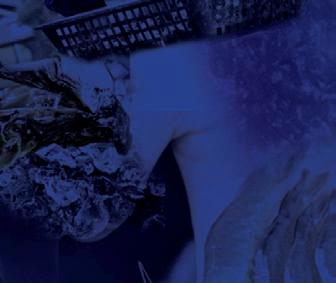

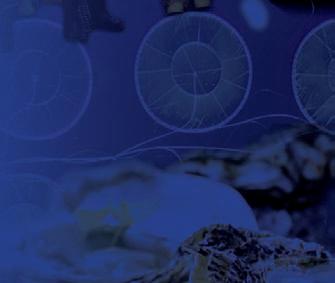
The company has also restricted expenditure on phase two of its Florida facility, which looks likely to slow the project’s progress. Half-year revenues fell from US . m (£ . m) in 2022 to 8.1m (£ .48m).
The operating loss or EBIT was 4 . m (£ 5m) against 12. m (£ .84m) in H1 last year. The results before and after tax show a loss of 48.4m (£ 8. m), up from 14.5m (£11. m) a year ago. Main points from the half-year report include:
• a focus on heavy infrastructure upgrades and operational improvements, with approximately 2,100 tonnes (live weight) of gross biomass gain and harvest volume of 8 0 tonnes (gutted weight);


• a decrease in revenue driven by lower volume, partially offset by higher sales prices;

• consistent price achievement of 12 per kilogram HOG on premium fish – an increase in overall cost per kilogram of biomass produced compared to H1 2022;

• internal reorganisation of the company initiated to streamline the organisation and strengthen operational resources;


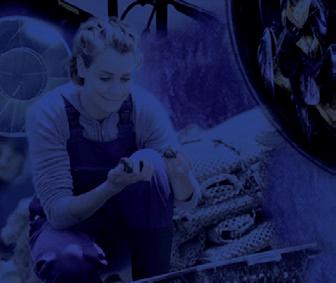











• phase two construction at the US site, which is currently focused on design and optimising quality and cost of the project, limiting actual capital expenditures for the project to a minimum; and
• extension of the debt facilities with NB to April 2025 and successful completion of a 55m (£44m) private placement.
Earlier in August, Atlantic Sapphire disclosed that, due to higher water temperatures, the company was experiencing lower than expected biomass growth in the current (third) quarter, which is likely to lead to lower revenues in the second half of the year.
Above: Bluehouse salmon, Atlantic Sapphire
www.fishfarmermagazine.com 21
COMING IN THE NEXT ISSUE... Fish Farmer In OCTOBER: • Land based Farming • Waste Management & the Circular Economy • Seaweed Farming • Trout Farming • EAS Vienna REVIEW For more information on opportunities for advertising with editorial content around these subjects please contact: Janice Johnston 0044 (0) 131 551 7925 ohnston fishfar er a a ine.co Copy deadline - Friday 29 September Looking to recruit? Fish Farmer Post your vacancy on .fishfar er a a ine.co Contact Janice Johnston 0044 (0) 131 551 7925 ohnston fishfar er a a ine.co for only £225 (+vat) per job posting.
Iceland Seafood sells UK business to Danish giant
ICELAND Seafood International is to sell its UK operation to the Danish seafood group Espersen.

The salmon and whitefish group said it had finalised its due diligence process. Transaction documents are currently being completed for the sale of its loss-making subsidiary.


The news comes as ISI also reports that high salmon prices are having a negative impact on its profitability.
Two previous attempts to sell the business (which employs almost 200 people) late last year and at the start of this year broke down.
Espersen is seen as a world leader in fish processing with customers in Europe, the United States and Australia. A significant part of its sales are to the UK retail market.
The majority of its products are tailormade to local markets’ and customers’ needs with salmon, shrimp, cod and haddock among the most frequently used raw materials.
Iceland Seafood said completion of the transaction will take place during September when certain conditions in the transaction documents have been fulfilled. At completion of the transaction, Espersen will own 100% of Iceland Seafood UK.

In addition, the property, equipment and machinery will be sold from IS UK to Iceland Seafood Barraclough (a 100%-owned subsidiary of ISI) at completion and then leased back to IS UK.
Last night’s statement added: “In the case of the property, a leasing agreement has been agreed, where the lessee has a purchase option at the end of the leasing period.
“In the case of equipment and machinery, a hire purchase agreement has been agreed, where the lessee will get ownership of the assets at the end of the leasing period.
“Asset valuation in ISI balance sheet at the end of June reflects the

valuation of these agreements, resulting in total impairment of fixed assets of £7.1m, which is included in the loss from discontinued operations.
“At completion, ISI said it will convert intercompany loans into equity and inject further equity to net out negative equity balance and compensate for operating losses to the end of the year, as agreed between parties.”
The negative impact on ISI’s profit, loss and equity this year until the sale completes is estimated at £15m.
ISI suffers from high salmon prices
Meanwhile, in its results for the first half of 2023, ISI has reported that halfyear group sales rose by 7% to 222.3m (£191.6m).
Sales slowed down during the second quarter from April to June, however, and were 7.6% lower compared with the same period in 2022.

Lower sales and a decline in margins, along with higher finance costs, especially in southern Europe, were the main cause for a decline in profits.
The half-year net loss was 15.08m (£13m) against a net loss of 2.9m (£2.5m) a year ago.
High salmon prices negatively affected the group’s second quarter results in Ireland and Spain, ISI said, but the price of various whitefish and shellfish species had dropped in
recent months, some significantly.This had led to unusually low margins and inventory write-offs in some instances, which mark the Q2 results especially in southern Europe.
CEO Bjarni Ármannsson said: “Q2 was another quarter impacted by high input costs, especially in salmon, but also continued lower prices of whitefish and shellfish.


“Salmon has also reduced in price – naturally, given the seasonality in production. All this amplifies the reduced demand at high prices amongst European consumers, who have been heavily impacted by worsened economic conditions.

“Again, as in Q1, our Argentinian operations didn’t contribute much to our profitability. With adjustments in our inventories, we are loss-making and have reduced our outlook bracket for the year significantly.”
He added: “We believe we’ll start to see an increase in demand during winter as prices have adjusted. We still have a positive attitude towards our Christmas season, our most important sales season. We believe our brands and position will deliver good margins and results, especially in Q4.”
Processing news PROCESSING NEWS www.fishfarmermagazine.com 22
“
Q2 was another quarter impacted by high input costs ”
Above: ISI’s plant, Iceland Middle: ISI CEO Bjarni Ármannsson Bottom: ISI salmon recipe
Skaginn 3x closes one Iceland base with loss of 27 jobs
THE Icelandic seafood technology company Skaginn 3x is closing its base in the important fishing and fish farming town Isafjord, with a loss of 27 jobs.
CEO Sigsteinn Gretarsson said things had become difficult over the past few months, with unrest in the markets following Covid and the outbreak of war in the Ukraine.
All 27 employees in Isafjord have lost their jobs with the operation transferred to its other Iceland office in Akranes.
Arna Lara Jonsdottir, the mayor of Isafjord, said the news was not just a blow for the community, but more especially for those who had lost their jobs.
Skaginn 3X has its headquarters in Iceland, but has offices and partners around the world.
The company offers a range of patented chilling, freezing and thawing solutions as well as efficient food processing systems designed to maximise product
quality and increase yield, throughput and overall efficiency.
In late 2020, the German processing machinery supplier Baader announced plans to acquire a 60%

ng s c nfi s i s fact cl s e
YOUNG’S Sea ood es erda con r ed e c osure o one o i s ri sb produc�on si es i e oss o ore an obs
e decision is ou o be e resu o osin e con rac s o ri a ri sb sea ood processors
e co pan rs announced in id une a i s ac or in arsden Road ri sb as no on er nancia sus ainab e and i as p annin o o e opera�ons o i s ar er ri sb si e i e s o ed s processin ou d be rans erred oun s si e in raserbur Sco and
e decision o e er is a boos or raserbur ic rea ened i c osure in a er i os a Sainsbur s sa on con rac our ears a er oun s con ro ersia c osed e inne s sa on ac or in nnan i e oss o obs Sa on produc�on o ed o ri sb e co pan ic is no par o e
anadian So na ood roup said es erda a i ad been unab e o nd a iab e so u�on o e ardsen Road si e e s a e en added: o o in e announce en o a or a consu a�on i s a and represen a� es a e arsden Road si e in ri sb in une is ear i is i re re a e a e been unab e o nd a iab e so u�on o ain ain u ure produc�on a e si e
e re ainin i e s processin under a en b So na oods urope i o e o e Hu bers one Road si e in ri sb and e s o ed processin o our raserbur si e in Sco and
added: e c osure as been necessar o o in c an es in u ure de ands or produc s produced a e si e and e e p ored a nu ber o op�ons o ain ain opera�ons and o pro ec ro es Sad is as been unsuccess u
shareholding in Skaginn 3X, which at that time was a competitor. It later acquired the remaining 40%.
Seafish advises UK firms on immigration rules
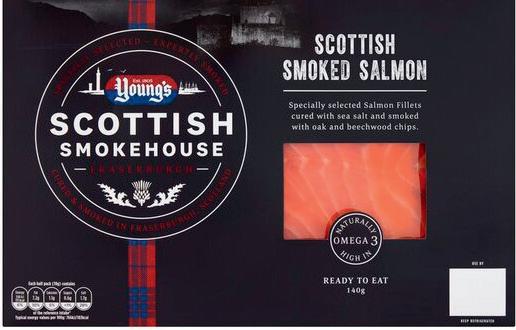
UK industry authority Seafish has published new guidance to help seafood businesses employing workers from outside the UK better understand immigration requirements.

Companies wishing to employ migrant workers in the seafood industry, either onshore or within 12 nautical miles of the shore, are likely to need to use a Skilled Worker visa.
Access to labour has been a challenge for the seafood industry in recent years, with many businesses struggling to fill roles since the UK left the European Union.
The visa allows migrant workers to take up certain skilled jobs in the UK, including experienced filleters, seafood processing line operatives and deck crews.
Now Seafish, in collaboration with Darren Stevenson of law firm Wiggin LLP, has put together five guides outlining the steps that a business should take to become a sponsor, which is the first step in employing non-UK workers under the Skilled Worker visa.
The guides can be downloaded from www.seafish.org/safety-and-training/careers-inthe-uk-seafood-industry/employing-workersfrom-outside-the-uk
www.fishfarmermagazine.com 23
Above: Skaginn freezers
Warning signs
Changes in the body fat of mackerel may give a clue to a factor in the decline of wild salmon. By


 Dr Martin Jaffa
Dr Martin Jaffa

SOME years ago, a study undertaken by the University of Stirling found that the fatty acid composition of more than 3,000 salmon, farmed between 2006 and 2015, had changed with an increase in terrestrial fatty acids and a decrease of marine-based EPA and DHA levels.
This was not surprising, since the composition of salmon feed was forced to change due to the combined effects of criticism from so-called environmentalists and rising prices. The fish oil content was reduced and replaced by terrestrial oils such as soy, sunflower, linseed and camelina. Inevitably, changes in the feed led to changes in the body composition of the fish.
A new study from the University of Aberdeen funded by pelagic fishermen, yet to be fully published, has found that from around 2010, there has been a sharp decrease in the body fat content of caught wild mackerel. The research team looked at the results of fat analyses conducted by various processors in Scotland and the Netherlands. The processors had observed the changing composition of the fish but found they were still within the range demanded by their customers.
The reasons for these changes are unclear. Unlike farmed salmon, wild mackerel eat what is available in the marine food chain. One theory is that the increasing size of mackerel stocks, which I have discussed in past years, may be facing increased competition for food and therefore are not receiving the same levels of nutrients as in previous years.

However, as I have previously highlighted, some of the mackerel are growing to huge sizes, which is thought to be due to possible cannibalism; in other words, the larger fish are eating the smaller ones.
The possibility that mackerel are eating other fish has also been proposed as a possible reason why wild Atlantic salmon numbers have declined, with newly migrated smolts becoming food for larger mackerel.
At the same time, it has been observed that returning salmon appear to be generally larger, leading to the hypothesis that those smolts, which manage to survive being consumed by larger mackerel, are then able to grow and benefit from the availability of young mackerel.
Equally, it is possible that climate change is affecting the availability and nutrient value of marine plankton, which forms the basis of the food chain on which larger fish feed. The question is whether any changes in mackerel fat content is reflected in the wider environment. More specifically, are wild Atlantic salmon also suffering from poorer fat content and if so, is this affecting their ability to return to their home rivers and successfully breed? Could it be that changes in the nutrient chain are impacting the numbers of wild salmon returning to Scottish waters?
Ten years ago, Professor Chris Todd of the University of St Andrews wrote about the phenomena he called “skinny grilse”. He had been measuring the condition factor of returning salmon and noted that many fish were not only less wellnourished, but also underweight. Some fish he measured weighed around 25% less than expected. The worst year was about 2006; since then, there has been a slight improvement but the condition factor has remained consistently low.
The warning signals that mackerel have been sending out in their fillets have been ignored
”
www.fishfarmermagazine.com 24 COMMENT
Top: Freshly caught mackerel
Above: Mackerel swimming

Opposite: Tinned mackerel
Smaller fish produce fewer eggs and this also suggests the possibility that less fat means the eggs are of poorer quality. It is unclear how these changes are impacting the overall numbers of wild fish. The problem now is that since the Scottish Government banned netting, wild Atlantic salmon can no longer be examined in large numbers. For the past few years, there is no information about the current state of wild Scottish salmon. The mackerel data goes back to 2006 so some comparisons could be made as to changes in mackerel body comparison and that of salmon. The mackerel study has more to do with the suitability of mackerel for processing and it is unlikely that their study could be extended to look at any historical salmon data. The changes in mackerel body fat should be concerning to those working with wild Atlantic salmon, but it seems that any work in this area ceased with the closure of the nets.
Changing body composition is yet another potential reason why

management. This is because they already have their scapegoat, who they can blame for the declines in wild salmon numbers. This is, of course, the salmon farming industry.
If even half the money being directed at sea lice research and the imposition of the sea lice risk framework was spent on looking at alternative reasons behind wild salmon’s declines, there might still be some chance to safeguard wild salmon for future generations.
Sadly, the warning signals that mackerel have been sending out in their fillets have been ignored.
If there is no understanding of what

EMPOWERING World leading
electric underwater robotics
saabseaeye.com
Saab Seaeye
The vital role of salmon farms

to tackle rural depopulation is to ensure local business


prosper, says Salmon Scotland chief executive Tavish Scott


NO matter how many times I meet people who work across the salmon farming sector, there is always something new to learn.
Two recent visits fully encapsulate that. Firstly, to Maclean’s Point at the far end of Ardnamurchan, a beautiful, remote part of Scotland where, next to the CalMac ferry pier and the crossing to Mull, is a Mowi shore station and farm.
Rosie Curtis is the site manager leading a super team of people. She epitomises salmon farming – not only does she lead the business at her farm, but she is also the local fire cover and coastguard, and shares agricultural responsibilities with her family.
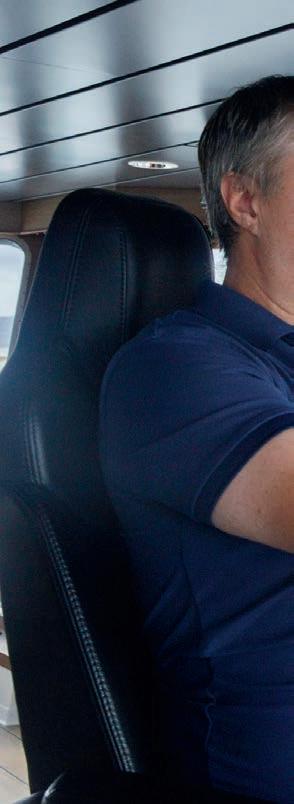
Rosie is the heart of her community. She reminds me of Shetland and home, and why the sector is so important for coastal communities.
Governments have much to say about halting rural depopulation. Well, the best way to address this is to make sure that businesses do not just survive, but prosper.
Scotland’s coastal areas need more salmon jobs and more people like Rosie. Our sector pays well, with an average salary of £36,000
per year. That is a good wage with good conditions in places where well-paid jobs are few and far between.

Salmon farming is intrinsically linked to the success of such areas. And success is about more than just our sector, because rural economies are interrelated.
The reason for my recent five-hour Edinburgh-to-Ardnamurchan trip was to meet a TV crew from the BBC Countryfile team, who all stayed locally.
Had it been an Aquaculture Stewardship Council inspector or an Inverness-based regulator, they would probably have stayed locally as well. This is just one way we help that wider economic picture.
B&Bs, guest houses or the majesty of Mingaly Hotel all need a chef, staff and an operator.
There is, of course, a downside for farming teams with the constant inspection regime that our sector is subjected to, which makes workloads considerable.
But the upside is that when people stay locally, they buy dinner at night and a snack or juice from the local shop, and just may miscalculate on the satnav and then have to put £20 worth of unleaded in the car. It all helps.
On a stunning Wednesday with the majesty of the Loch Sunart stretching into the distance, we fielded the BBC’s questions. They were fair but pointed.
I did not get the range of issues I expected because as interviewer Tom Heap explained, Rosie had answered the BBC’s practical questions about farming fish.
We reviewed all this once the BBC had left and my biggest takeaway was simple
SALMON SCOTLAND
Success is about more than just our sector, because rural economies are interrelated
The best way
can
”
Above: From left Helgi, Torcuil Crichton and Ian Murray
Left: Salmon a er treatment, West Loch Roag
www.fishfarmermagazine.com 26
Opposite: The Bakkafrost farm at West Loch Roag
and not new: the more we can take media people, commentators and opinion formers to our farms and let sector leaders such as Rosie talk them through the reality (not the perception) of farming, the more people will learn about the positive role we play.
That’s why we regularly invite journalists and politicians to leave urban centres behind and see the reality with their own eyes.
The Shadow Scottish Secretary pays a visit to Lewis
Fast forward to the second recent visit I mentioned, this time to West Loch Roag. For this trip, we were welcoming politicians, not the media (although we took Lewis’ favourite local snapper Sandie with us).
Ian Murray is Labour’s Shadow Scottish Secretary and if the polls are to be believed, then sometime in 2024 he will be in the UK Government Cabinet.
Ian is an Edinburgh MP well-known for a community-led campaign to save Hearts FC, to his considerable credit – and I say that as someone who does not support Hearts.
Ian was visiting the Hebrides to support Labour’s new parliamentary candidate for Na h-Eileanan an Iar, Torcuil Crichton.
Torcuil was a highly respected Westminster political journalist who – as we might say – has now jumped from one sea pen to another.
The aim of the visit was to ensure that a potential MP and a potential UK
Government Minister fully understood the sector.
Bakkafrost’s Iain MacIntyre and Lewis area manager Davy Blair were the salmon farm tour guides. They and the rest of the team were excellent hosts, answering questions on everything from warming seas to fish survival.
Out at the farm, a Sølvtrans treatment boat was ensuring the fish were healthy and growing.
There was a barrage of questions from our visitors and the Bakkafrost team didn’t shirk one. Sea water temperature changes
are a challenge for the sector, for example, and the Bakkafrost team explained that to the visiting politicians.
Ian and Torcuil confirmed that a couple of hours on a sea farm was the way to learn and understand. Our aim is to ensure that Keir Starmer will be next to see salmon farming at first hand.
This trip was also a great reminder that we live in a small world.
Some years back I was at Uyeasound in Unst and Denis Johnson took me aboard a wellboat working under contract for Cooke.
We went up to the wheelhouse to meet Helgi, a gregarious Norwegian. So who was operating the vessel in West Loch Roag? Yes, Helgi.
We shared stories of Shetland, the Noost bar and various other matters, which are not repeatable.

Helgi was the perfect host and not just because the Norwegians aboard produced a perfect cup of coffee. He explained simply but directly the advantages to the fish of the boat he was operating.
It is a colossal capital investment in fish health.





The day rates charged to our production companies for the hire of these vessels are, inevitably, significant. The complexity of the machinery is great, fresh water is produced on board, no chemicals of any kind are used on the fish and there is constant surveillance by the farm team to assess fish health, weight and other key indicators.
I was both encouraged and proud of the steps our sector is taking to maximise fish survivability and minimise stress.
On these trips – and many more like these – we have demonstrated how we are innovating, changing and learning. That is the positive reality of salmon farming.
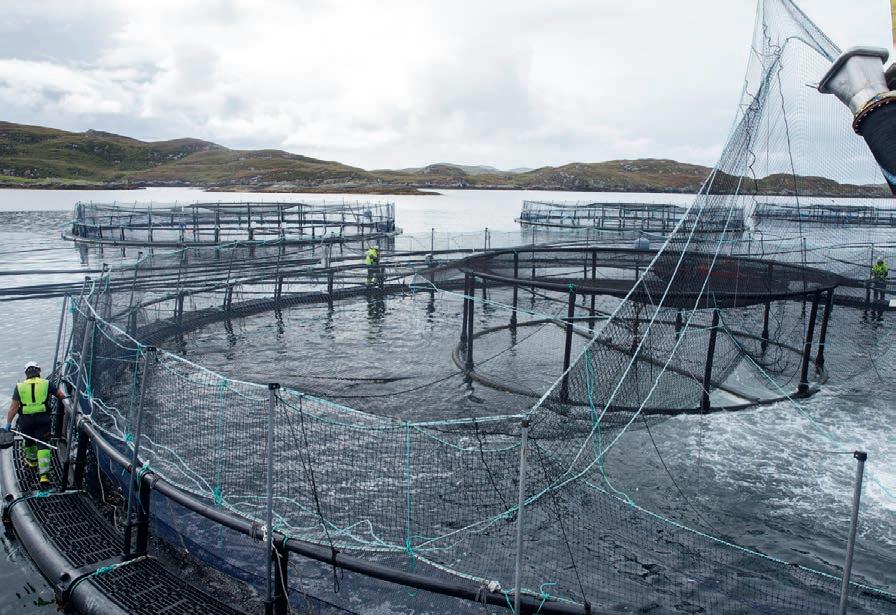

www.fishfarmermagazine.com 27
Celebration… and disappointment
Shellfish producers are celebrating the oyster this month, but frustration over export red tape continues. Nicki Holmyard reports


the challenges and opportunities that a fully digital end-to-end journey raises,” the Minister said.
“This service will draw upon the lessons learnt in the pilots, be optimised for trader business models and build on existing systems to develop a fully digital service for EHCs. We will proactively engage with industry throughout the design of this service. We anticipate that this approach will form part of the Single Trade Window for exports,” he added.
It now seems unlikely that anything will be rolled out until at least 2024 and it belies all reassurances given by Defra to UK aquaculture businesses over the past two years that the introduction of a new system was imminent.
This is very, very disappointing, Minister.
IT’S a bit of a mixed bag this month on the shellfish front, with news of ongoing government delays over electronic export health certificates (eEHCs) for export, local authorities finally authorised to allow shellfish producers to collect statutory samples and a line-up of seafood festivals.
When opening the Shellfish Association of Great Britain (SAGB) conference in May, the Rt Hon Mark Spencer MP, Minister for Food, Farming and Fisheries, promised to look into the matter of why we still do not have an eEHC system in place for live bivalve molluscs (LBMs) and other seafood.
It is now seven years since the Brexit vote and aquaculture businesses are not unique in struggling with an export paperwork system that makes trade inefficient, difficult and simply painful.
SAGB CEO Dave Jarrad recently received a response from the minister, explaining that several aquaculture businesses had trialled an eCertification beta testing programme for EHCs. However, as reported in this magazine (see UK news, from page six), the exercise was stopped with no warning over the summer “to enable the next phase of development”.
“Feedback and insights from this testing have been vital to further developing our understanding of business processes and







Oyster extravaganzas
On the edible shellfish front, September offers a wonderful line-up of events.
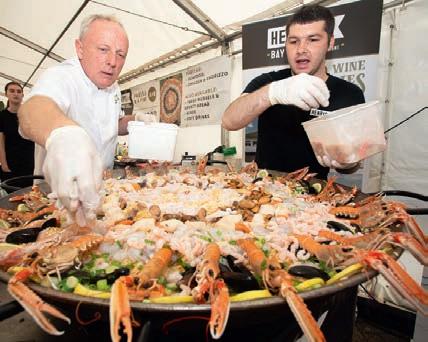
First off is Seafeast, the Dorset Seafood Festival, which at the time of writing was due to take place on 9 and 10 September

www.fishfarmermagazine.com 28 SHELLFISH
We need the public to ask for native oysters specifically
”
Above left: Tony Singh with oysters at the Stranraer Oyster Fes� al
Left: Giant paella at the Stranraer Oyster Fes� al
Opposite from top: Loch Ryan Oyster Fishery team at the Stranraer yster Fes� al the Oyster Bar at the Stranraer Oyster Fes� al
Photo Allan De lin
Photo: Pete Robinson
in Weymouth. The event offers music, cookery demonstrations, a kids’ cooking workshop and plenty of good food, with mussels and oysters featuring alongside crab, lobster and other seafood delights. The return of the native oyster (Ostrea edulis) is being celebrated at two events: the Stranraer Oyster Festival (15 to 17 September), which incorporates the Scottish Oyster Shucking Championship and the London Oyster Opening Championship. This latter event replaces the former Tabasco British Oyster Opening Championship.
Oyster opening competitors will be judged on their speed of opening, technique and presentation, and the winners of both competitions will represent their respective countries at the World Oyster Opening Championships in Galway, Ireland later in September.
My one claim to fame is being a former holder of the Scottish title, which was resurrected at the Oban seafood festival – but that was a long time ago!
Organisers of the Stranraer Oyster Festival, including Tristan Hugh-Jones of the Loch Ryan Oyster Fishery, are calling on the public to help play their part in safeguarding our indigenous oyster beds by asking for native instead of Pacific oysters (Magallana gigas – formerly Crassostrea gigas) when they dine out.
Loch Ryan native oysters are being used to help re-seed native oyster restoration projects across the UK and in Germany.
Hugh-Jones said: “Right across Europe, there’s a huge amount of interest in the restoration of native oyster beds, but to do that sustainably we need to be able to sell them. Which means we need the public to ask for native oysters specifically. The more people eat and enjoy natives, the more they’ll support native oyster breeding and growing. It really is that simple.”
The Stranraer Oyster Festival organisers have pledged to return the shell of every oyster eaten over the weekend back to Loch Ryan to create a new shell habitat for young oysters.




The event offers a weekend of fun, with celebrity chef demonstrations, live music, an artisan market, children’s entertainment, a massive oyster bar and a pyrotechnic
aerobatic display. More information and ticket booking can be found at www.stranraeroysterfestival.com.
The London Oyster Championships (www.londonoysterchampionships.com) take place at Bentley’s Oyster Bar and Grill in Mayfair and will bring together some of the capital’s finest shuckers. A celebrity air will be brought to the festivities by its host Stephen Fry, actor, comedian and oyster aficionado, whose dry wit will no doubt lend an interesting turn to the proceedings.
And finally, the big one: the World Oyster Opening Championship on 23 September.
This is described as the very raison d’être of the Galway International Oyster and Seafood Festival. It is here that competitors from all over the world compete for the acclaimed international accolade. This event, with its live music, bars and seafood, should be in everyone’s calendar.
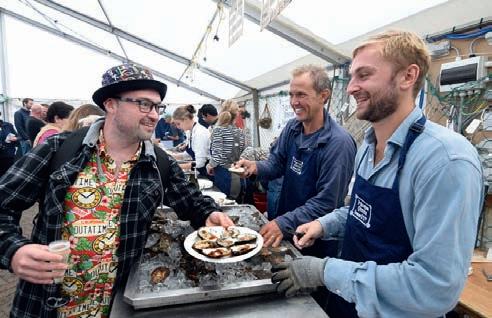
An exceptional oyster, at the heart of our collection
An exceptional oyster, at the heart of our collection
The ORKA oyster is selected for its survival rate, its shape and its colour, all for the sake of meeting your expectations.
The ORKA oyster is selected for its survival rate, its shape and its colour, all for the sake of meeting your expectations.
Variété : Crassostrea gigas oyster
Variété : Crassostrea gigas oyster
Tailles : G1.5 to G8
Tailles : G1.5 to G8


Le Terrain Neuf 85740 L’Épine - France • Tél. +33 (0)2 28 12 95 11 • marinove.com
22_1557_MARINOVE_AP naissain 180x135 EN.indd 1 24/03/2023 16:18 Le Terrain Neuf 85740 L’Épine - France • Tél. +33 (0)2 28 12 95 11 • marinove.com B17 Communication 02 40 89 78 7422/1557 03/2023Crédits photos : © S. QuesterbertStudio Élements ©Marinove
22_1557_MARINOVE_AP naissain 180x135 EN.indd 1 24/03/2023 16:18 www.fishfarmermagazine.com 29
Photo: Pete Robinson
Photo olin Ha� ersley
Together again
Aquaculture’s biggest trade show was back in Trondheim and it did not disappoint
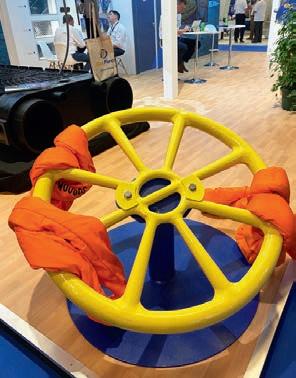
The Scottish Pavilion returned to Aqua Nor 2023 and was jointly supported by Highlands and Islands Enterprise, the Sustainable Aquaculture Innovation Centre and the Scottish Government (for more details, see page 36)

CEO of the Nor-Fishing Foundation
Kristian Digre and the organisation’s Exhibition Manager Kari Steinsbø said: “There are several things that sum up this year’s Aqua Nor. We have had a fantastic atmosphere at this year’s exhibition – and we can see that everyone really enjoyed it.
THE aquaculture sector in Norway had been experiencing unsettled times – both in the form of Storm Hans, which had hit the country a few days before, and in the figurative form of storm clouds in the shape of Norway’s new salmon tax – but for most of Aqua Nor 2023, the sun was shining on Trondheim.

The 2023 edition of the world’s number one aquaculture trade show broke records for attendance on the second day of the event (8,925) and the final day (5,820). There were also more than 1,000 students in attendance. Plus, more than 600 exhibitors from 32 countries were there to promote their products and services.
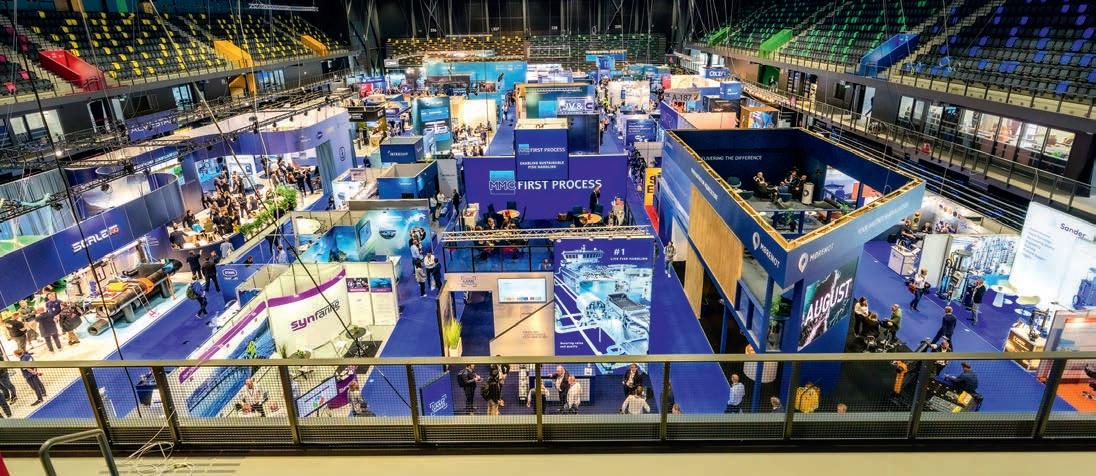
Two years ago, Aqua Nor 2021 took place under the shadow of the Covid-19 pandemic and people in many countries, including the UK, were not able to come to Norway. This time, international visitors were present in large numbers, from the UK and elsewhere in Europe and from much further afield – including visitors and exhibitors from Chile, China and New Zealand.
“Many have signed major contracts and this underlines Aqua Nor’s role as the industry’s most important meeting place –a place for both business and pleasure. This year, we have also noticed that the level of the stands has been very good and we appreciate that so many people have put a lot of work into making their stand, and thus Aqua Nor, even better.”
The format was a little different this time, with the trade show limited to three days – packing more into a shorter time – and a more science-oriented conference (see page 38) taking place at Trondheim’s Clarion Hotel on the Monday prior to the show’s opening.



Norway’s Fisheries Minister Bjornar Skjæran officially launched Aqua Nor, along with addresses from the Mayor of Trondheim, Rita Ottervik and Professor Manuel Barange, Director of the UN Food and Agricultural Organization’s Fisheries and Aquaculture Division.

AQUA NOR 2023
www.fishfarmermagazine.com 30
This page from top: Mowi workboat MS Gullhaug the SeaQure link mooring grid connec�on mode, Gael Force; overview of the trade show at Aqua Nor Opposite from top: The ScaleAQ amd Moen Marin team celebrate winning the Best Stand Award; christening the MS Gullhaug
debates and awards, including the Innovation Award (see box below) and the award for Best Stand. In a competitive field, this was given to ScaleAQ and Moen Marine for their combined stand, beating runnersup Furuno and Ahlsell. The judges said the award took into consideration the stand’s eye-catching design, welcoming staff and approach to sustainability.
Christened in style
As previously, attendees also had the opportunity to see aquaculture vessels and pens in the water in the nearby Skansen Harbour. Following an Aqua Nor tradition, two vessels were christened during the show.

First, ScaleAQ presented its new feed barge, which has been commissioned for cod farmer Norcod. The steel barge uses a water-based feeding system and has a maximum capacity of 400 tonnes of feed.
Rune Blomstervik, Special Adviser at ScaleAQ, said: “Those who will work on the barge will experience a different working life than they are used to before in commercial locations. There is, so to speak, no noise on the barge, since the feed is transported through water, which makes less noise than air feeding.”
Also being officially christened was MS Gullhaug, a new workboat from Fosen Yard, which has been assigned to Mowi’s farm site in Hitra, Norway.
Håvard Larsen, Technical Manager at Mowi, said: “The boat is tailor-made to order and adapted to our operations on location. Those who will operate the boat have had a say in how they want it to be in their workplace. That has meant a lot to us.” The boat is number three in a series of nine workboats.
Anders Straumshaug, CEO of Fosen Yard, said: “For us, it is very exciting to work with Mowi as one of the biggest players in the industry. We build everything here at Fosen, so it simplifies the follow-up for them. There is a short distance between us and I think that is an advantage for both parties and the collaboration.”
Sensor Globe wins Innovation Award

A Canadian company that has developed a way to keep tabs on fish welfare during treatments and transfers won the prestigious Innovation Award at Aqua Nor.
Sensor Globe, developed by Nova Scotiabased Marin X, employs acceleration measurements alongside water quality monitoring to enhance fish welfare and reduce mortality rates during processing operations.
The Sensor Globe internet of things (IoT) welfare platform offers real-time monitoring capabilities, allowing fish farmers to access crucial indicators and water quality parameters at various depths and locations.
The award was presented by Norway’s Fisheries Minister, Bjornar Skjaeran, who said: “New solutions push the industry forward and push the world forward.”

Runners-up for the Innovation Award
were EasyX, which has developed a remotely operated tank cleaner, and Evonta, which offers a process to analyse salmon and trout eggs and chart their development and quality.

We have had a fantastic atmosphere at this year’s exhibition
www.fishfarmermagazine.com 31 ”
Above: The Sensor Globe team with their nno a�on A ard
Setting out the vision
Mairi Gougeon, Cabinet Secretary for Rural Affairs, Land Reform and Islands in the Scottish Government, was in Norway to open the Scottish Pavilion at Aqua Nor and meet her counterparts in the other fishing nations, following a visit to SalMar’s Ocean Farm 1. Fish Farmer caught up with her at the show
FISH Farmer: Aqua Nor is the biggest trade show in aquaculture. Why is it so important for Scottish businesses to be represented here in Norway?
Mairi Gougeon: First of all, aquaculture is a vital industry for Scotland. It’s really important for our economy and I think when you see what it contributes to some of the most remote and rural parts of Scotland, providing well-paid jobs and housing, there’s a huge economic benefit. Not to mention that Scottish salmon is our number-one food export.
That’s why it is so important that we have the presence we do at Aqua Nor, with our impressive stand here, because we are one of the key aquaculture nations.
That shows from our presence, but also when you look around our Pavilion, the number of SMEs represented, there is so much happening and that’s something I’ve really been impressed by. It’s just the sheer levels of innovation, the technology; it feels like there’s a real buzz about the place and it’s a really exciting time for the industry.
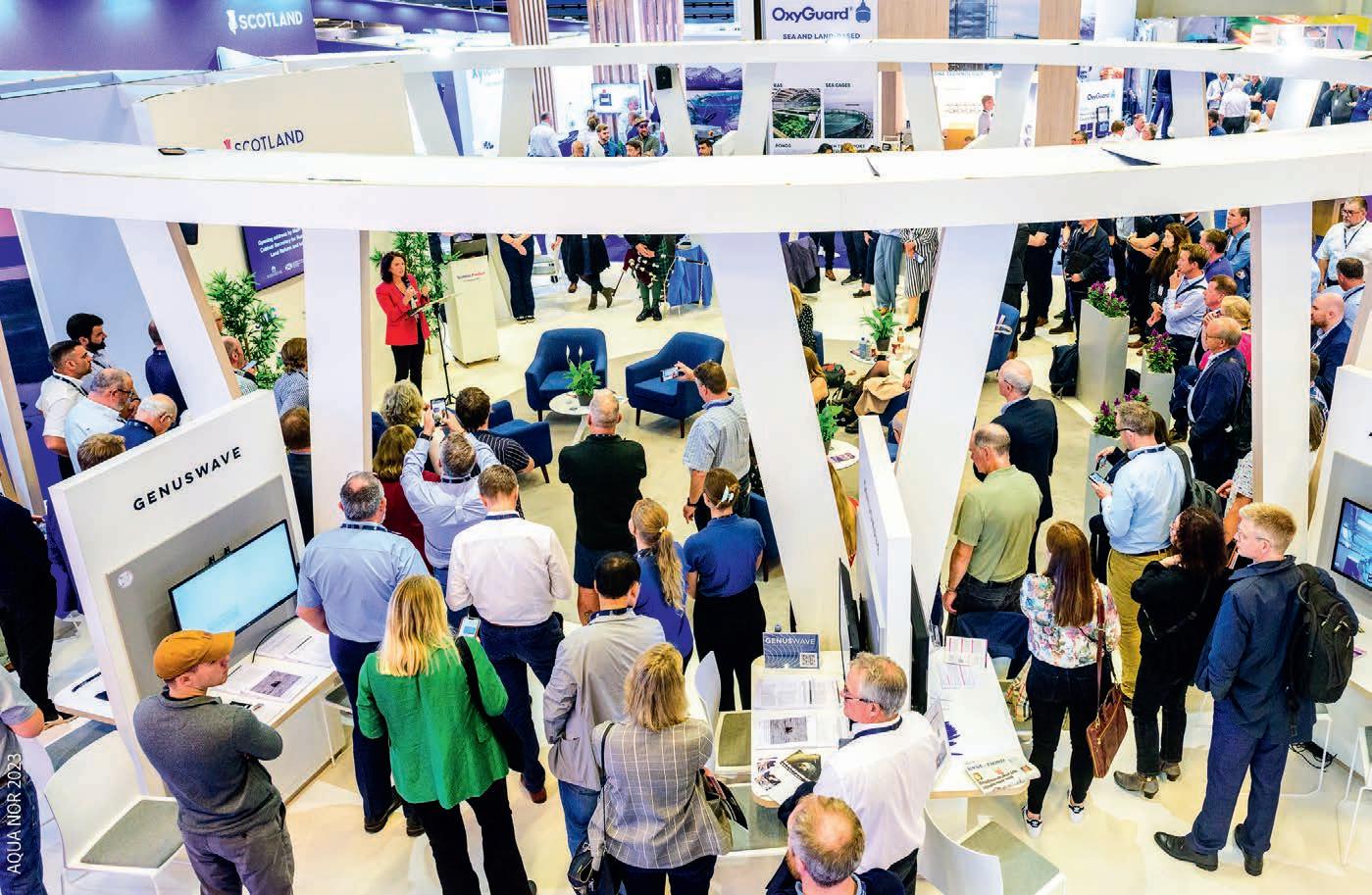
FF: You’ve been spending quite a bit of time at the show – what has your impression been? What feedback are you getting?
MG: It’s my first time coming to Aqua Nor, so I didn’t know quite what to expect.
It’s been an exciting time and I’ve appreciated the opportunities to have discussions with some of the other leading nations in relation to aquaculture. I’ve met with my counterparts from the Faroe Islands and from Norway, and have also had the opportunity to visit [SalMar’s] Ocean Farm.
It was really exciting to see that and to learn about what other countries are thinking, what they’re doing, because we are all facing similar challenges.
AQUA NOR 2023
Above: Mairi Gougeon (le ) at the Sco sh Pa ilion at A ua or 2023
www.fishfarmermagazine.com 32
Opposite: Mairi Gougeon makes her opening address
FF:There’s a debate at Aqua Nor this afternoon about offshore farming. Could that be relevant to Scotland?

[See the report on page 38.]
MG: We’ve made reference to that in our Vision for Sustainable Aquaculture [published July 2023]. It’s good to be able to come here and see for myself what that looks like, and to see it in operation.

Ocean Farm was really impressive. The scale of it is something I’ve never seen before but also to hear about the positive impacts they are seeing in terms of the health of the fish, in terms of the impact on the environment and the quality of what they are producing.
FF:What do you hope the industry is going to take away from the Vision paper in terms of a guide for action or a guide to what government’s thinking?
MG: I hope the industry will take away the fact that the Scottish Government is confident about the future of the sector in Scotland. There’s a strong future for aquaculture in terms of finfish and shellfish, and the potential is there for seaweed.
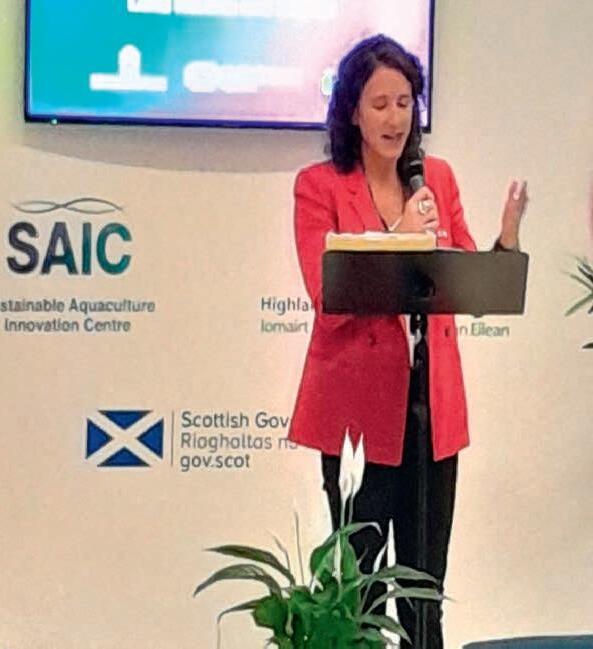
We know there are challenges we have to try and tackle, and the sector can only grow within the environmental limits we have. So we need to make sure that any growth is done in a sustainable way.
But we are ultimately clear that the aquaculture sector is providing a sustainable, healthy source of protein and we see a strong and bright future for that in Scotland.
FF:The Norwegian Government drew up a plan for growth in aquaculture, which has a target in terms of tonnage [five million tonnes annually] by 2050. There is no target in the Vision in terms of tonnage. Is it fair to say that it is not so much a plan for aquaculture and more a guide to the principles that would underpin any future plan?
MG: It is ultimately a vision and I don’t think it’s the appropriate place to be putting targets. It is meant to set out the overall direction and the future that we see for aquaculture in Scotland.
We have many pieces of work currently underway. We have the Scottish Aquaculture Council, getting all the different voices around the table, to discuss some of the challenges. This is the result of the Griggs Review and we’re keen to drive that work forward.
Another really critical piece of work is the Consenting Task Group. I hope that by bringing together all the relevant bodies that we can make real progress.
FF:When do you think you will be able to say “this is how the new consenting regime will look”?
MG: Hopefully we’ll see that soon – it’s important that we can see a tangible impact from the work that’s been undertaken.
What we’re hoping to do in terms of the Consenting Task Group is to take an application through a process, bringing together all the different regulators, and do that quite rapidly. So we hope to have the outcome of that or at least trial the first application this year, and take the learning from that and see how we can develop things from there.
FF:Would it be optimistic to hope that come early autumn, we’re going to see something that actually sets out what comes next for the highly protected marine areas proposals?
MG: We have had the consultation, to which there was a strong response. Máiri McAllan, Cabinet Secretary for Net Zero, had set out before the summer what the initial thinking was, but it’s important that we provide a full response to that consultation and analyse all the responses, which was always going to take time.
What we’ve tried to make clear through this process is that we really want to engage with people, with industry and with communities.
Protection of our marine environment is critical going forward and we need to find a way to do that, but we need to find a way to do it by working with the people who are most affected. While I don’t lead on that policy, all the affected industries are within my remit and it’s in everybody’s best interests to protect the marine environment.
FF: Regarding acoustic deterrent devices [ADDs], the old-school ADDs are clearly off the agenda. But will the new generation of ADDs be acceptable in Scotland?
MG: That’s one area in which it’s been good speaking to some of those companies. [Genuswave, which has developed a new technology for seal deterrence, was a podholder on the Scottish Pavilion and Ace Aquatec, which has its own technology, was also represented at Aqua Nor.]
The Marine Directorate has issued guidance to try and assist companies with applications for the EPS [European protected species] licences – but, obviously, we’re all working our way through this process together. These aren’t straightforward
It feels like there’s a real buzz about the place
” www.fishfarmermagazine.com 33
applications, so I know that that has been a challenge in itself. That’s why I’m here, that’s why I am listening and we’ll see where we can go from here.
FF:We can’t avoid Brexit! Digital EHCs: are you optimistic or pessimistic about moving this on? [The previous week, Mairi Gougeon had written to UK Environment Secretary Thérèse Coffey to protest that the trial of digital EHCs had been abruptly brought to a halt.]
MG: I feel like it’s foot-dragging [on Defra’s part] and if so, it’s really frustrating. It was a step in the right direction and for that to be dropped is really disappointing.
As ever, when it comes to the way the UK Government handles issues like that, you feel as if you are the last to know. We were as disappointed as the industry was to find out about the digital EHCs but we’ll be continuing to try and engage with the UK Government on that and to ensure that, as far as possible, we are making progress, because Brexit has been catastrophic for the aquaculture industry.
FF: Another challenge for the industry is skills – recruitment is one of the perennial issues for fish farmers at the moment. Might we see some more developments to help that?
MG: There are a number of pieces of work underway and there are a number of interlinked challenges.
We need people but we also need the housing for those people. In terms of skills, we recently had a commission on land-based learning, which included aquaculture, so the Scottish Government is formulating a response. We also had the Withers review on skills [James Withers’ Independent Review of the Skills Delivery Landscape, report published June 2023] and the Cabinet
Secretary for Education has been leading on that. I think it’s important that we take these reviews together in the round. This is a really exciting area for Scotland. Whether in finfish, seaweed or shellfish, there are so many opportunities. I want to make sure we are doing what we can to make people in Scotland aware of these opportunities and to develop the skills and the talent pipeline. We can be a real leader. I think we can do more and really make an impact.
The shape of the future?
ON the eve of Aqua Nor, Mairi Gougeon took the opportunity to see first-hand the latest innovations in Norwegian aquaculture during a tour hosted by SalMar, co-owner of Scottish Sea Farms. Her fact-finding mission included a visit to the world’s largest single fish farming installation, Ocean Farm 1. Pioneered by SalMar, the semisubmersible offshore farm measures 110m in diameter with a total height of more than 50m and is designed to
hold up to 1.6 million salmon.
In operation off the coast of Norway since 2017, it has successfully completed two production cycles and the lessons from these are now helping inform the design of the farm’s next generation.
En route to Ocean Farm 1, Gougeon also visited one of SalMar’s open pen farms which, whilst similar in approach to many Scottish farms, is equipped with
15 x 160m pens capable of producing nearly 10,000 tonnes of fish –three times the biomass currently permitted in Scotland.
The Minister said: “I am pleased to have had the opportunity to see Ocean Farm 1 first-hand. Innovation is vital to support our ambitions for a sustainable aquaculture industry and supply chain in Scotland, as set out in our recently published Vision for Sustainable Aquaculture.”
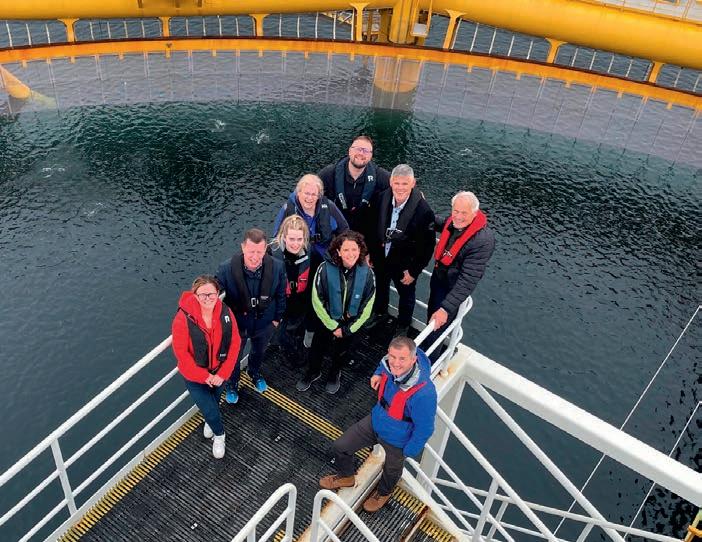
Scottish Sea Farms’ Managing Director Jim Gallagher, who accompanied the Cabinet Secretary, said the Scottish sector is keen to mirror Norway’s innovative ways of working, improved efficiencies and enhanced green credentials.
He added: “When it comes to discussing the potential for the sustainable growth and development of the Scottish farmed salmon sector, where better to come than Norway, the global leader, with the opportunity to see the latest innovations in practice?”

The Cabinet Secretary was also given a tour of SalMar’s state-ofthe-art processing plant in Frøya.

AQUA NOR 2023 www.fishfarmermagazine.com 34
”
Being able to see these kinds of advances in best practice really is the best way to build up knowledge
Left: Mairi Gougeon visits the Ocean Farm 1
Below The piper arives
It’s all in the blood

Humans use blood testing as a way of monitoring health. Now fish do as well. Speak to WellFish Tech to learn how our advanced database and AI model can help you interpret the blood biochemistry of your fish stocks so informing decisions that optimise their health and welfare.
Want the numbers? We can provide them too.
www.wellfishtech.com
Making some noise
Team Scotland returned to Aqua Nor with a presence that was hard to ignore – especially when the bagpiper started playing
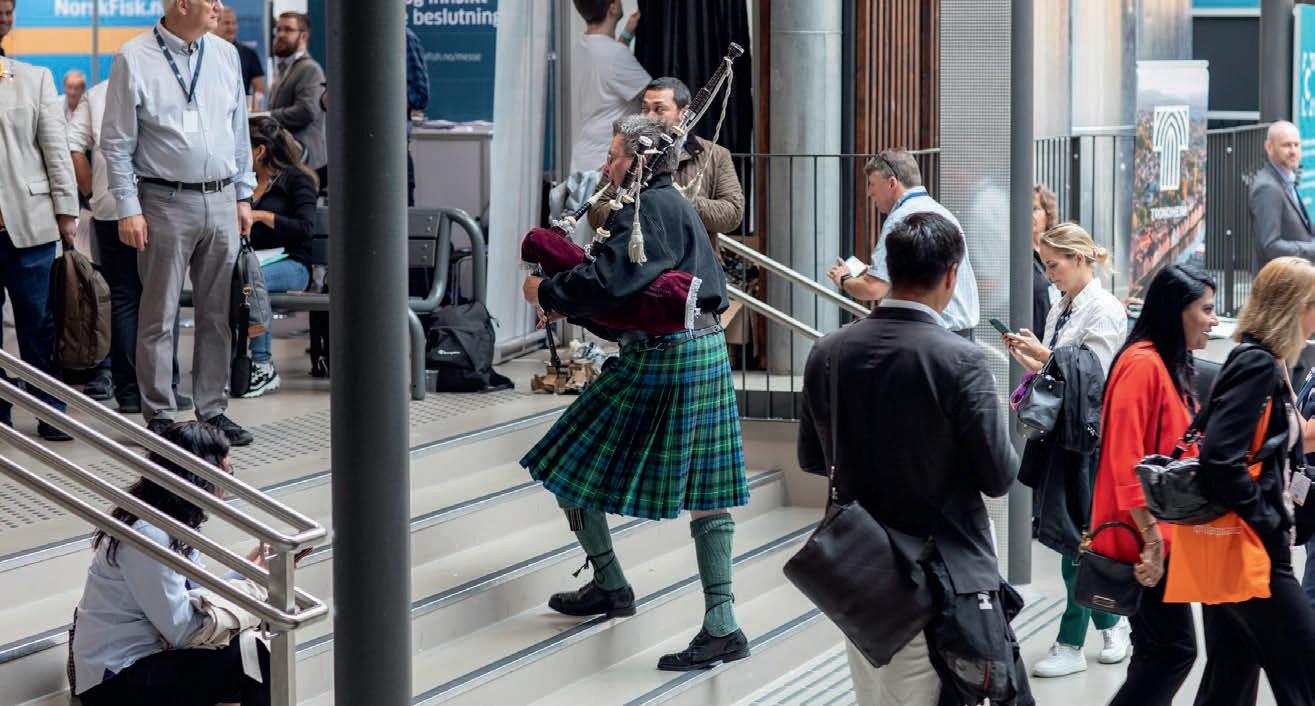
FOUR years had passed since Scottish companies were last represented at Aqua Nor and six years since there had last been a Scottish Pavilion.
For Aqua Nor 2023, Team Scotland made its presence felt with one of the most striking stands of the show, hosting pods dedicated to 18 organisations, as well as a series of events and presentations.

The Scottish Pavilion was supported and organised by the Highlands and Islands Enterprise (HIE), the Sustainable Aquaculture Innovation Centre (SAIC) and the Marine Directorate of the Scottish Government. Events hosted at the Pavilion included the official opening, with a keynote address by Mairi Gougeon, Cabinet Secretary in the Scottish Government for Rural Affairs, Land Reform and Islands. The ceremony began with a bagpiper – Norwegian Øyvind Luckow – playing his way to the stand.
On day two, the Pavilion hosted a panel discussion – the Innovation Nations event –and a VIP brunch, both again attended by the Cabinet Secretary.
The Innovation Nations discussion addressed innovation in aquaculture, how to encourage it and what barriers stand in its way.
Taking part were Professor Simon MacKenzie, Head of the Institute of Aquaculture at the University of Stirling; Dr Amanda Vang, Head of the Biotechnology Department at the Fiskaaling research institute, Faroes; Jayne Brookman, Chief Partnership Officer at EIT Food, a consortium of partners driving consumer confidence and improved global health; Professor Brian Quinn, CEO Wellfish Tech, the fish health business; Heather Jones, Chief Executive, SAIC; and Elaine Jamieson, Head of Blue Economy and Food and Drink, Highlands and Islands Enterprise.
Brian Quinn commented: “I’ve been very fortunate to move to Scotland – the interaction industry and academia is unique. I doubt that I could have done this [set up Wellfish] anywhere else.”
Amanda Vang said: “Faroes is small enough that we have the opportunity to partner with producers and more opportunity to try disruptive technology.”
The panel also discussed the challenges of sharing potentially sensitive data as part of a collaboration, as well as the impact of Brexit – which, Simon MacKenzie said, had been ”catastrophic” for academia. Jayne Brookman said that EIT, which relies on cross-border collaboration, had seen a fall in UK partners, but this was improving.
Do the big players in aquaculture have the appetite for risky innovation? As Heather Jones put it: “It’s directly related to profitability.”
The panel agreed that corporates are interested in innovation – as long as they can see how it adds to the bottom line.
A packed programme
Throughout the show, there were a series of presentations at the Pavilion by exhibiting organisations on topics ranging
AQUA NOR 2023
www.fishfarmermagazine.com 36
Photo: Aqua Nor
Opposite from top: The piper at the Sco sh Pa ilion
raig Fleming, rucial This page from top: Scotland is open for business
Tone Flytlie, Mennekes, collects on behalf of Espen ris�ansen An Makikyro, atec Tom Murdoch, Brimmond


Siljie psal, Mintra ith
Robert utram, Fish Farmer editor

from Genuswave’s targeted acoustic startle technology to deter seals to OTAQ’s early warning system for harmful algal blooms.
Another reason to visit the Pavilion was Fish Farmer’s daily prize draw, where three lucky winners each walked away with a bottle of fine malt whisky.


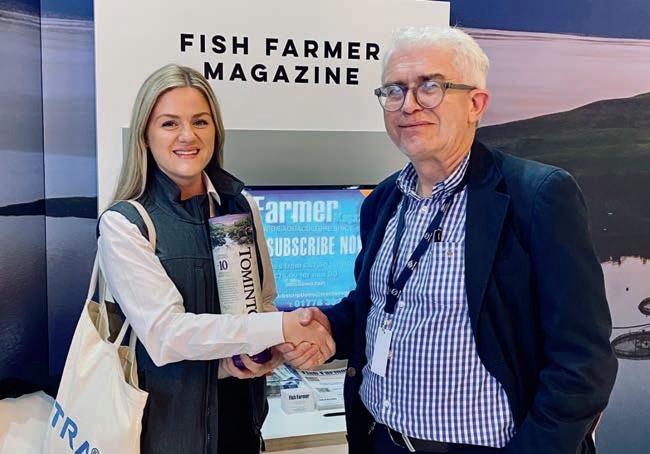
Reflecting on a busy week at Aqua Nor, HIE’s Elaine Jamieson said: “The Scottish Pavilion was a hive of activity and a great success. We have already received positive feedback from the companies represented about the engagement they had with customers and the profile the Pavilion gave them at this very busy show. It was also a great opportunity to speak with other organisations about how we drive forwards sustainable growth in aquaculture and we have started conversations about new collaborations and international investments.”
Benedikte Ranum, SAIC’s Director of Communications and Knowledge Exchange, said SAIC was “delighted” at the Pavilion’s success. He added: “The event was the culmination of a lot of intensive and collaborative planning, which has clearly paid off. It was great to see the constant buzz of visitors to the Pavilion – from VIP delegations to young people just starting their aquaculture career journeys. The overarching message that Scotland is innovative and open for business seems to have come across loud and clear.
“We are very pleased to have helped provide so many opportunities for network building and lead generation, both on and off the stand. The feedback so far has been overwhelmingly positive and we have already had enquiries from companies and research institutions that are keen to take a pod at the Scottish Pavilion in 2025.”


Craig Young, Business Development Manager with waste water treatment business I&C Process Solutions, said: “Aqua Nor exceeded our expectations and we found it very constructive… the most useful aspect was being able to discuss with all relevant people under one roof and without distractions from day to day work problems.”
Tom Murdoch, Managing Director at Brimmond, was there at Aqua Nor to talk about his company’s lifting solutions and its new net cleaning pump. He said: “Surpassed expectations – the size and footfall of the show was greater than I had expected. We secured the rental of a large marine crane to one of the world’s largest aquaculture companies off the back of discussions we had at the show.”
Kevin Quillien, Chief Technology Officer at Krucial, said: “This is probably one of the better and most constructive conferences we have been to as a company… almost everyone is there – it’s an opportunity to both continue building relationships, as well as forge new ones within a compressed timeline.”
Mike Spain, Head of Enterprise at SAMS Enterprise, commented: “The most useful aspect of any exhibition is the opportunity to engage directly with people rather than via a screen. At Aqua Nor

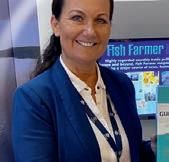

we had the opportunity to speak to existing and potential clients from as far afield as Norway and Chile.
“Being part of the Scotland Pavilion also gave us time for quality conversations with HIE, SAIC and fellow Scottish-based exhibitors. We are certainly considering a return visit in 2025.”
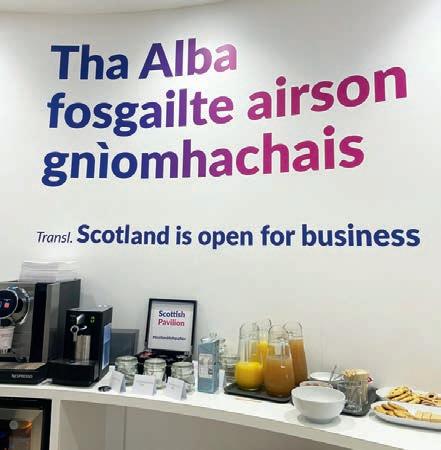
Flying the flag for Scotland

Represented in the Scottish Pavilion were:
• Aqualife Services Ltd

























• Brimmond
• DSM
• Fish Farmer magazine
• GenusWave
• I & C Process Solutions


•Institute of Aquaculture (University of Stirling)

• KelpRing
• Krucial
• MiAlgae
• Moredun Scientific

• OTAQ Group

• Otter Ferry Seafish
• SAMS Enterprise
• Tritech International
• Tritonia Scientific
• Underwater Contracting
• Veramaris

The event was the culmination of a lot of intensive and collaborative planning
www.fishfarmermagazine.com 37 ”
Talking points
Feeding the world sustainably, the implications of salmon tax and the prospects for offshore fish farming, all featured on the agenda in Trondheim
THE Aqua Nor conference took place on 21 August, ahead of the official show opening the following day. The theme was: “More food from the oceans: contributing to the green shift through expanding aquaculture production”.
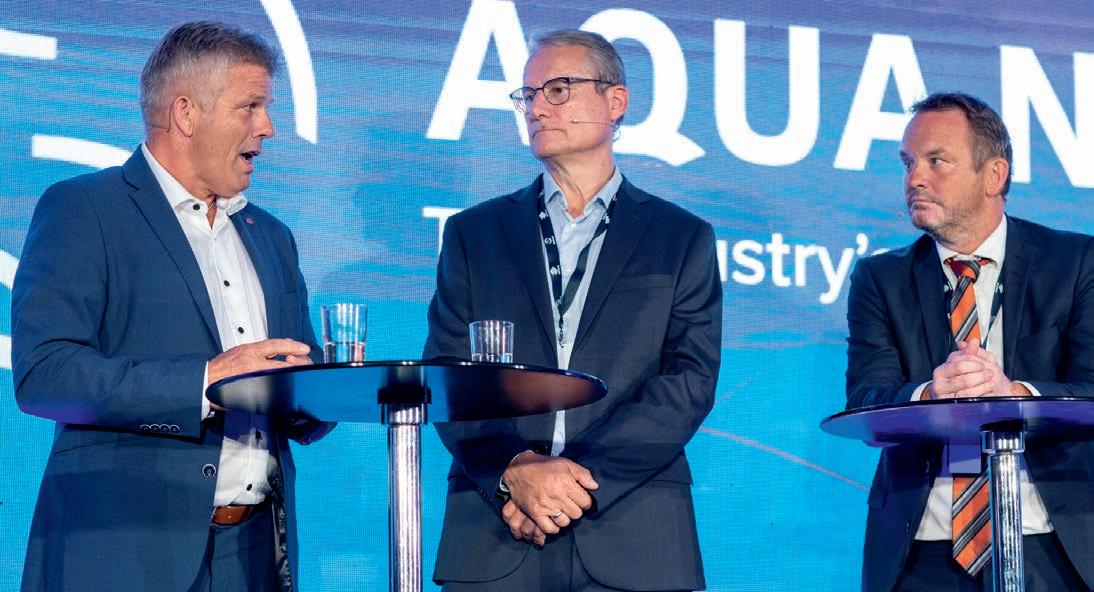

The Nor-Fishing Foundation, research institute SINTEF and Trondheim-based university NTNU jointly hosted the conference, in association with the Food and Agricultural Organization (FAO) of the United Nations.
Dr Manuel Barange, Director, Fisheries and Aquaculture Division of the FAO gave the keynote speech. He set out the context of a world in which an estimated 735 million people faced hunger in 2022; 122 million more than before the Covid-19 pandemic. Aquaculture is part of the solution to feeding what will be an estimated nine billion people by 2050, in the face of climate change. Dr Barange did not see this as an impossible task, however. When the FAO was set up after the Second World War, more than 80% of the world’s population lived in poverty and many experts agreed that the world did not have the resources to feed the then population of three billion.
He described the FAO’s vision for a “blue transformation” with three key objectives:
• Sustainable aquaculture intensification and expansion satisfies global demand for aquatic food and distributes benefits equitably.
• Effective (and climate appropriate) management of all fisheries delivers healthy stocks and secures equitable livelihoods.
• Upgraded value chains ensure the social, economic and environmental viability of aquatic food systems.
“There are not easy or simple solutions,” he underlined. Tackling
the world’s demand for food risked causing harm to the environment and biodiversity if not done correctly. Dr Barange’s key message was: “More food from the oceans – but not at any cost.”
Also at the conference, a range of expert speakers addressed different aspects of the blue economy. Professor Peter Haugan, Director of the Geophysical Institute at the University of Bergen and a member of the High Level Panel for a Sustainable Ocean Economy, spoke about the links between the drive to reduce climate change and sustainable development for the oceans.
He stressed: “Ocean-based climate mitigation strategies have more co-benefits than trade-offs.”
Professor Thierry Chopin explained how seaweed – especially when part of an integrated, multi-trophic aquaculture approach – should be part of the solution.
While he was sceptical regarding some of the claims over seaweed’s capability to sequester carbon permanently, he said that seaweed farming could help to make use of waste nutrients from aquaculture and promote biodiversity. As he put it: “You can have your habitat and eat it too.”
Karl Almås of SINTEF Ocean talked about the challenges of sourcing feed for
AQUA NOR 2023
More food from the oceans – but not at any cost
www.fishfarmermagazine.com 38 ” Photo: Aqua Nor
Above: The tax debate – Bjørnar Skjaeran, Fisheries Minister; Olve Grotle, onser a� e member of Parliament; and Geir Ove Ystmark, CEO Sjømat Norge Opposite from top: The o shore debate jers�n Braathen, Lars Konrad Johnsen, Ole Fretheim and Per Arild Åland; Manuel Barange; Thierry Chopin
farmed carnivorous species such as salmon. Currently, two-thirds of the raw materials for Norway’s fish farming sector come from south of the equator, he said, and many of these had become expensive.
Hopes that Norway could supply 100% of its feed ingredients domestically by the middle of this century were unrealistic, he said, but reaching 50% was achievable – especially if Norway invested in a fermentation industry to produce protein from algae and other sources.
Other topics at the conference included the impact of genetic advances in fish breeding; the development of new aquaculture concepts in China; energy prices as a constraint on aquaculture; and shrimp production in Asia.
Taxing questions
Norway’s resource rent tax (“salmon tax”) overshadowed Aqua Nor this year. This was the topic of a debate on the first day of the trade show.

The panel consisted of:
• Minister of Fisheries and Oceans Policy, Bjørnar Skjæran;
• Olve Grotle, Conservative member of the Norwegian Parliament;
• Administrative Director Geir Ove Ystmark, Seafood Norway;

• Ragnar Nystøyl of Kontali Analyse; and
• Thorvald Tande, Editor, Norsk Fiskerinæring (also Panel Chair).
The panel discussed the possible impact of the tax. Both the Conservative Party’s Olve Grotle and the industry organisations agreed that it would reduce both the sector’s ability and its willingness to invest.
Geir Ove Ystmark said: “No matter how you choose to resolve the details, it will lead to an insane reporting obligation for the farmers and more bureaucracy.”
He said the only positivething about the tax would be the creation of more jobs for newly qualified lawyers in the Tax Agency.
Norwegian Parliament member Grotle pointed out that the aquaculture industry would have less money to invest in industries in the municipalities where aquaculture operates.
The Minister of Fisheries and Ocean Policy, Bjørnar Skjæran, argued for his party’s line, however, stressing that one of the political goals in the “Hurdal platform” – the agreement underpinning the current coalition government – was to increase the benefit for the local communities where value is created. The Labour Party believes, Skjæran said, that the resource rent tax contributes to realising this goal.
Ragnar Nystøyl from consultants Kontali Analyse commented: “The resource rent tax does not treat the industry as it should; a long and complex value chain that is dependent on each other. The reactions [from the industry] are due both to the fact that nobody expected it or expected the tax model that has been chosen.”
One thing is certain, the discussion concluded: the salmon tax is here to stay, no matter who is for or against it.
Wilder waters
Offshore fish farming is fast becoming a talking point for the salmon farming industry. The panel discussing the feasibility of taking fish farming beyond the fjords was made up of:
• Ole Fretheim (Moderator), the Norwegian Seafood Federation;
• Lars Konrad Johnsen, Utror AS –offshore farming subsidiary of salmon producer Lovundlaks;
• Kjerstin Braathen, Aker Solutions, marine and energy engineering group;
• Per Arild Åland, Business Development Manager, DNV Offshore Classification; and
• Xinhua Yuan, Deputy Director, Fisheries and Aquaculture Division, FAO, who joined by video call.
Lars Konrad Johnsen pointed out that the Norwegian energy industry is already skilled in operating offshore in challenging conditions. This skill set could be applied to take aquaculture further offshore.
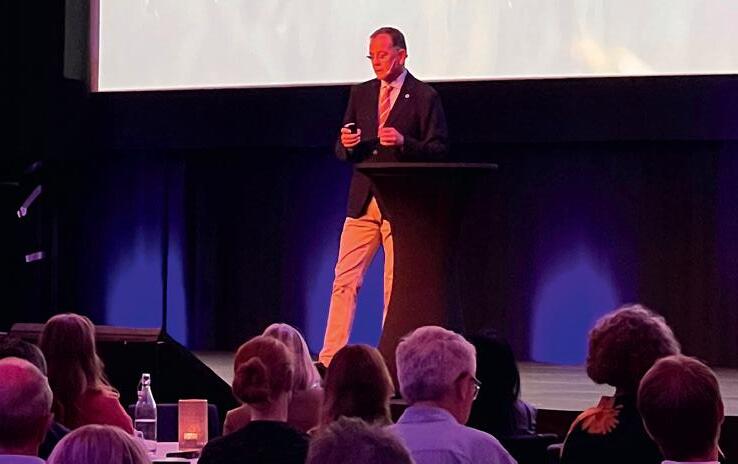
Per Arild Åland commented that the drive to develop offshore farming was partly due to space issues inshore: “The fjords are packed and the threshold for sustainability may already have been reached.”
Kjerstin Braathen said: “Getting the technology and the biology to work together is key. Biology is driving the technology, not vice versa.”
She also commented: “Collaboration will be key when operating in this competitive offshore landscape. The worst-case scenario is that competition between companies hinder all sea-based industries from reaching our full potential.”
DNV’s Åland stressed that effective digital monitoring of offshore farms will be a prerequisite to succeed.
The FAO supports this development, according to the Deputy Director, Xinhua Yuan. He said the FAO is particularly focused on: governance and planning; good practice for all in terms of running aquaculture in a sustainable way; making value chains work; and monitoring data production.
Johnsen said that finding available space offshore should not be a major problem: “Aquaculture’s footprint would be limited.” Wind farms require shallow water and a lot of exposure to wind, while fish farmers are looking for deeper water and more sheltered positions, so there should be space for both, he said.
He predicted that we should see orders going in for units in early 2025, with fish in the ocean as early as 2027.
He added: “I hope we will be able to build 10 to 15 units a year… in 20 to 30 years, offshore fish farms can potentially produce twice as much fish as we are currently producing in coastal fish farms.
“However, thorough planning is required to realise those volumes. In particular, fish welfare and our environmental footprint must be taken into account.”
Årland of DNV agreed: “The potential is vast. In about 10 years, I’m sure we’ll be farming millions of tonnes of salmon a year.”
He said that DNV has made projections of offshore fish farming up until 2050, which will be published in October.
www.fishfarmermagazine.com 39
Innovation on show



Aqua Nor was the place to roll the latest tech out to an international audience




THE industry’s number one trade show, Aqua Nor, is the ideal venue for signing deals and launching new products, and this year’s event was no exception.

For example, on day one, Norwegian company Fluctus announced the signing of a new contract with China’s biggest trout farmer, Qinghai Minze Longyangxia, for the supply of four feed systems.
The deal, for three air-based systems and one water-based, is the largest for Fluctus so far for a single customer and represents an important move into the Asian market.





Knut Bjarte Otterlei, Head of Sales at Fluctus, said: “It is extra-great that Qinghai Minze Longyangxia Ecological Aquaculture wants to use Norwegian water-feeding technology. We are experiencing great interest – both in Norway and abroad – for our water-feeding solution.”
It was the first time the Fluctus team had met their Chinese customers in person.
Aqua Nor also featured another deal for the supply of a waterborne feeding system, this time between Smir Group and Mowi Scotland. The Smirfeeder system means less damage to the pellets, reducing waste and improving the feed conversion ratio. It also reduces wear and tear on the feeding pipes, and the energy consumption can be reduced by as much as 90%.
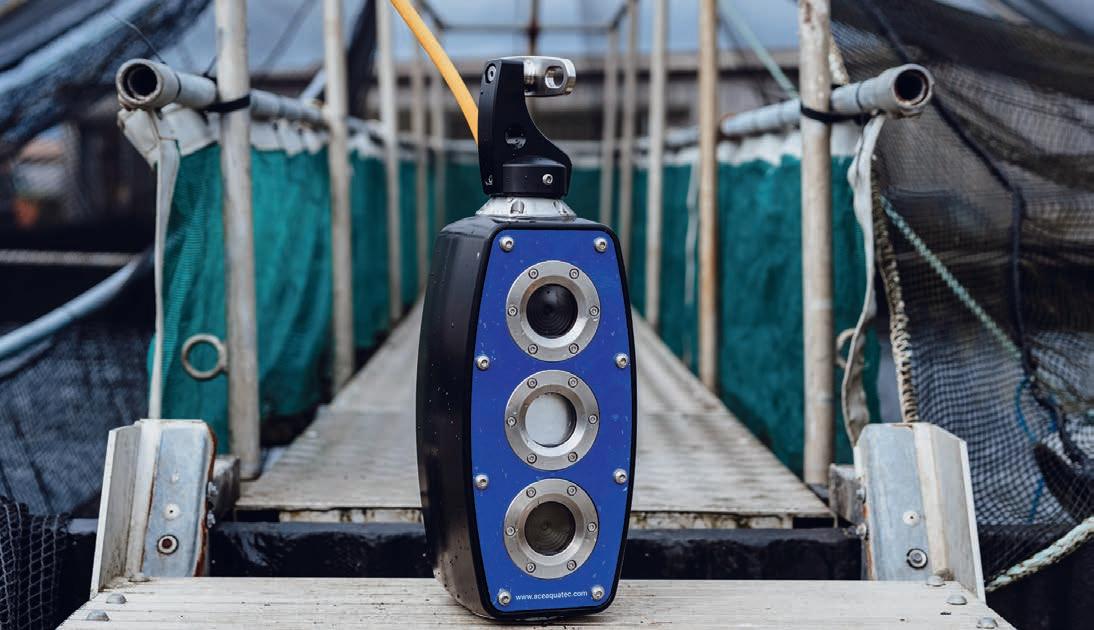
AKVA Group was at Aqua Nor to talk about a range of new products and services, from the latest in its digital applications to new solutions to the sea lice problem with a “deep farming” cage suspended from a floating pen. AKVA’s Nautilus pens, the company says, have been proven to be better for fish health, requiring either no treatment or limited treatment for sea lice.
David Peach, Manager, Scotland with AKVA, said: “It’s really important to be back here and it’s great to meet our customers. It’s been great to meet our farmers


AQUA NOR 2023
It’s really important to be back here and it’s great to meet our customers
Above left: Ace Aquatec A-BIOMASS camera
www.fishfarmermagazine.com 40 ”
Left: David Peach, AKVA Opposite from top: Mowi Scotland’s Western Isles and Skye region seawater manager Don Macleod, le , and Smir chief e ecu� e y ind Nymark; The Fluctus team at Aqua Nor with Head of Sales, Knut Bjarte Oterlei, centre
off-site, spend some quality time with them and show them some new technology.”
Underwater eyes
New developments in biomass estimation were very much in evidence at the show, with technology combining the latest in underwater cameras with advances in artificial intelligence.
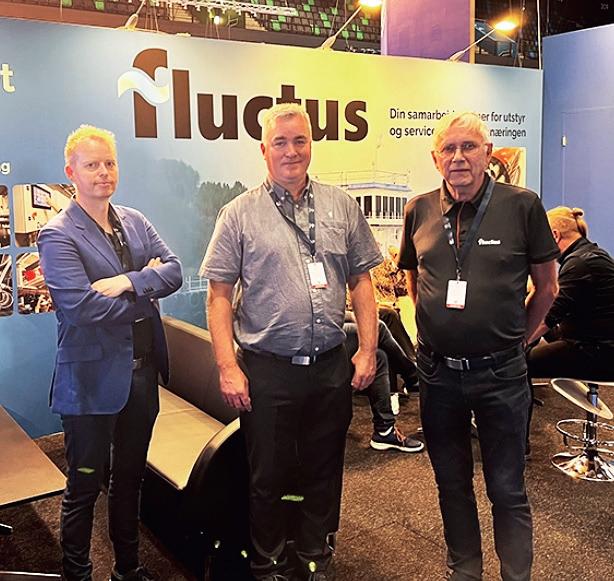
AKVA displayed its own solution, developed in association with tech company Observe Technologies, which AKVA has worked in partnership with since 2018.
Tidal, the marine technology division of X Development, is also developing a system of cameras, sensors and machine perception tools for the ocean environment and was present at Aqua Nor.
And Trondheim saw the launch of Ace Aquatec’s advanced underwater camera system A-BIOMASS, which promises to transform the way fish farmers across the globe monitor and grade their fish stocks.
The fully automated camera is far smaller and easier to use than many on the market, and has been proven to withstand the harshest environmental conditions.
Keith Davidson, Chief Technology Officer at Ace Aquatec, told Fish Farmer: “At only 8.5kg, the camera is easy to deploy and remove for cleaning. It’s also simple to use. It’s already calibrated so there’s no need for farm operatives to calibrate it on-site.”
It is capable of sampling at a much faster rate and more accurately than a human could manage to create an accurate estimate of biomass. It should also prove helpful in helping farmers to manage their feed more efficiently. The system can also be operated remotely so fish stocks can be monitored from anywhere in the world.
The A-BIOMASS for Salmon is the first camera in the series, with production set to ramp up to ensure availability early next year. Modules for trout, seabass and tilapia are due to follow later in 2024.

Built to last
Meanwhile, just across from the Scottish Pavilion, Gael Force’s two-level stand was showcasing the latest developments from
Make Koroskin your catch of the day
the supplier, including the company’s improved Triton pen, with a new decking system, handrail cabling arrangement and an under-deck winch support structure.
Gael Force was also rolling out the latest component in its moorings range, the SeaQureLink Ultra, a much larger mooring node designed to accept large fibre connections in exposed high-energy sites.
In addition, the company presented an update on the development of its SeaQureFarm and the SeaQureWell semiclosed containment system, announced at Aquaculture UK last year.

A unique film can help your seafood products to always be at their best
used both for PET and PE trays/base web. Koroskin is highly versatile making it the ideal choice for all of your fish applications.
SKIN FISH
Seafood shoppers make their purchasing decision based on the quality, freshness and appearance of the products. Korozo’s KOROSKIN, with its unrivalled product presentation at the point of sale, helps consumers make the right choice.
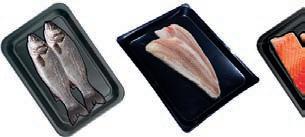

Koroskin tightly fits your products like a second skin, preserving product integrity, flavour and appearance while providing a transparent glossy presentation.
An easy-to-open film with unique sealing characteristics, Koroskin can be
Properties: Leak-proof, excellent gloss & transparency, easy-to-open Advantages: Unrivalled presentation, reduces spoilage, wrinkle-free, freezerready, preserves freshness, convenient for microwave cooking
Please contact our sales team to arrange a meeting or drop an e-mail at: infoweb@korozo.com.tr
 Photo: ADEC, Milas, Turkey
Above left: Ocean Clear Skin Films
Photo: ADEC, Milas, Turkey
Above left: Ocean Clear Skin Films
KORO
Above: Find out Korozo’s easy-to-open, leak proof packaging solu�ons
www.fishfarmermagazine.com 41
Big plans for the Top End
Researchers believe that sustainable prawn farming could create valuable revenue for indigenous communities in northern Australia
NORTHERN Australia may conjure up images of sweltering temperatures, poisonous snakes and man-eating crocodiles.
But, according to a leading scientific group, the “Top End” is an ideal location for unlocking the country’s aquaculture potential.


Not Atlantic salmon, of course, but growing prawns (also referred to as shrimp) in a sustainable manner, says CSIRO, the Commonwealth Scientific and Industrial Research Organisation.
There are challenges, not least in finding enough people to do the work. Northern Australia covers 40% of the nation’s land area, but only 5% of the population.
But CSIRO believes the “top end” as the region is popularly known, has the ideal climate for greatly expand prawn farming, and could also provide a new source of revenue for indigenous people.





It is now looking to develop an “extensive” prawn pilot site on the Tiwi Islands, 50 miles to the north of Darwin. Extensive farming involves lower intensity production, with a lower density of stock in the ponds and much less reliance on feed for the prawns, which mainly subsist on natural food sources in the ponds. Extensive farming produces less revenue but requires much less capital outlay; one of CSIRO’s key goals is to reduce operating costs and improve sustainability by requiring less feed for the prawns and other inputs.
In Australia, most farmed prawns are currently grown in intensive farming systems. This means they have high stocking rates – about 25–50 prawns per square metre.





However, CSIRO says extensive prawn farming systems stock much lower numbers of prawns – usually less than five per square metre. While extensive prawn farming hasn’t yet been tried widely in Australia, there is an established and successful extensive prawn farming industry in Vietnam.



























“Given the similar climates of Vietnam and Australia, we are trialling whether or not this low-input farming would be commercially viable in Australia,” Simon explained.
“However, we expect that working in Northern Australia will throw up some new challenges.”













































































































































The beauty of the extensive prawn farming system is that it requires no or only small amounts of additional feed. The prawns rely on getting the majority of their nutrients from microorganisms growing in the pond itself.

Without this ongoing overhead, extensive farming systems have much lower running costs and are more sustainable in the long term. If the need for netting could also be removed, this would really flip the economics on its head.



CSIRO says: “Northern Australia’s warm waters make the Top End an ideal climate for growing farmed prawns in a sustainable way. But it’s not without its challenges, and it’s important to find just the right location.

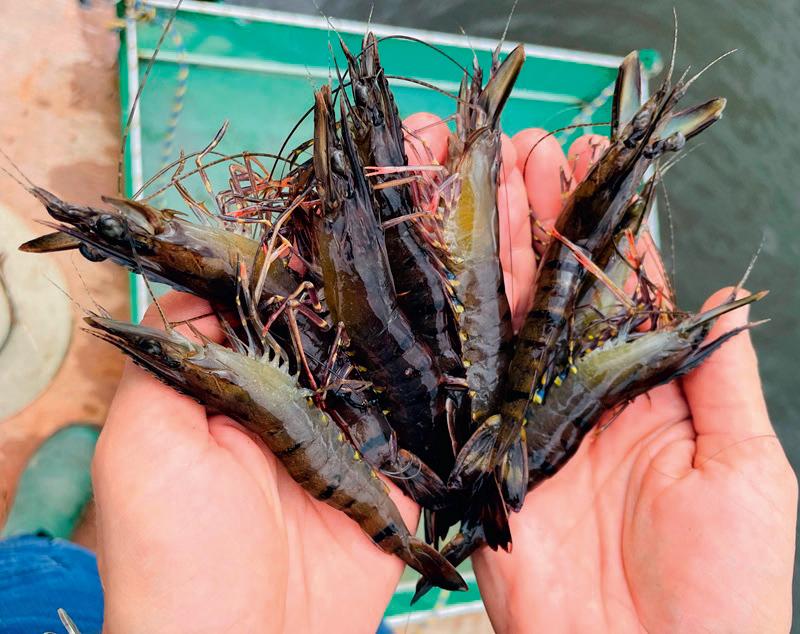
AUSTRALIA
www.fishfarmermagazine.com 42
“Commercial attempts to farm prawns in the Northern Territory have been tried, but haven’t been successful to date. Cyclones, rain, hungry birds, and the tyranny of distance make it a difficult area for prawn farming businesses to establish and thrive.


“We’re taking another look at it, leading innovative new research in Darwin to help develop the industry. If successful it could lead to prawns being grown all the way across the top of the country from the north of Western Australia to the top of north Queensland.”
The project leader Simon Irvin, who is an aquaculture scientist, said the first step was setting up a demonstration site in Darwin, and early results have now put hard numbers to what were previously understood challenges.
“Pond netting is the gold standard for protecting prawns from bird predation. Our tests have shown only 6% survival rates in ponds without netting, and 68% with netting,” Simon said.
“However, netting is expensive to install, and in the Top End nets can be easily torn apart and damaged by cyclones. So now we’re going to take the next step and investigate using lasers and drones to deter birds and negate the need for netting.”
However, while prawns also love salty water, the northern monsoon can deposit large amounts of rain, effectively turning salt water into fresh water in prawn ponds.
The team is looking at ways to guard against this, as well as stopping competition from wild prawns that are abundant in the natural environment.
Early results from the first season at the Darwin demonstration site have been promising, with a successful prawn harvest despite the identified challenges the area presents.
The next big step will be to apply the findings to a real-world commercial prawn farm.
CSIRO has been working with Indigenous organisation Tiwi Resources which represents the eight clan groups belonging to the Tiwi Islands.

The pilot farm is planned to be located at Wurankuwu, Bathurst Island. Ron Poantumilui, a senior leader of the Wurankuwu People, says the various groups of the Tiwi Islands see real potential for the positive impacts in developing aquaculture on the islands.
“The vision is a five-year plan to develop a pilot site. If successful it will benefit our people by building economic opportunities, and that vision can go on to the next generation,” Poantumilui said.


Initially the goal would be to build six one-hectare ponds. This could lead to further expansion if the project demonstrates the viability of extensive prawn farming in northern Australian waters. Additional prawn farms could then be built around the concept in different locations across the Top End.
Simon Irvin says the project is bringing together everything known about prawn farming in Australia and overseas with new approaches to overcome the challenges.
“The establishment of a co-led pilot prawn farm on the Tiwi Islands would unlock a huge opportunity for communities in northern Australia and provide the country with some of the highest quality prawns available,” he adds.


See also Selva Shrimp, page 40.
Opposite from top: Prawns have been shown to grow quickly in the tropical condi�ons – a good sign for future commercial endeavours; Simon Irvin Below left: The Darwin demonstra�on site has completed its first season, and plans are underway to expand the research

www.fishfarmermagazine.com 43
If successful, it will benefit our people by building economic opportunities
”
Turning the tide

The Selva Shrimp Program aims to show that shellfish production can go hand in hand with preserving the precious mangrove forests
AS shrimp farming has become a massive industry around the world, one of the criticisms levelled against it is that the development of farms along the coast has led to the destruction of valuable mangrove forests.
Mangroves thrive in the coastal intertidal zone in tropical and sub-tropical latitudes, where they provide a valuable environment for a diverse range of species, act as a barrier against erosion and absorb carbon dioxide, helping to offset greenhouse gases.

So, what if shrimp farming could be used to support mangrove forests rather than to threaten them? That was the aim of Switzerland-based Blueyou Group, which focuses on consultancy, trading and processing in the seafood sector, with a strong environmental ethos in creating its Selva Shrimp Program.



Selva Shrimp works with local farmers to produce black tiger prawns (Penaeus monodon), a species native to southeast Asia and the second most widely produced farmed shrimp in the world.


Selva Shrimp started working with local processors and family owned small-scale farms in the Mekong Delta, in the far south of Vietnam, but the company is now also establishing production in Indonesia.
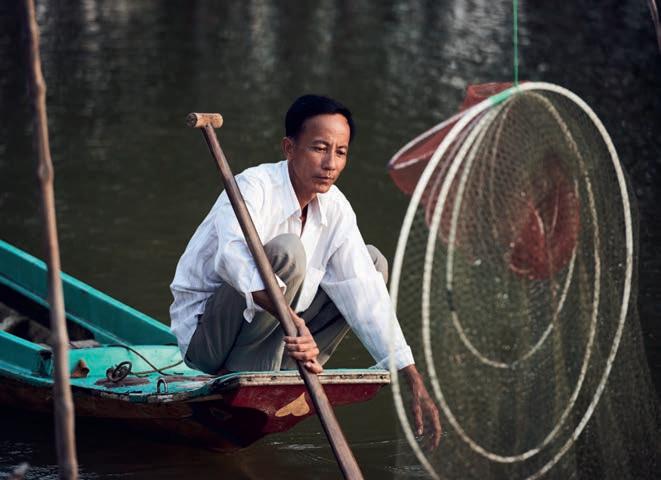
In contrast with common practice in farming, Selva Shrimp are reared in their natural environment – brackish water in mangrove forests – without the need for external feed or any other input such as chemicals or antibiotics.
The mangroves themselves are a key element in production. Although the mangroves planted in the ponds are not original, undisturbed forest, they restore at least some of the original ecosystem and with it its ecosystem function.
Selva Shrimp feed on the naturally occurring food resources in the restored mangrove forests, such as small invertebrates or on the periphyton – the diverse community of algae, bacteria and other microscopic species that grow on submerged surfaces in aquatic environments. The complex root systems of the restored

SHRIMP
www.fishfarmermagazine.com 44
Opposite from top: Black �ger pra ns farmer
ith net mangro e forest


This page from top: Sel a Shrimp packshot shrimp farming is a family a air farmer collec�ng the shrimp for har est
mangroves increase the submerged structure, providing more area for the periphyton to grow on as well as creating a more suitable habitat for smaller invertebrates, which then in turn serve as food resource for the shrimp. This results in shrimp ponds with integrated mangroves having a higher production compared with similar ponds without mangroves.
”The pools in which the shrimp grow are filled or emptied using the tides, so water exchange takes place passively – that is, through the sea’s movement, not through pumping, which also reduces cost and carbon footprint for the business.
As Jonas Walker, Lead Consultant of Blueyou Consulting Ltd, puts it: “It’s ‘zero input’ farming system. All the farmers need to add are the small juvenile shrimp (PLs or post larvae) but neither feed nor electricity are needed for the grow out of the shrimp, which can be harvested three to six months after the initial stocking of the PLs.
“This approach produces less volume than intensive farming, but it means low costs for the farmers and therefore significantly reduced risk.”
A mesh in the water gates keep larger finfish out and the black tiger prawns in, but wild shrimp larvae and small fish larvae can get in. When the shrimp are grown, the farmers open the water gate and catch the shrimp in nets, which are put in the water gate.
Because the water gates allow smaller larvae to enter the ponds, this approach is effectively a polyculture, where a number of different species co-exist. For Selva Shrimp farmers, this means that next to the stocked black tiger shrimp, they also have wild shrimp growing in the ponds, as well as mud crabs – there is a good market for both of these in Asia.
As Walker explains, this is a further advantage of these systems. The multiple species grown in a polyculture buffer the impact and risk of diseases or market price fluctuation. If the black tiger shrimp suffer mortalities or the market price is very low, the farmer still has other products to fall back on, which basically act like an insurance, securing a certain income even if one of the crops fail.
The farmers are responsible for growing and harvesting the shrimp, which are then sold to a processor, who sells the packed and frozen produce to Blueyou. Third-party auditors monitor the whole production process and ensure that flows of Selva Shrimp and non-Selva Shrimp are kept separate as they pass the process.

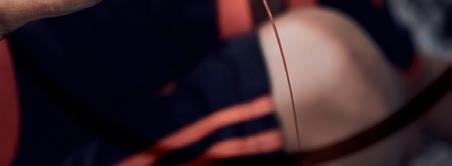
Walker says: “Almost all our Selva Shrimp are certified organic and/or ASC [Aquaculture Stewardship Council] certified, as well as certified under our third-party audited Selva Shrimp Standard.”
The biggest market for Selva’s branded shrimp is currently the US and Canada. Many are also sold in southeast Asia, especially to the larger hotel chains. Europe is being developed as a market, especially Switzerland, where the Blueyou head office is based.

Branching out to Borneo
As well as Vietnam, where production is established, Blueyou is also investing in Kalimantan, Indonesia – on the island of Borneo.
Existing shrimp aquaculture in the area uses large ponds. These are typically non-fed and passive systems, relying on tidal flows and naturally occurring food resources, but have largely been cleared of mangrove trees and suffer low and declining productivity.
Within the Selva Shrimp Indonesia Program, Blueyou is reforesting these existing ponds with mangroves, increasing the pond productivity. It aims to certify the products from the project ponds
against either organic or ASC standards in the next two years.
Last year, Selva Shrimp produced about 1,000 tonnes of raw product, amounting to 600 to 700 tonnes of final shrimp product for retail.

Walker says:
“We are looking to reverse the narrative of shrimp farming and mangrove deforestation. By making mangroveintegrated shrimp ponds more productive and lucrative for farmers, the farming of shrimp, once responsible for the mangrove deforestation, under Selva Shrimp, becomes the main driver for mangrove reforestation.

“There are literally hundreds of thousands of hectares of extensive but underperforming shrimp ponds in southeast Asia alone. It’s a tremendous potential for reforestation and for improved and more sustainable shrimp farming practices as well as for better livelihoods for the local shrimp farming communities.”


www.fishfarmermagazine.com 45
We are looking to reverse the narrative of shrimp farming and mangrove deforestation
Ready for round two
Plans for an innovative semi-closed fish farm on Loch Linnhe are being presented to the public this month, but an opposition group is already preparing to try and block it
have regarding the current approach. The company says it wants to bring new jobs and investment to Argyll, securing the future of one of the most important parts of Scotland’s rural economy, while addressing these concerns.
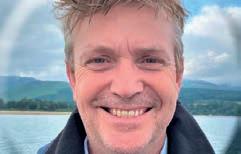

The dates and times of the exhibitions for the Lurignish Closed at Sea Fish Farm are as follows:
Duror & Kentallen Community Centre
14 September (2pm to 7pm)
Appin Village Hall
24 October (2pm to 7pm)
THE company hoping to farm salmon on Loch Linnhe with a new closed containment system will be presenting its plans to the public, starting this month.
Loch Long Salmon has submitted a Proposal of Application Notice (PoAN) notice to Argyll and Bute Council for a “closed containment at sea” salmon farm near Lurignish cattle farm on Loch Linnhe, along Scotland’s west coast.
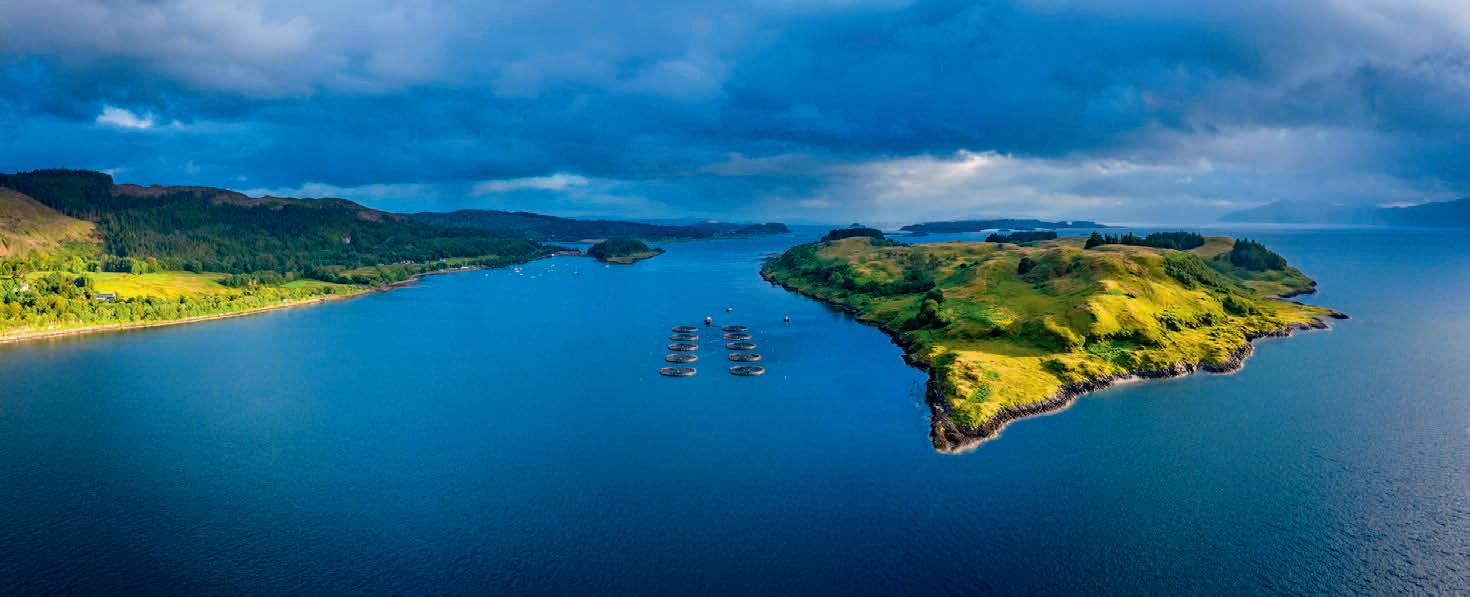
Last year, an application by the company for a new farm at Beinn Reithe, near Arrochar, was turned down by the Loch Lomond and the Trossachs National Park board.

Alternative plans for a site at Balnagowan, also on Loch Linnhe, have been dropped and the company will now be focusing on Lurignish, near Shuna Island.
Loch Long Salmon argues the use of closed containment at sea salmon farming systems, often called semi-closed containment, addresses environmental concerns some

More info is available at the Loch Long Salmon website (www.lochlongsalmon.com).


The marine infrastructure would include eight closed farming enclosures measuring approximately 50m in diameter as well as two freshwater holding units and a closed harvest enclosure.
The shore base would be located adjacent to the marine infrastructure, approximately half a kilometre west of Lurignish Farm.
From the surface, the containment at sea farm would look similar to a conventional salmon farm, but underneath the water, the net is surrounded by an impermeable membrane, with water drawn up and circulated from deeper in the loch. The aim is to protect the fish from sea lice and attacks by seals, meaning that sea lice treatments or acoustic deterrent devices should not be required.

The secondary barrier is also intended to capture almost all the salmon waste. This would be recovered and used in green energy production or as a fertiliser ingredient.
Low impact fish farming?
Commenting on the application, Stewart Hawthorn, Managing Director of Loch Long Salmon, said: “We have already met with many local people as we have been developing our proposal for this location. I am proud to be bringing this approach to Scotland as we seek to address environmental and fish welfare concerns regarding the salmon farming sector in Scotland.
“Delivering low carbon, low environmental impact food is one of the key global challenges we face as a society. We must bring this technology to Scotland quickly so we are part of the solution to man-made climate change and to address more local environmental and fish welfare concerns.
“Inaction is no longer an option; we must act urgently and embrace change if we are to make a positive difference.
“I hope as many people as possible will come along to the next two events now that the formal planning application process has started so we can explain how transformative and proven closed containment at sea salmon farming could bring jobs and investment to the community, while addressing environmental concerns.”
LOCH LONG
SALMON
www.fishfarmermagazine.com 46
Opponents are set for a fight
The plans are set to face opposition, however, from a group arguing that the development will have an unacceptable environmental impact.
Campaign group Long Live Loch Linnhe says that the proposed design would permit all the fish urine to enter the loch and around 15% of the solid waste.
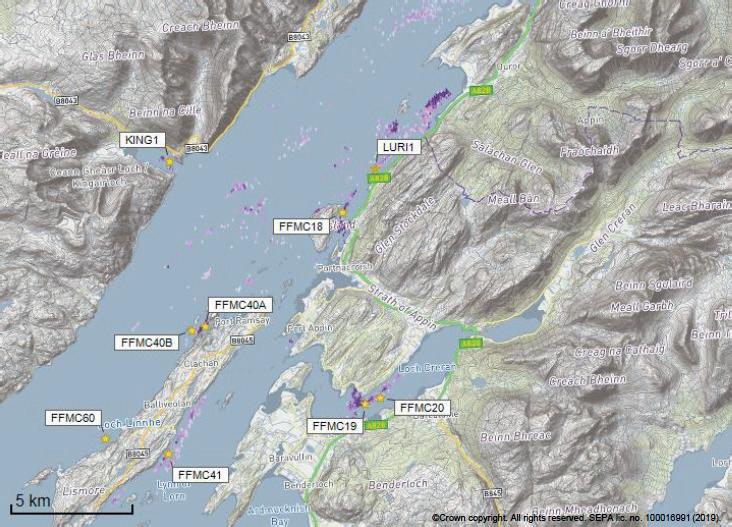
The group said in a statement: “Loch Long Salmon is attempting to greenwash away the real damage that their proposed mega-farm will have on Loch Linnhe, its wildlife and the people who depend on it.
“The farm will be massive, the largest in Scotland, with the biomass of 11,000 cows or 25 times the population of local town, Fort William… Using unproven technology, the company has presented no evidence to show that this energy-intensive mega-farm will be either sustainable or carbon neutral.
“Accompanied by an onshore industrial estate with massive lorries operating day and night, the company will employ perhaps a handful of people while risking hundreds of jobs supported by local tourism and outdoor activities. No wonder huge numbers of locals are joining the campaign to prevent this catastrophic development.”
A spokeswoman for the group said it is entirely composed of local residents and
businesses from around Loch Linnhe. She added: “We’ll carry out a rigorous review of the application, contact MSPs and councillors to oppose it, and issue a petition to local residents and business owners. We’ll take the campaign as far as we need to.”
Meanwhile, Loch Long Salmon is moving forward with its appeal against the decision by the Loch Lomond and the Trossachs National Park board, which rejected the company’s original planning application for a salmon farm at Beinn Reithe on Loch Long.
A hearing and inquiry is due to be held at Three Villages Hall, Arrochar, starting from 25 September, overseen by David Liddell, a reporter with the Scottish Government’s Planning and Environmental Appeals Division. The deadline for the submission of hearing statements was 1 September.
A SLICE® of science excellence
Hutton Limited surpasses SEPA validation requirements for emamectin benzoate analysis
James Hutton Limited continues to provide analytical services to help fish farmers attain the maximum acceptable concentration (MAC) of emamectin benzoate (EMB). Recent changes in legislation require analysis for EMB pesticide in marine water and sediments to detect levels 1,000 times lower than previously.
The active ingredient in SLICE®, EMB is used to control sea lice – a major problem in aquaculture. The team at James Hutton Limited are experienced in this sector and have been carrying out EMB analysis to the detection limits previously required for more than 15 years.
The organisation has adapted
its technology to meet the new legislative requirements using liquid chromatography triple quadrupole tandem mass spectrometry (LC-MS/MS). The methodology is validated to the requirements of SEPA and now is the
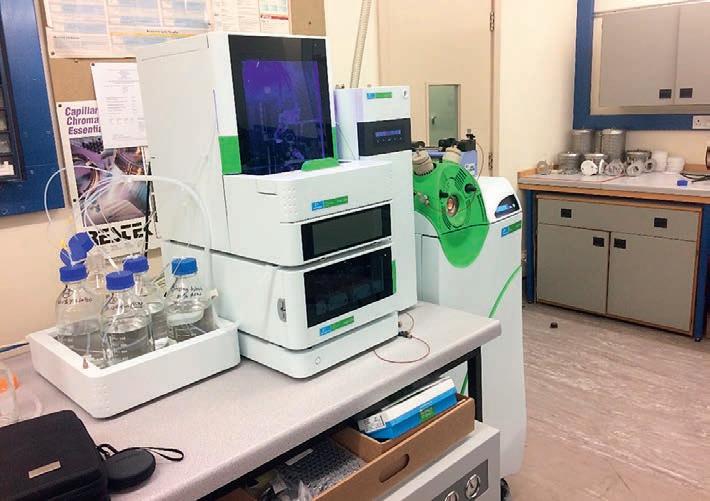
time to learn more about the services and how they can help you.
Four key benefits of using James Hutton Limited:
• analysis is carried out by our worldclass scientists at the renowned James Hutton Institute;
• we use sophisticated analytical instruments to complete the analysis;
• we can reach the new detection limits that are extremely difficult to achieve; and
• it will ultimately allow your fish farm to keep operating!
For more information, please reach out to Gareth Newman, Service Delivery Manager in Analytical Services: email Gareth.newman@huttonltd.com or visit www.huttonltd.com
We must bring this technology to Scotland quickly
”
www.fishfarmermagazine.com 47
Opposite from top: Loch Linnhe and Shuna Island; example of a semi-closed salmon farm; Stewart Hawthorn; Loch Long Above: SEPA model for sediment intensity for Lurignish (LURI1), assuming 90% sediment reten�on (map)
James
Above: ames Hu�on Limited s state of the art mass spectrometry e uipment
Gearing up for growth

THE United States seafood industry is gearing up for the biggest shake-up in its entire history.



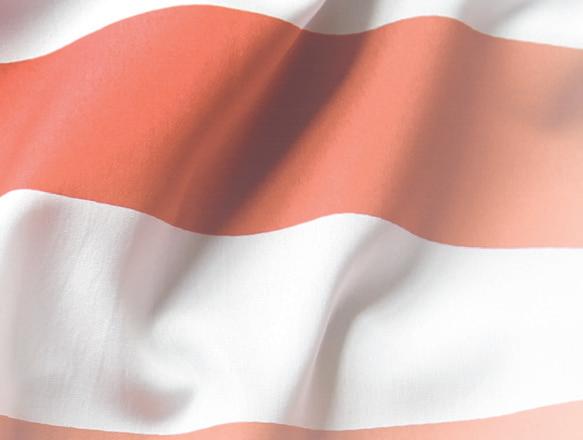
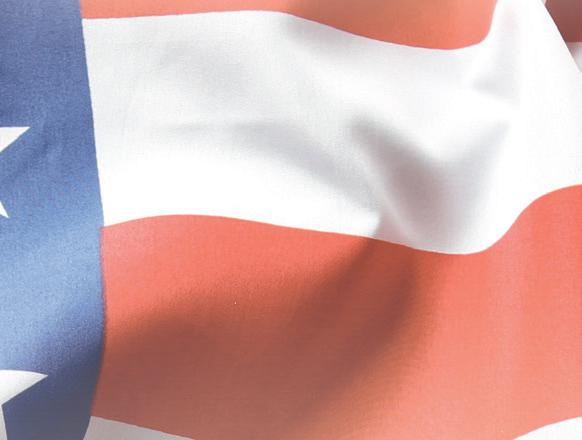
Last month, the National Oceanic and Atmospheric Administration (NOAA), which watches over everything connected with climate, air quality and water, unveiled the principles that will underpin a sweeping five-year plan to transform the nation’s fishing and aquaculture sectors.

The strategy will embrace virtually everything from sustainability to global marketing and marketing underperformance to improving competition.
Despite having the world’s second-longest coastline at 95,000 miles, the US continues to import up to 85% of its seafood – with more than half of that figure coming from foreign aquaculture producing countries such as Norway and Scotland. The NOAA says it wants to bring that ratio down.
While Americans love their fish, not everyone wants the means of production to be too close to home. New aquaculture projects,
even while they offer to create local jobs, frequently face opposition from fishing and environmental groups, leading to lengthy planning delays. Overseas investors find this frustrating.
This is the first time the NOAA has released an overall strategy aimed at addressing industry needs and shortcomings – the agency says it will complement other federal policies that are already in place.

However, it has come in for criticism across the Atlantic for being high on rhetoric but vague on detail and cost.

















Nevertheless, it is a serious attempt to correct the neglect and poor strategies that have dogged the industry in the past.

The National Seafood Strategy outlines the nation’s direction over the next five years for supporting a thriving domestic US seafood economy and enhancing the resilience of the seafood sector in the face of climate change and other stressors.
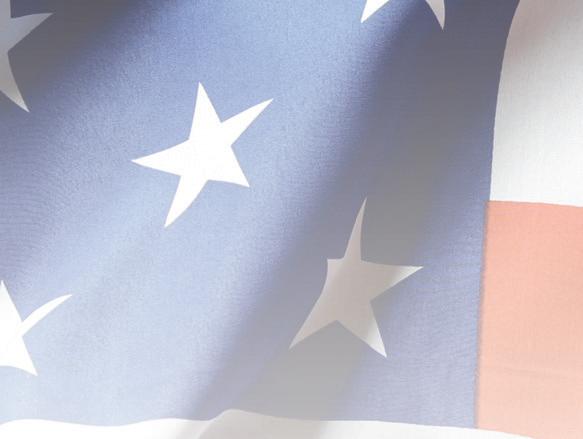


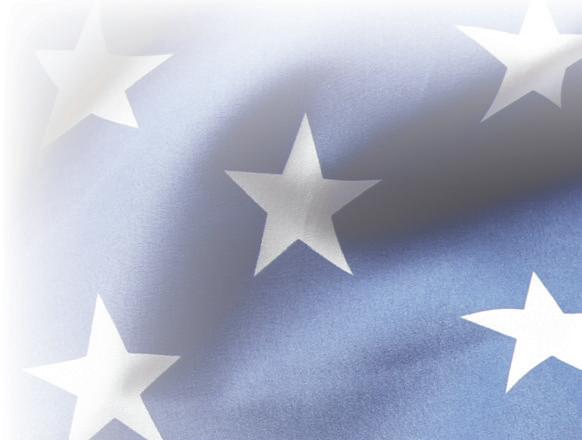

The NOAA says its vision is to ensure:
• US seafood continues to be produced sustainably;




• the sector contributes to the nation’s climate-ready food production and to meeting critical domestic nutritional need;


• increased production to support jobs, the economy and the competitiveness of the US seafood sector;
















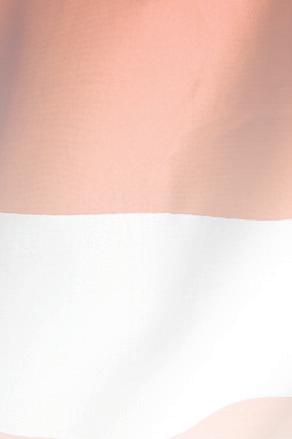





• supply chains and infrastructure are modernised with more value-added activity in the United States; and
• expanding opportunities for a diverse and growing seafood workforce.






www.fishfarmermagazine.com 48 USA
Top: Fresh salmon on ice
Above: Uncle Sam wants you… to eat more seafood; NOAA Fisheries a�onal Seafood Strategy
Left: Fresh and frozen seafood at a Florida supermarket
Opposite: Oyster farm, Maine
The US punches below its weight in seafood production, but a key government agency is looking to change that, writes Vince McDonagh
NOAA’s National Seafood Strategy
Its strategy message is “seafood is good for people”; this sector is of the best sources of nutrients essential for human health and well-being. It is also critical to providing food to a growing global population and is a foundational part of the identity of coastal communities.
The report also says seafood is good for the economy. The US harvests 10bn pounds (more than 4.5m tonnes) of seafood annually with a dockside value of $6.3bn (£4.9bn). Domestic seafood is also an economic engine that supports 1.2m jobs and generates $165bn (£129bn) in sales across the broader economy.
One of the principal goals will be an increase in sustainable aquaculture production across the nation.
Encouraging consumption, improving regulation

The NOAA says: “Seafood is a healthy and climate-friendly nutrition choice and demand is increasing.

“Aquaculture of finfish, shellfish, invertebrates and seaweed is one effective way to increase domestic seafood production significantly – it is how the majority of growth in global and domestic demand has been met in the last 20 years.
“Supporting diverse and regionallyappropriate growth of the domestic aquaculture industry will depend on an efficient, strategic and science-based regulatory approach that considers and mitigates impacts on protected resources, essential fish habitat and marine ecosystems.”
The plan is to accelerate progress in implementing an efficient, predictable, timely and science-based regulatory framework for marine aquaculture. It will also include science-based advice and tools to minimise potential effects of an aquaculture operation on the environment

and conduct coordinated, applied scientific research to support sustainable industry development.

The NOAA also wants to foster access to domestic and global markets – in other words, opening up export opportunities for US producers.
“A thriving domestic seafood industry – capable of competing at home and abroad – will translate into greater global seafood supply and food security from sustainable US fisheries. It will also decrease our reliance on foreign fisheries that are at greater risk of overfishing, IUU [illegal, unreported and unregulated] fishing and forced labour,” the NOAA adds.
Measures will include:






• Communication and promotion: increase public awareness of the availability, sustainability and nutritional value of all US seafood.
• US market development: work with federal partners and others to identify and develop US seafood markets and put more American seafood on American plates, particularly for the underserved.

• Fair trade: promote fair seafood trade by combating IUU fishing and related harmful fishing practices around the world and by expanding access to foreign markets for US seafood.


On conventional or wild capture fishing, the strategy will be to maintain or increase sustainability.
The report concludes: “Changes in ocean conditions and the resulting shifts in distribution and abundance of marine resources, and the intensity of extreme events such as heat waves and damaging storms, are affecting access to fishing opportunities, production of seafood and fishing to support local dietary needs, cultural traditions and tribal treaty rights.
“These factors, in addition to new ocean uses and advances in sampling technologies and data modernisation, call for an evolution in science and management frameworks for a climateready seafood sector.”

The NOAA is calling for changes in a number areas, including:
• Fisheries science: providing the natural and social science necessary for fisheries management to adapt under changing ecosystem dynamics.


• Fisheries management: optimising and diversifying fishing opportunities and sustainable seafood production, while ensuring the sustainability of fisheries through effective and efficient management.




• Habitat conservation to support fisheries: protecting and restoring habitat important to the nation’s fisheries and supporting resilient coastal communities.





Strengthening the entire sector
The NOAA says climate change, the Covid-19 market disruptions and new ocean uses are highlighting systemic challenges to the seafood industry. As such, it stresses the importance of supporting the entire value chain, including what happens after fish arrives at the docks. Addressing these challenges will help the seafood industry to rebuild more quickly and enable the industry to be more resilient and flexible in the face of potential future crises and market shocks, NOAA says.
It adds that seafood is a vital part of the blue economy so it will be important to support commercial fishing, marine aquaculture and other seafood communities to adapt and thrive in a changing ocean economy.
Other features include fostering a growing and diverse workforce and encouraging more young people to join the industry.
”
One of the principal goals will be an increase in sustainable aquaculture production
www.fishfarmermagazine.com 49
Thirty years of MERL
The Institute of Aquaculture’s Marine Environmental Research Laboratory has played a key role in the development of aquaculture over three decades
For three decades, the Marine Environmental Research Laboratory (MERL) has been at the vanguard of aquaculture research and innovation.
Part of the University of Stirling’s worldleading Institute of Aquaculture (IoA), the coastal facility near Campbeltown on the Kintyre peninsula hosts a wide range of academic and contract commercial research.
IoA’s vision is to tackle global problems of food security, hunger and sustainability through aquaculture and our work was recognised with the award of the prestigious Queen’s Anniversary Prize.
We have an international reputation for our teaching, world-class research, technological innovation, and consultancy in aquaculture.

MERL has played a huge part in cementing that reputation. The laboratory provides large scale facilities for experimental studies on fish in seawater and a range of research resources, including live cultures of commercially important pathogens.
The University’s ongoing commitment to MERL was recently underlined with a £2m refurbishment which began earlier this year. MERL was opened 30 years ago by the then Chief Scientist to the Cabinet Office, Professor William Stewart, and Professor Arthur John Forty, who was Principal and Vice-Chancellor of the University of Stirling. It took 18 months to develop MERL’s complex facilities at Machrihanish, a site chosen for its high-quality Atlantic seawater.
Former MERL director Dr Derek Robertson, who worked at the facility for more than two decades, said: “The impact of MERL for the aquaculture industry was enormous.
“Most of the licensed drugs in use for salmonid aquaculture worldwide were trialled at MERL, and marketing licenses secured using the data from these trials.

“Products were successfully developed for control of sea lice; novel feeds and vaccines were created; and MERL was also largely responsible for the development of the farmed cod industry in Scotland.
“MERL went on to pioneer the commercial development of cleaner fish technology using ballan and goldsinny wrasse, work which has led to very extensive academic research by IoA staff into all aspects of cleaner fish technology.
“The most important research project MERL participated in during my time there was the testing and trial of ScheringPlough’s Slice product, the first licensed sea lice therapeutic.
INSTITUTE OF AQUACULTURE – CLIENT CONTENT
Most of the licensed drugs in use for salmonid aquaculture worldwide were trialled at MERL
” www.fishfarmermagazine.com 50
The facility would go on to revolutionise marine aquaculture.
“The late Janet Stone and Professor Chris Sommerville pioneered the technique for cultivating sea lice and then developed reproducible challenge techniques which formed the foundation for all sea lice challenge trials that followed.
“It is no exaggeration to say that the Scottish aquaculture industry would not be as successful as it is today without MERL’s pioneering involvement.”
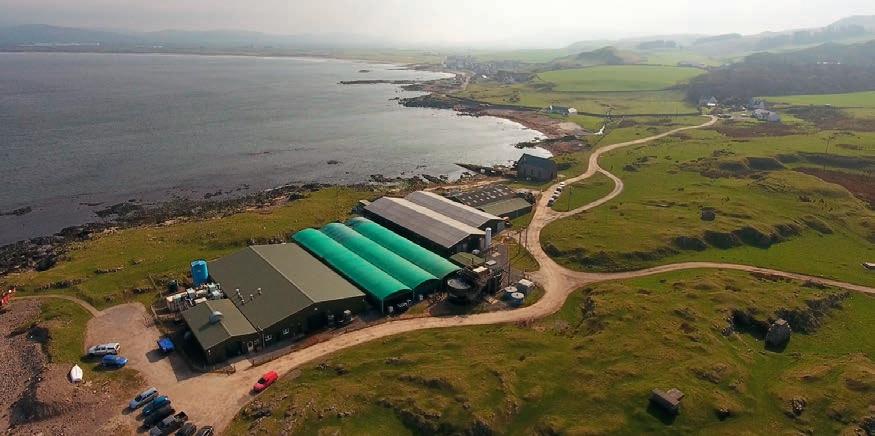

Thirty years on, MERL’s staff and facilities are still the natural first choice for academic, commercial, and public research partners across the globe.
Professor Simon MacKenzie, head of the University of Stirling’s Institute of Aquaculture, said: “We are all very proud of MERL, its history, the fantastic people involved across the years and its legacy as a standout landmark in aquaculture research and development.
“We are delighted with the investment to take MERL to further support the Institute in developing the next level of cuttingedge research, teaching and innovation in our ambitious new strategy.”
Opposite:
Above: MERL has an interna�onal reputa�on for orld class research and technological inno a�on

Cutting-edge research
Dr Armin Sturm’s work at MERL has sought to understand and monitor sea lice resistance against treatments. Studies carried out at MERL have contributed to improving sea louse management by defining genetic markers for resistance monitoring. Moreover, knowledge of the mechanisms of resistance provided the basis for the development of medicines less prone to drive resistance development.
Dr Sturm said: “At MERL, the different wellcharacterised salmon lice strains maintained in culture were key to the above research projects. Staff at MERL further contributed to designing and carrying out sea lice crossing experiments where the parentage of each individual is known, which is an essential requirement for genetic mapping approaches used in the studies.”
Dr Susan Fitzer’s research at MERL examined the mixed effects of pH, temperature, and feeding regime on carbon sequestration and shell growth. The aim of this research was to identify the pathways of carbon uptake into the shells,
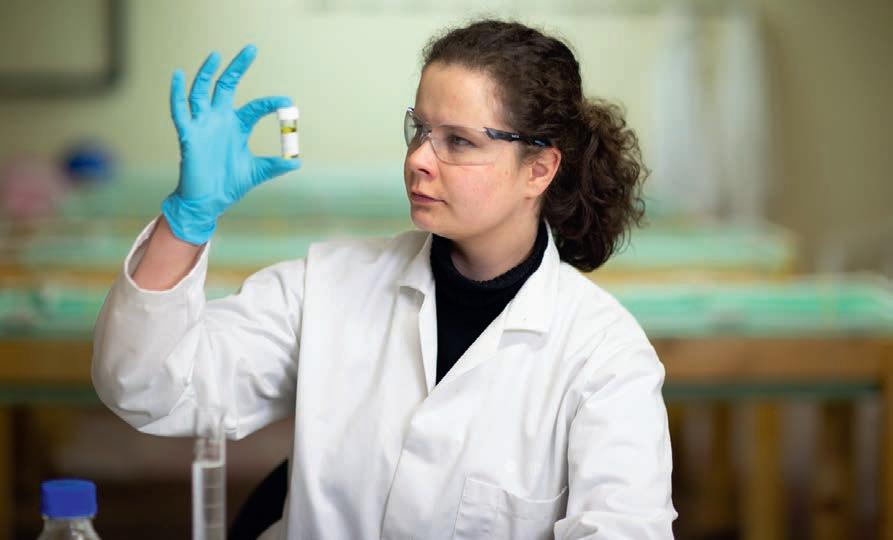
and the potential resultant changes in shell mechanical properties using an experimental approach.
Dr Fitzer said: “MERL provided the essential laboratory facilities to enable the experimental culture of mussels and oysters under laboratory simulated ocean acidification and warming scenarios. The staff including Simon Barnett and Chessor Matthew, were instrumental in their support during experimental culture ensuring mussels and oysters were cared for during the twomonth long experiments.”
Professor Bret Glencross has examined how environment and nutrition interact to affect fish performance. Experiments were run at MERL where diets with different levels of long-chain omega-3 were fed to fish under either hypoxic (low oxygen) or normoxic (normal oxygen) conditions. Additional variables of diet lipid level and ration were also introduced in the two different experiments. The work led to revisions of dietary recommendations for levels of omega-3 in diets for salmonids being made
by major suppliers of omega-3 resources. Professor Glencross said: “The facilities and expertise at MERL were critical to these two projects. Each experiment ran over four months and required daily monitoring and management of the fish, feeding systems and water oxygenation control. This latter facet was particularly challenging, as it meant round-the-clock management of the system. The staff at MERL were crucial in not only the operation of these trials, but also their design, ensuring that four world-class experiments were delivered.”
MERL capabilities



MERL has 125 flow-through and recirculation tanks, ranging from 0.1 to 13 cubic metres, which are equipped with environmental monitoring, automatic feeding systems, feed recovery, and a liquid oxygen supply. There is also a dedicated quarantine facility. Seawater can be filtered, sterilised and temperature controlled. Several experimental systems of up to 36 identical tanks are available for replicate trials. Systems can be built to meet requirements for size, water quality, feeding, lighting and other variables. MERL manager Chessor Mathew said: “We maintain Atlantic salmon on site for trials aimed at improving salmon and trout aquaculture in Scotland and around the world, and we will always consider new species, assays, and challenge models. As part of the University of Stirling’s Institute of Aquaculture, we have access to a wide range of academic collaborators.”
MERL Senior Technician David Basset added: “We can help companies and academic groups design, plan and cost an experiment. We have staff who can assess the welfare of the fish, collect and analyse data, and write up reports that are ready to be submitted to regulators.”
MERL Senior Technician David Basset
www.fishfarmermagazine.com 51
The Marine Environmental Research Laboratory (MERL) at Machrihanish, near Campbeltown on the Kintyre peninsula
Water quality
Updates from the water quality sector
Water onitorin at its ost effecti
ANB Sensors presents innovative accessories to enhance the company’s calibration-free water quality sensors. The intelligent battery housings accommodate lithium-ion batteries and are rated up to 900m depth. With a built-in power management system and battery voltage monitor, they ensure prolonged lifetimes, whilst the onboard datalogger simplifies data retrieval. The flow adapter streamlines sensor integration into flow lines, which are pressure rated to 7 Bar and ideally suited for use in flow systems, ferry boxes and RAS (recirculating aquaculture facilities). Explore these advancements for efficient environmental water monitoring. .anbsensors.co

e
one treat ent safe for s olts’
Researchers at Norwegian institute Nofima say ozone treatment is safe for post-smolts – up to a point. Ozone is used in the disinfection of recirculating aquaculture systems facilities, but it is mostly used only in freshwater systems, because seawater contains bromides that, on contact with ozone, form free bromines, which are toxic. High ozone levels can therefore cause respiratory impairment for fish, resulting in high mortality. So how much is too much in the brackish water typically used for post-smolt production? The Nofima study showed 300 to 350 millivolts to be the maximum safe dose for Atlantic salmon. This level of ozone also proved an effective disinfectant.

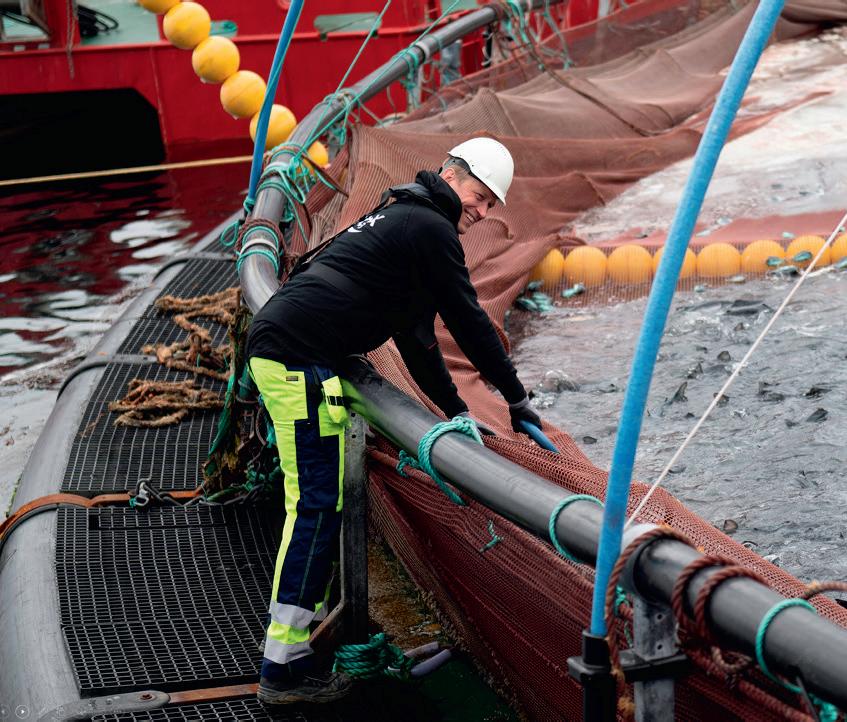
Norwegian-Swedish biosecurity cooperation for fish far in

Bluefront Equity-owned ozone and oxygen specialist Redox AS has agreed to work with Swedish company Anolytech to develop new solutions for optimisation of water quality and hygiene for the aquaculture and fishery industries.
Anolytech has developed a technical solution that enables production of its AnoDes disinfectant at the site it will be used. AnoDes kills bacteria, viruses, mould, fungi and spores through an environmentally friendly disinfection of water and surfaces. Norway-based Redox will, through the collaboration, offer Anolytech’s technology to the fish farming and fishery industries, both as part of its own offering and on a stand-alone basis.
www.fishfarmermagazine.com 52 WATER QUALITY
ith the
Taking care of the biome
The health of the community of microbial organisms in an RAS facility – or biome –has been shown to be directly related to the health of the fish. The right kind of bacteria can help to break down organic material and toxic compounds, while the wrong kind can add to toxins in the system, as well as being pathogens in their own right.
This means that managing the biome of the water itself and in the biofilter is a critically important task. Reliance on standard disinfection and antimicrobial treatments, for example, runs the risk that beneficial microbes will also be wiped out.







MONITORING and managing water quality in recirculating aquaculture systems (RAS) is a matter of life and death for the fish kept in those systems – and is certainly a business-critical issue for those operating them.
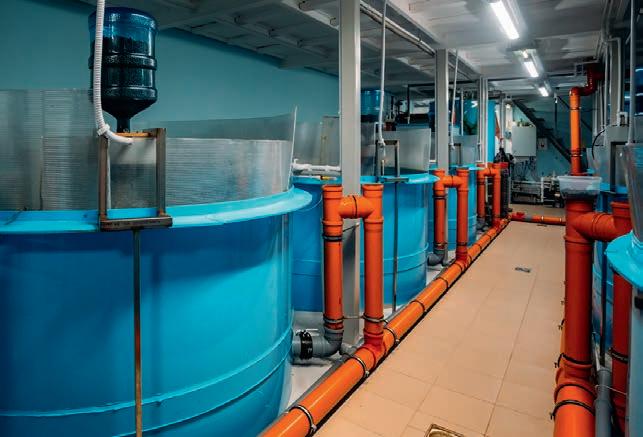
Despite its importance, however, the parameters for water quality and the means of measuring it have not been set out in regulations, leaving fish farmers with a choice in what is a competitive market.
Petra Lindholm-Leto of the Natural Resources Institute Finland (Luke) has written a useful summary of the state of play in RAS, based on a review of available research (“Water quality monitoring in recirculating aquaculture systems”, published Aquaculture,Fish and Fisheries, February 2023).



She looked at a how different factors are monitored, including physical parameters, organic contaminants, biological contaminants and pathogens. Water quality can be measured in terms of – for example – pH, temperature, DO, salinity and/or turbidity.
Lindholm-Leto says: “There are currently no regulations for which parameters to measure and each farmer has their own view of and possibilities for water quality measurements. So far, there are no guidelines for acceptable ranges and fluctuations… although suitable ranges vary between different species, certain guidelines would be a valuable tool for designing and running an RAS facility.”
She notes that manual, handheld monitoring devices are gradually being replaced by intelligent systems that could detect problems before they become serious and can communicate with remotely based users using internet of things (IoT) technology.
And she concludes: “All the new IoT-based monitoring systems can monitor the basic water quality parameters (DO, pH, temperature, turbidity and salinity), which can be sufficient for regular monitoring purposes.
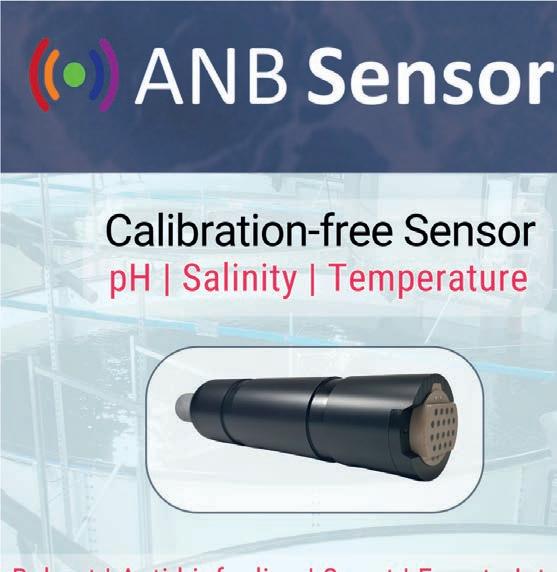
“However, the more advanced analyses (for example, off-flavours, cortisol levels) still need to be performed in a laboratory and cannot be performed in real-time. These may also require more advanced analysis equipment and can only be performed by trained personnel. Development of new techniques, which allows realtime monitoring of the more advanced water quality parameters, remains as a subject of future studies.”




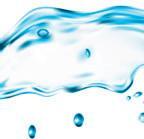










Esox Biologics uses the discipline of metagenomics, the study of all genetic

















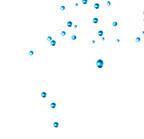
















 Left: RAS farm
Below: Dis�nguishing pathogens from beneficial bacteria is ital
Left: RAS farm
Below: Dis�nguishing pathogens from beneficial bacteria is ital
Water quality in RAS is critical and our understanding of it is constantly evolving
www.fishfarmermagazine.com 53
WATER QUALITY
information found in a given environment, to identify the presence of potentially dangerous pathogens before they have an opportunity to multiply and cause symptoms of disease in the stock of fish.
The result is what the company calls “precision diagnostics”. Esox believes it will usher in a new age in fish health.
Meanwhile RASLab, based in Bergen, Norway, has teamed up with microbiome technology start-up KYTOS to offer commercial services to manage and optimise the microbial health and performance of RAS systems.
KYTOS offers a unique quantitative overview of the microbiome in the water and biofilter through its RASCheck, RASScreen and RASManage service programmes that complement RASLab’s RASseq services.

By undertaking these combined analyses, it becomes possible to understand how microbiome management decisions affect the biofilter in terms of performance and resilience, as well as the total microbial environment of the RAS. KYTOS uses big data and artificial intelligence to create tools that can be used to help management make informed decisions.
Using this information, bespoke services can be offered for optimising system and fish performance.

Ruben Props, Co-founder and CEO of KYTOS, says: “With RASLab, we have identified a great commercial and R&D synergy for our RAS services. This collaboration aids us in fulfilling our core mission of making microbiome management tools smarter and more accessible to the industry.”
Mark Powell, CEO of RASLab, said: “Our RASseq services are complemented by the KYTOS toolbox. This collaboration fits in nicely with our provisions of microbial and lab support services to the industry and our research customers, and is yet another part of how we drive for ‘innovating the future of aquaculture’.”
Hydrotech’s Nutri-PackTM passes the test



In the spring of 2023, Hydrotech – Veolia Water Technologies completed a demonstration plant of their Nutri-Pack technology at a Bioretur’s smolt wastewater site in Stord, Norway. The aim of the



























project was to validate the use of the new Nutri-Pack smart controller for wastewater treatment of salmon smolt. Results showed better than expected reduction of total suspended solids and nutrients, and validated that the smart controller functions as intended in this environment.
Hydrotech’s Nutri-Pack is a product designed to chemically pre-treat water before filtration with a drum filter. Water from the fish farm flows through a two-step process: coagulation followed by polymer flocculation.





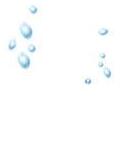















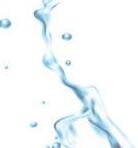


The water treatment process has been used in wastewater treatment at municipal and industrial sites for about 20 years. The new smart controller uses instruments to minimise chemical dosing. This has two advantages: it lowers the consumption of chemicals and prevents the filter from clogging due to chemical carry-over.
The test period covered a typical cycle of smolt growth. Lab tests showed that the total nitrogen concentration in water from this site could be reduced by more than 90%.
The Hydrotech system also consistently reduced turbidity down to acceptable levels – even though the level of turbidity in the waste water varied across a wide range at different points in the smolt cycle.


WATER QUALITY
”
There are currently no regulations for which parameters to measure
www.fishfarmermagazine.com 54
Above: Hydrotech –measuring water quality
The Power of Metagenomics





State-of-the art DNA surveillance can surpass current diagnostics approaches
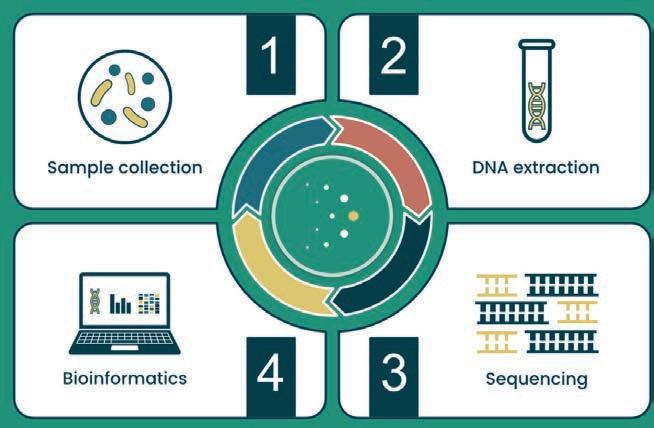












Aquaculture is under pressure. Last year’s Salmon Production Survey revealed that even though output marginally increased in 2021, the general trend of decreasing Year 2 survival continues. This alarming drop in fish health also results in economic loss. Mortalities arise when animals succumb to stress induced by an imbalance in their physical, chemical and biological environments. This can be routinely monitored, with data accessed remotely. Similarly, meteorological monitoring is habitual and seamless. Emerging companies even offer stress monitoring services using blood markers.

We are increasingly aware, however, of the role that the biological environment plays in the emergence of disease. Metagenomics, the study of all genetic information found within an ecosystem, has the potential to unlock a world of secrets, key to supporting animal welfare and reducing mortalities.


All animals are susceptible to infection and aquatic species are no exception. As aquaculture expands, so too does the number of animals living in close proximity, increasing the propensity of diseases to spread.





Pathogens are disease-causing organisms. Many have become infamous within aquaculture: Flavobacterium psychrophilum, Yersinia ruckerii, Neoparamoeba perurans and Tetracapsuloides bryosalmonae all have a familiar ring. However, they are ubiquitous and do not exist in isolation, making up complex microbial communities known as microbiomes. Livestock are continually exposed to fluctuating populations within this potentially disease-causing concoction.
Traditional diagnostic methods, including both molecular and histological techniques can be used to confirm the causative agent and inform treatment, but only offer reactionary insights once diseases emerge. Unfortunately, many microbes remain uncharacterised and poorly described. What if we could see red flags early, detect emerging pathogens, forecast seasonal outbreaks and identify antibiotic resistance genes? Unsurprisingly, the industry is now searching for solutions to anticipate disease, inform treatment strategies and do so with time to spare. The battle against infectious disease is where the
industry now craves innovation the most. Metagenomics has entered the field, bringing with it the ability to monitor total microbiomes. It uses next generation DNA sequencing and sophisticated bioinformatics pipelines to identify organisms from their unique genetic code. It can accurately detect highrisk pathogens alongside their previously unknown counterparts. Gradually databases of characterised species can be built, and the intricacies of microbiome population dynamics further revealed. Effective disease prevention strategies are only possible if we possess an intimate knowledge of the conditions that give rise to them. All infectious diseases contain a pathogenic culprit, typically microbial in nature. Metagenomics is now revealing the genetic and molecular architecture of all micro-organisms residing within aquatic environments, learning about their relationships with one another and the animals they infect.
Using these ground-breaking insights into aquatic microbiomes, Esox Biologics ushers in a new era of precision diagnostics, identifying detrimental changes in microbial populations, long before pathology and clinical symptoms appear.

Metagenomics offers a way to control disease risk, inform treatment strategies and protect farm health.
If you’d like to find out more or trial our service free of charge, please contact our Product Manager, Ben Mackrow at benmackrow@ esoxbio.com www.esoxbiologics.com





ESOX BIOLOGICS – CLIENT CONTENT
Metagenomics… has the potential to unlock a world of secrets
Above: eForesee sample kit
Left: Atlan�c salmon
www.fishfarmermagazine.com 55 ”
Bottom Left: Eso ork o
Investing in skills
Fish farming offers a variety of routes to advance your career, with skills and training to match, as
AS one of the country’s valuable food exports, premium farmed salmon has long been synonymous with Scotland. Less well-known, however, is the sheer variety of roles and specialisms now required to meet the exacting standards of the sector.
Beyond the core roles of fish husbandry, processing, logistics and sales, there are a whole host of support functions required – everything from hydro-dynamic modelling, compliance and environmental monitoring to veterinary services, business intelligence and communications.
Some require specialist qualifications, but many others are open to all ages and stages with full training provided by the company.
“Across all areas of the business, we have entry level roles that require no specific qualifications, experience or background, be that out on the marine farms, in our hatcheries or processing plants, or in a support function,” according to Scottish Sea Farms.

“Anyone joining us in an entry level role will receive above the Real Living Wage, regardless of age, along with the relevant training, whether that’s on the job or via an external course.”
Testament to this commitment to learning and development, more than 100 of the company’s 650-plus team around the Scottish west coast, Orkney and Shetland are currently undertaking a Modern Apprenticeship.
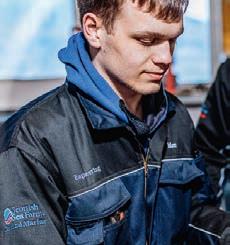

For core farming roles, new entrants begin as trainee husbandry and learn onsite, while also acquiring sector-recognised qualifications, such as sea survival, first aid and commercial boat licences, delivered by outside providers.


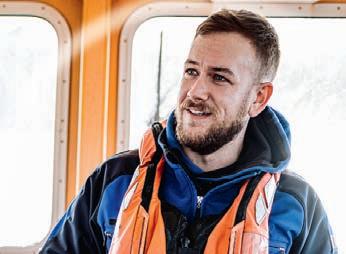
“You can join us straight from school and work your way up to senior husbandry, farm manager and so on,” says HR Business Partner Emma Leyden. “Typically, farming recruits can progress after two years, but it depends on the individual and what they want to achieve.”
For those who do want to advance their careers in the company, there is plenty of scope for promotion.



“We’re always talent-spotting within the team, looking for those ready to take the next step,” explains Claire Scott, also an HR Business Partner at Scottish Sea Farms.
“When someone reaches senior husbandry or trainee manager level, for example, and is keen to progress, we can offer leadership and management training to help equip them with the skills they’ll need going forward.”
This page from top: Marc Hunter; Andrew Park; Mowi worker, Rum Opposite: Rosie ur�s, Mowi
Several current farm managers have been promoted internally from junior positions and have benefited from ongoing training adapted to the role. Scott herself is testament to the opportunities in the company, after beginning her journey at Scottish Sea Farms more than 20 years ago in reception.
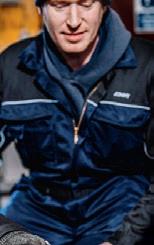
She says: “I did a business management HNC [Higher National Certificate], funded by the company, and when chances to try


CAREERS IN AQUACULTURE
Anyone joining us in an entry level role will receive above the Real Living Wage
Sandy Neil finds
www.fishfarmermagazine.com 56 ”

www.fishfarmermagazine.com 57
new roles came up, such as during maternity cover, I went for them, learning new and different skills. So just as the needs of the business continue to evolve, there’s the opportunity to continually develop and grow with it.”

Supporting vocational learning




Mowi Scotland is making available two apprenticeship opportunities at its salmon farming locations around Argyll and Bute, with earnings of up to £35,740 per annum plus other benefits. Recent apprenticeship programmes have resulted in qualifications that include logistics, business administration, planning, IT and purchasing.




Since becoming available, more than 40 Mowi staff members have completed their Scottish Vocational Qualifications (SVQ), which allow them to take their learnings from the job and enhance their skills with a deeper understanding of the sector, the marine environment and fish health and welfare.




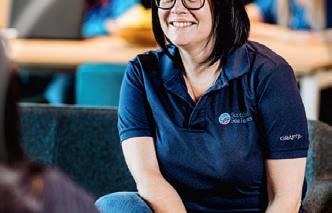
SVQs can often be a stepping stone to career progression at Mowi, as recent SQV recipient Craig MacDonald reflects: “The opportunity to complete my SVQ level 3 in aquaculture while working as a farm technician for Mowi has been instrumental in my career progression, as I am to take the next step in becoming a farm manager in the future. I have gained confidence and invaluable knowledge through the development opportunities provided by Mowi. I look forward to attaining my SVQ level 4 this coming year.”
Meanwhile at Cooke Aquaculture Scotland, its Head of Human Resources Vicci Laird says: “At Cooke, our success is driven by our dedicated employees. We currently employ more than 380 people throughout the UK in well-paid, permanent jobs in areas such as seawater, freshwater and processing, as well as many business support positions including finance, sales, supply chain, fish health... human resources and health and safety.
“We acknowledge this dedication by continually investing in our people through training and development, either via inhouse on-the-job training, apprenticeships, external training opportunities or allowing time to complete professional qualifications. Presently, we have many employees completing Modern Apprenticeships in aquaculture, engineering and business administration. Promoting within is a top priority.”

A skilled workforce





“To safeguard a sustainable future for our sector, the next generation and indeed the current workforce needs to be equipped with the right skills to help aquaculture to thrive,” says Jillian Couto-Phoenix, Head of Skills and Talent at the Sustainable Aquaculture Innovation Centre (SAIC).

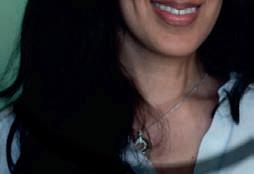
She goes on: “Finding out what the businesses operating in the sector want and need, and matching that up with what skills and education providers are delivering, is key.



“One way we are helping to attract new talent is through our annual summer internship programme. Each year, we also offer funded places to people interested in studying for an MSc in an aquaculture-related subject.
“As well as new talent, upskilling the current workforce is a core focus. Each year, we support around 60 people across various skills and careers programmes, but we are always looking to do more.”

Skillfluence has supported more than 100 participants from Scottish universities and aquaculture industries through training programmes delivered its expert trainers. Over the past five years, Skillfluence has worked with the SAIC to provide “participant-centric solutions”.
Alison Gray, Director of Skillfluence, says: “We are passionate about supporting the growth of the aquaculture industry by contributing to the skills and confidence of those entering the talent pipeline. We are proud of our work with Women in Scottish Aquaculture to support women returners to the sector as well as providing a leadership programme to the existing workforce, who aspire to or are already taking their first steps into a management role as the sector grows.

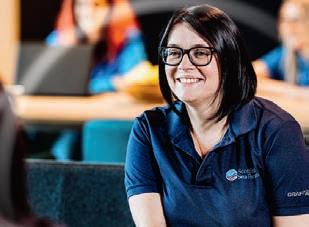
“Supporting innovation in the sector is deeply aligned with our mission. We’ve thoroughly enjoyed meeting academic researchers seeking to develop their skills to become future innovators, build networks to connect with industry and hone their communication skills to collaborate on ideas.”
Zach Sorrells, CTO and Head of Programme Design at Skillfluence, adds: “Our design principles incorporate contributions from subject matter experts who work in the sector, providing participants with visible role models, network connections and lived experience that adds demonstrable value. This really brings the learning to life and we’re always looking for more people to join our community of experts that want to pay forward.”

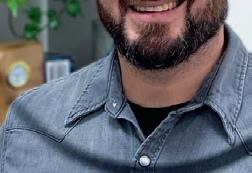
September is the start of a new year of programming. The SAIC team and Skillfluence are looking forward to working with a new batch of MSc and PhD students, and researchers who want to work in the aquaculture industry.


”
The next generation… needs to be equipped with the right skills to help aquaculture to thrive
www.fishfarmermagazine.com 58 CAREERS IN AQUACULTURE
From the top: laire Sco� illian outo Phoeni raig MacDonald Alison Gray ach Sorrells
MSc
Environment & Society-STAR
Two years - Scotland – Greece – France

Nutritional Analytical Service
A commercial analytical service providing advice and analysis to the aquaculture and food and drink sectors across the world.
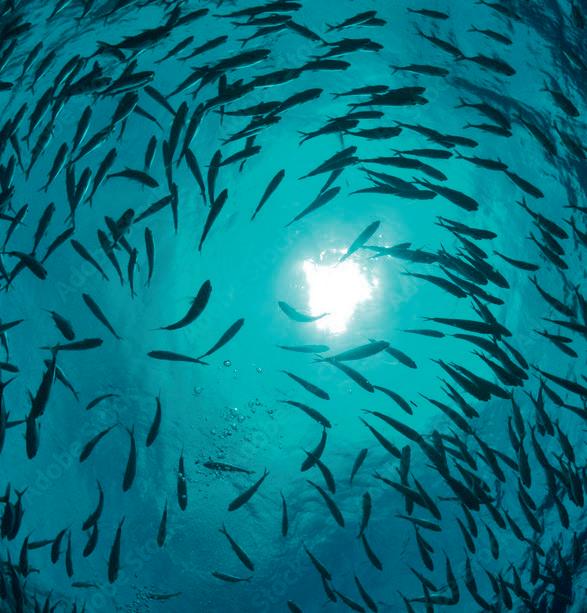
We are recognised as a centre of excellence for nutritional analysis and offer a wide range of analytical parameters.
Please contact us for a full list of analytical tests offered.

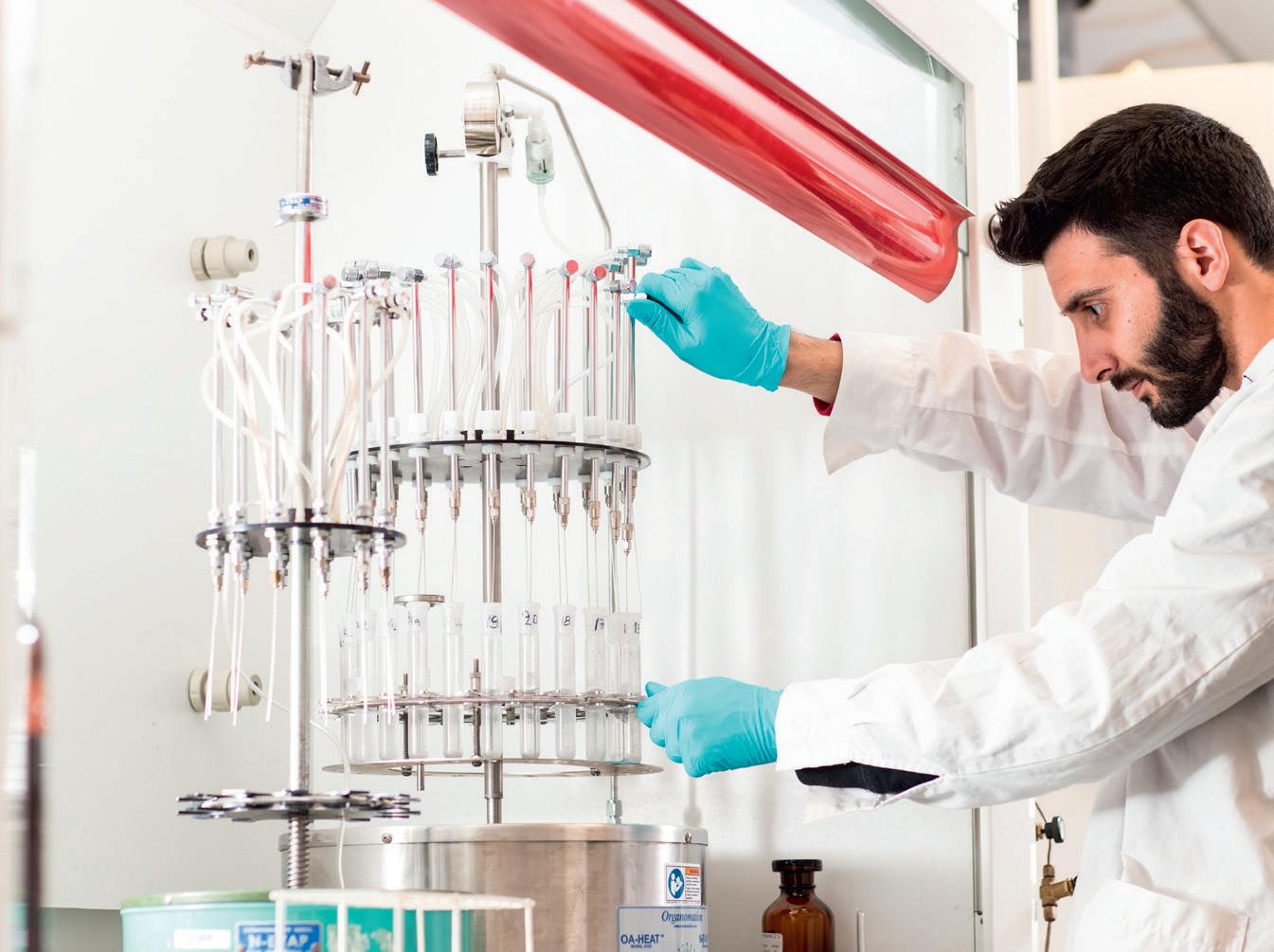
James Dick: j.r.dick@stir.ac.uk
Fiona Strachan: fiona.strachan@stir.ac.uk

www.fishfarmermagazine.com 59 Join Europe’s Top-Rated Erasmus Mundus Joint Aquaculture Master’s Degree SCHOLARSHIPS AVAILABLE Full scholarships (tuition fees, insurance plus €1,400 per month) & partial scholarships (tuition fees & insurance).
Aquaculture,
aces@sams.ac.uk
Visit: www.emm-aces.org Email:
BE THE DIFFERENCE
CASE STUDIES: Cooke Aquaculture

































CHLOE AIKMAN, Site Administrator at Cooke Aquaculture Scotland and Northeast Nutrition









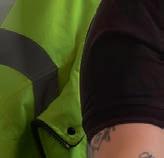
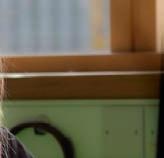
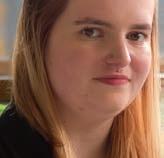




Scotland Feed Mill, Invergordon: “I love my job because I’ve been given so many opportunities to progress within the business and have been able to gain an SVQ [Scottish Vocational Qualification] throughout my time working at Northeast Nutrition as well as being in the process of starting my graduate degree. I’m constantly learning new things and putting myself and my skills to the test.”
JACEK LEPIANKA, Factory Processor at Cooke Aquaculture Scotland



Packing Station, Orkney: “My job entails processing fish on the factory floor and working with other teammates. I have also been trained to cover for the quality controller. I chose this job because of the good, stable contract conditions and the opportunity to work with a great team. The best part about my job is the whole team works together to achieve company goals.”
KEVIN DOHERTY, Dispatch Supervisor at Cooke Aquaculture

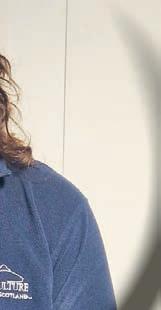
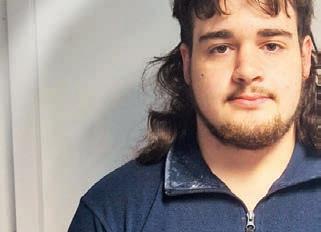



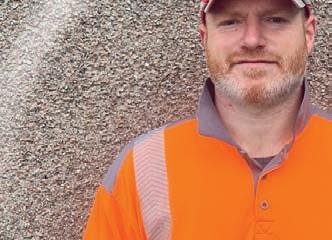

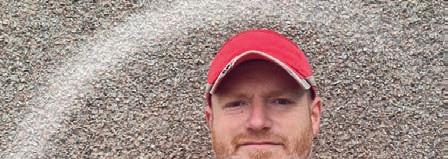











Scotland Packing Station, Orkney: “The wages are good for factory pay. There is a good pension through the company and an end-ofyear bonus, which shows we are appreciated by our employer. Also, being a supervisor, I like leading by example and mucking in to help the rest of the team. I enjoy working in a small team to complete production together each day.”
OMAR MCMAHON SAADI, Factory Processor at Cooke Aquaculture






Scotland Packing Station, Orkney: “I like how physical the job is and how you are part of a team. By being in a team, you look out for each other. The big appeal of this job is progressing in the company and I want to work my way up.”

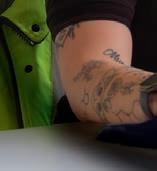
CAREERS IN AQUACULTURE www.fishfarmermagazine.com 60

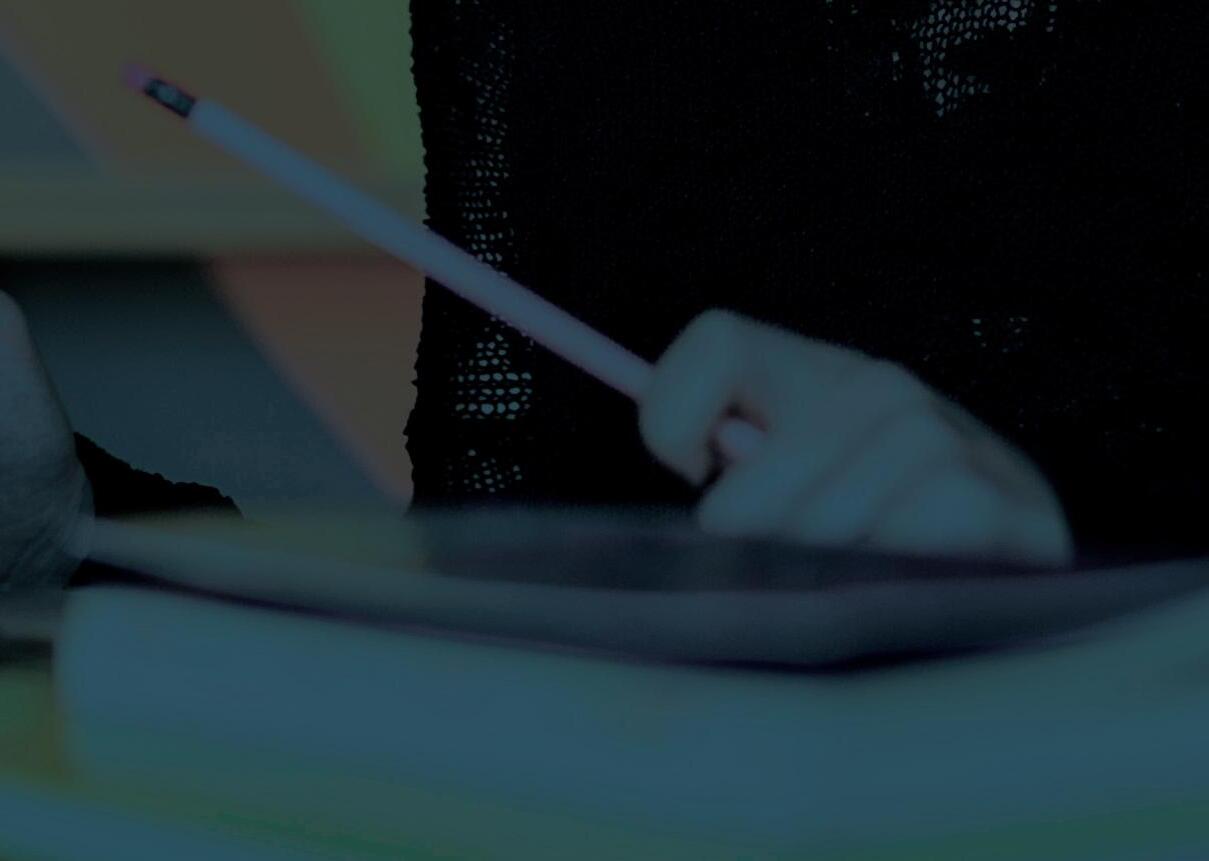



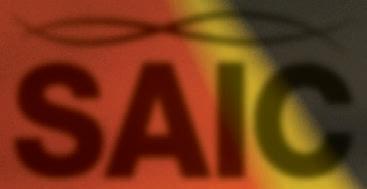




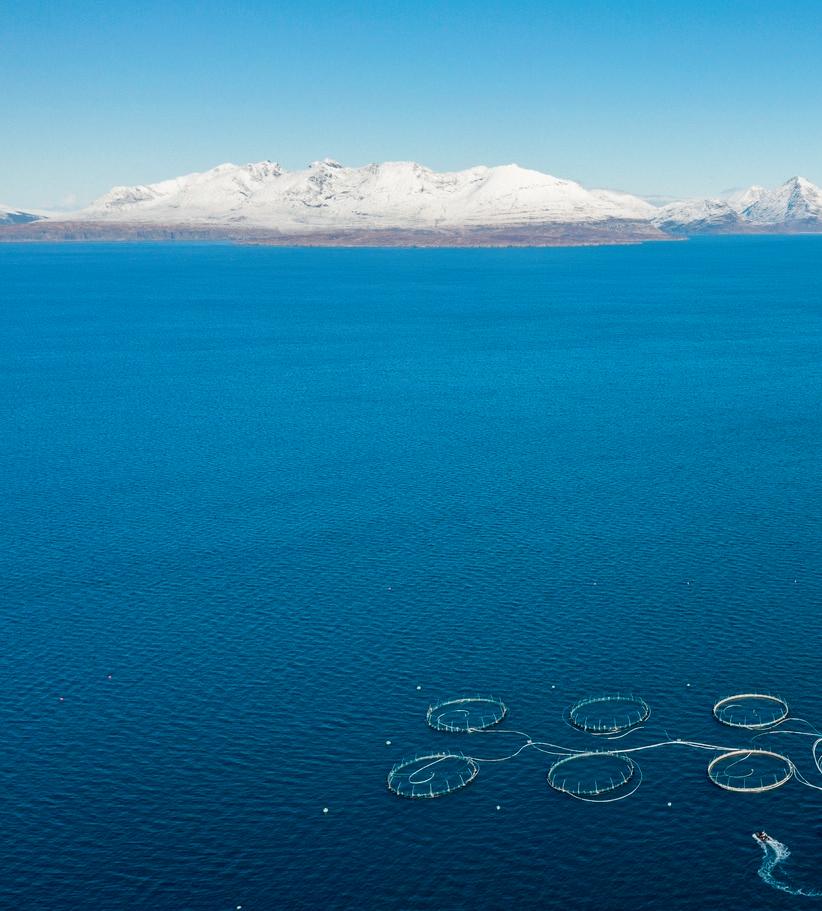


We want to hear from people who are as passionate about the planet and our products as we are.



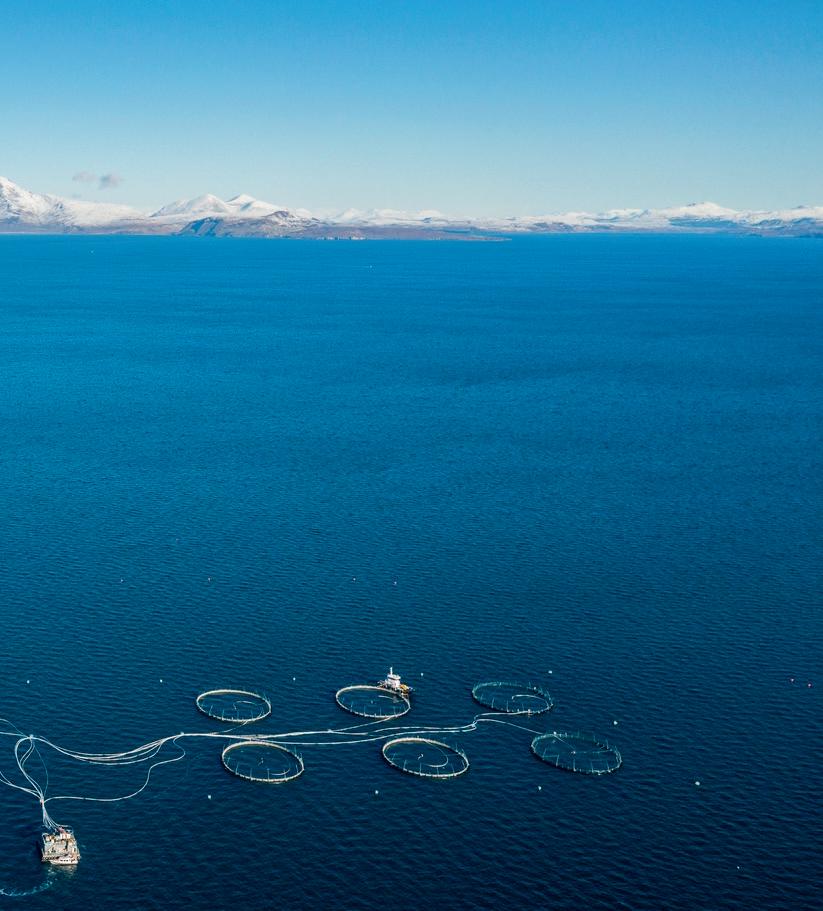
Whether you are just leaving school, or are finishing college or university. Whether you are looking for your first job or have experience behind you.


Whether you want to work in an office, on a farm, in a processing site or on a boat. Whether you want to commit full-time or prefer part-time hours.


When you take your first step with Mowi Scotland, you’re taking a step in your right direction.


to discover
opportunity
Scan
your next career
Boats and barges
Updates from the marine sector
Human crew is just one option for autonomous Lynx catamaran
AI-based Maritime Autonomy & Navigational specialist Robosys Automation is partnering with Lynx Power Catamarans to deliver a multi-role vessel, which can operate as a crewed, lean crewed or fully autonomous boat.

Constructed and designed by South Africa-based Mountain Marine, part of the Lynx Power Catamarans group, the Lynx multi-role vessel has been designed for specialist maritime duties. It is an 11m aluminium twin-hulled multi-role vessel, which operates with a running speed of 30 to 35 knots. The Lynx Power Catamaran is also designed to be easily transportable by air, road and sea. Robosys Automation’s systems offer remote control and advanced and intelligent autonomous navigation.
King Salmon receives new hybrid barge

New Zealand King Salmon has taken delivery of a new, environmentfriendly, hybrid-powered feed barge. The 30m by 10m KaiHamana, built by Z189 Shipyard in Vietnam, was designed by Australia’s Southern Ocean Solutions. Its generators run on low-sulphur diesel and its hybrid power plants mean it can operate more quietly at night. The barge has capacity for 330 tonnes of pelletised feed in six silos and can operate autonomously if required. It uses an advanced feed system provided by AKVA. The barge will be permanently moored in Picton on New Zealand’s South Island, where it will have the capacity to operate for up to 30 days before requiring replenishment of its fuel and feed stores.
Bakkafrost takes delivery of heavy duty workboat for Faroes duty
KJ’s latest heavy duty catamaran workboat was officially handed over to Faroes-based salmon farmer Bakkafrost. The event, held in Fuglafjørður, was attended by representatives from both entities. The workboat, measuring 16m in length and 8m in width, immediately embarked on its maiden voyage towards its new home at Árnafjørður in the Faroe Islands. The catamaran, Selgjógv, is fitted with two Iveco C13 engines, each boasting 500 horsepower, a bow thruster and a 65-tonne metre crane from Palfinger, the catamaran is well-equipped for its duties.

Jón Purkús, Head of Farming North at Bakkafrost, expressed satisfaction with the new acquisition, praising the catamaran workboats from KJ for their stability, ease of navigation, quiet engines and spacious deck.
Treatment wellboat starts service with Scottish Sea Farms in Shetland

A second freshwater treatment vessel has joined the Scottish Sea Farms fleet. Currently in Shetland, the RonjaKvaløy, owned by Norwegian wellboat company Sølvtrans, complements the InterCaledonia, which Scottish Sea Farms acquired on contract earlier this year. Both wellboats have reverse osmosis technology on board, which means they can convert seawater into freshwater to treat for sea lice and improve gill health. At 3,000m3 capacity and 76m in length, RonjaKvaløyis a bigger boat than the 2,200m³ InterCaledonia
Shetland Regional Production Manager Richard Darbyshire said: “We have seen the benefits of freshwater treatments over the past two years and as we increase our production, the Kvaløywill give us extra capacity.”
BOATS AND BARGES www.fishfarmermagazine.com 64
Photo: Southern Ocean Solutions
Photo: www.mountainmarine.co.za
Photo: Robert Turnbull
Workboats and wellboats

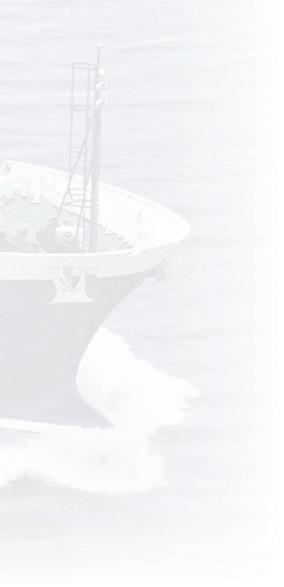

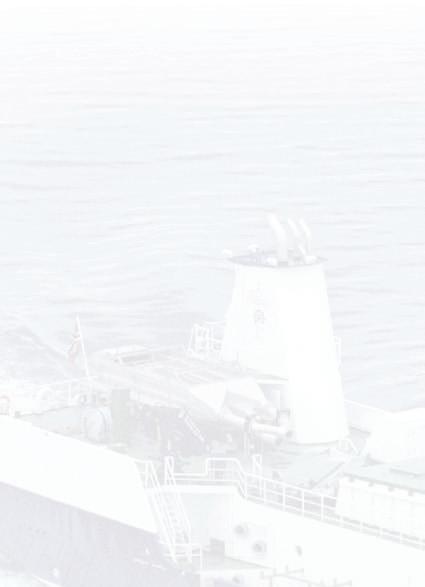
Investment continues apace to ensure today’s aquaculture vessels are state of the art, as Sandy Neil reports






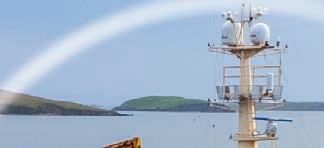

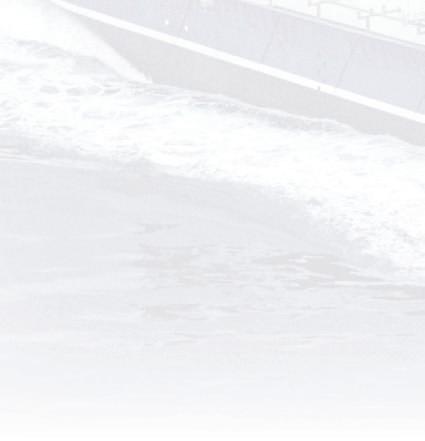
IT has been an eventful summer for boats and barges news in the aquaculture sector, starting with a next-generation treatment vessel going into service for Scottish Sea Farms. The 27-metre Eloise Eslea, built by Dutch yard Nauplius Workboats for Mullbased Inverlussa Marine Services, features a bespoke thermal delousing system, dynamic positioning and hybrid power designed to enhance fish welfare and operational efficiency.

Sister ship to the 26-metre Kallista Helen, the Eloise Eslea includes several enhancements, said Keith Fraser, Scottish Sea Farms Shetland Engineering Manager, who oversaw the design of the onboard delousing system.

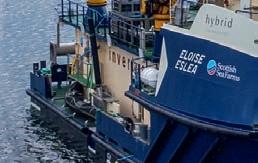

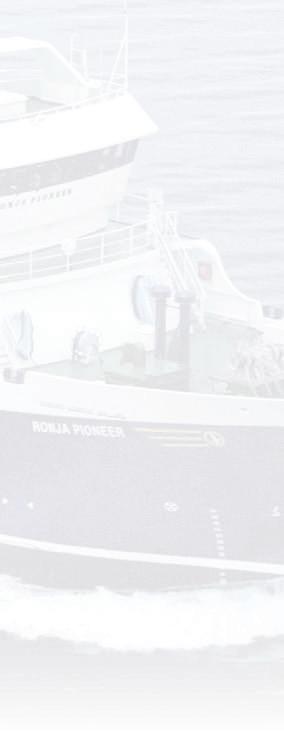

“Without doubt, Eloise Eslea has benefited from the expertise of those behind the Kallista Helen,” says Fraser. “We wanted to build on its key advances – namely, designing the boat around fish welfare, housing the treatment system below deck to protect crew and equipment, and freeing up space on the top deck to reduce reliance on support vessels – and taking things a step further.”
Last month, we reported on salmon producer Bakkafrost Scotland taking delivery of a new £2.6m, 24-metre workboat from Macduff Shipyards, the first of two bespoke vessels being built by the yard for Bakkafrost.
The vessel was named Turas a‘ Bhradain, meaning “the salmon’s journey” in Gaelic, and will be operating alongside Bakkafrost Scotland’s wellboats the Ronja Star and Ronja Fisk at its sites on the West Coast
Above: The Eloise Eslea
www.fishfarmermagazine.com 65
BOATS AND BARGES
Photo: Gordon Siegel Photography
Above: Kishorn HIE delega�on ith PL colleagues during a recent isit to the port
Below: Turas a’ Bhradain, an Laister Opposite from top: TM Prospect on Malako Ler ick slip ay the Ronja Star the Turas a’ Bhradain

and Hebrides, playing a key role in fish health by preparing the pens for the wellboat to carry out freshwater treatments.
Ian Laister, Managing Director at Bakkafrost Scotland, said: “By commissioning the Turas a’ Bhradain and the second workboat from Macduff Shipyards, we have been in a position to support approximately 250 jobs at the yard, which will hopefully help the business to

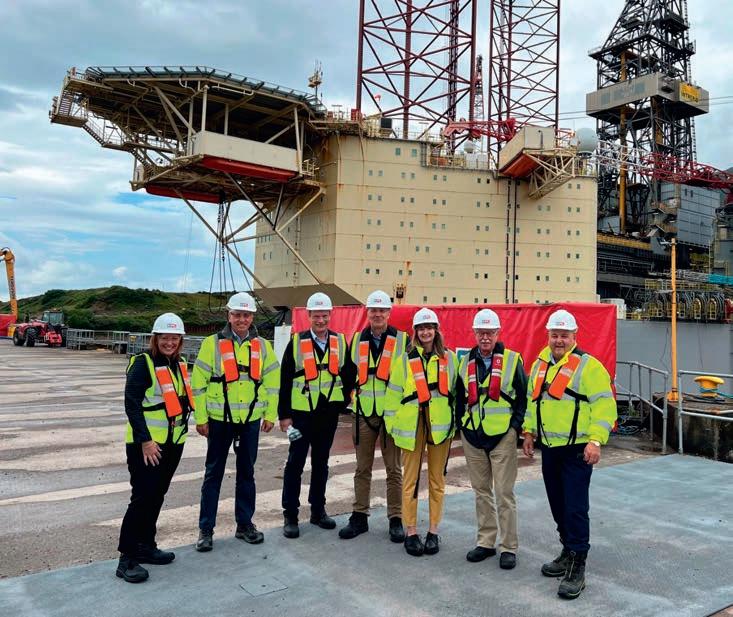
DESIGNING TO DELIVER



continue investing in young people, where they are typically hiring 10 to 12 apprentices annually.”
Bakkafrost Scotland welcomed the 87-metre Ronja Star, the largest fish farming wellboat in Scottish aquaculture, to Stornoway last November. The vessel, commissioned from the world’s leading wellboat operator Sølvtrans in Norway, runs on a hybrid dieselelectric system and boasts world-leading technology with an FLS mechanical sea lice removal system and freshwater treatment. It uses a reverse osmosis system for desalination, producing freshwater to improve gill health and remove sea lice.
The vessel has state-of-the-art life support systems, which includes high-capacity oxygen production, a carbon dioxide removal system and a water cooling system to ensure the fish are kept in optimal condition during treatment. In addition, it has an automatic cleaning system, alongside sensors and cameras to monitor fish and water quality.
Harbour enhancements
A £94,259 development project by one of the largest engineering firms in Shetland is expected to create two new jobs and increase the company’s turnover by £195,000. Malakoff Ltd secured £32,129 investment from Highlands and Islands Enterprise (HIE) for a project to enhance the capability of its covered slipway in North Ness, Lerwick.
The slipway enables the business to provide critical services to the local fishing fleet, the inter-island ferry fleet as well as aquaculture and energy companies. Malakoff Ltd is a major employer in Shetland, currently employing 94 staff. As well as creating two new high-quality jobs, the project will enable three skilled jobs to be retained at the firm.
Andrew Gear, Head of Business Growth on HIE’s Shetland area team, said: “This project will enable more locally based vessels to be serviced in Shetland, reducing the volume of vessels steaming to mainland Scotland for routine repairs and services, and lowering carbon emissions. As vessels increase in size and weight, it is becoming ever more critical to have this capability in the local supply chain.”
Meanwhile, marine and land investigations are underway to help develop proposals for a major upgrade of Kishorn Port in Wester Ross, in the far northwest of Scotland.
Owner-operator Kishorn Port Limited (KPL) has engaged specialist contractors for phase one of the £2.4m project, after securing a £500,000 investment from HIE.
Alastair Nicolson, HIE Area Manager for Lochaber, Skye and Wester Ross, says: “The port has the potential to be transformational as it continues to expand and create more

BOATS AND BARGES
www.fishfarmermagazine.com 66
Photo
e in Ferguson
year-round quality jobs. This in turn will help attract and retain a skilled working population and sustain thriving communities.
“That’s why this design project is so important. It will help pave the way for a major upgrade of Kishorn Port, enabling it to benefit from upcoming opportunities through ScotWind, oil and gas decommissioning, and the growth in aquaculture.”
Intership and Frøy
Meanwhile, the Ole-Peter Brandal, chief executive of wellboat operator Intership, was pleased with progress despite an 8.6% dip in operating profit last year to NOK 132.4m (2021: NOK 144.8m).
“We had one of the vessels in a difficult spot market in the first half of the year, as well as one vessel undergoing refit and transfer to Chile for the entire last half of the year. These two affected the result negatively,” explains Brandal.

On the positive side, the company signed several new contracts that take effect from 2024 and 2025. The Inter Scotia, going into service for Mowi Scotland, will be delivered from the shipyard in September. It will have a capacity of 2,500m³ and will be equipped with a large battery pack and solutions for energy recovery, and be prepared for the installation of a large-capacity RO plant.



This summer, SalMar sold the successful wellboat business Frøy to Goldman Sachs for £482m. “Wellboats and service vessels are vital to enabling best-in-class farming practices and Frøy is at the forefront of driving sustainability,” says Tavis Cannell, Global CoHead of Infrastructure within Goldman Sachs Asset Management, announcing the deal.
“This is a milestone in our long and proud history,” adds Frøy CEO Tonje Foss. “The acquisition confirms our solid business model and provides a solid foundation for further development of the company.”
All-electric first for Flugga


The new Fluggaboat offers a viable electric alternative

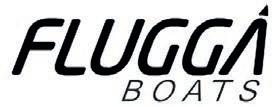
Unst Inshore Services Ltd has built the first 100% electric workboat in the UK. The 7.5m Fluggaboat uses an Evoy 120hp continuous rated, electric outboard powered by a 63 kwh Lithium-Ion battery housed in the console. Charging uses an onboard charger, so the vessel can be fully charged overnight or topped up during the day, depending on the rate of use. The top speed is 30 knots but the most economical speed is 24 knots. The touch screen dash panel gives good indication of battery state of charge and use, speed and available range are constantly updated, motor RPM and kw are also displayed. Different screens show rate of charge etc. Below 20% the battery management system will go into a “get home” reduced power mode to enhance the range for the return trip to a charge point. Range anxiety is taken care of by the amount of information provided on the touch screen.


Unst says: “This system with the liquid cooled battery and charger looked the best option for what we wanted. The plan was to build and test so we could measure the range at different speeds for ourselves. We find the boat has a best speed/range at around 24 knots which was a nice surprise. Our intention was to produce


a perfectly viable boat, not just a token effort of an electric boat.
“We like to code the boats before delivery, this way they are ready to operate on delivery and the boat is an approved unit.”
” www.fishfarmermagazine.com 67
Eloise Eslea has benefited from the expertise of those behind the Kallista Helen
Photo: ADEC, Milas, Turkey
Above: Good handling Left: Cruise speed
What’s NEW
Monthly update on industry innovations and solutions from around the world



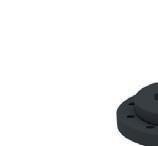
Portuguese consumers ‘willing to pay more’ for Omega-3 enriched seafood
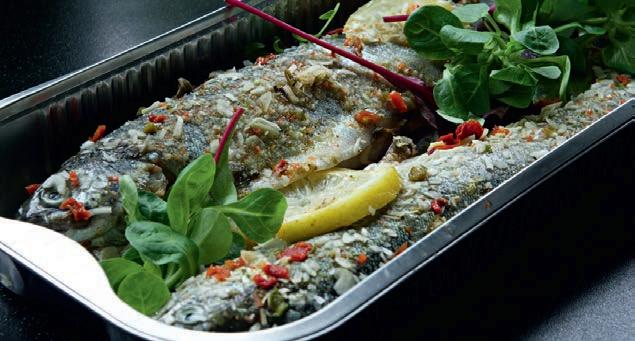

Around seven out of 10 Portuguese consumers would pay more for fish enriched with omega-3, according to a study carried out by B2E – Blue Bioeconomy CoLAB (B2E CoLAB). The survey found that 69.3% of people admitted to being willing to pay more for fish enriched with this nutrient. The study was part of the OmegaPeixe project, which aims to encourage the production of turbot and sea bass with levels of omega-3 recommended by the World Health Organization.
“There is, in fact, a greater awareness among consumers of the relationship between nutrition and health, and this study we carried out proves it,” said Maria Coelho, B2E CoLAB’s Executive Coordinator.
Wastewater can be reclaimed with BIO-UV

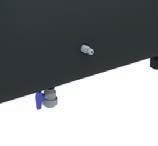
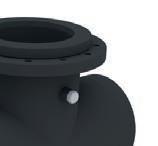
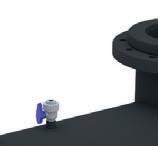
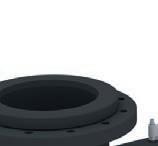
From hatcheries to fish tanks in RAS, water quality is essential for good fish development. In seafood industrial processes too, the water used in clean in place (or CIP) must be free of bacteria and viruses. For economic and ecological reasons, wastewater can be recycled after being disinfected using chemical-free systems to minimise the proliferation of pathogens. As the effluent water is loaded with organic and inorganic pollutants, it must be disinfected prior to returning to its natural environment.
BIO-UV Group ozone and UV water treatment systems are specially designed to improve water quality. They ensure that water is free of all microorganisms, both at the inlet and outlet. www.bio-uv.com/en
Greek fish farmer deploys humane stunners
Aquaculture technology specialist Ace Aquatec has successfully installed two new humane stunners for seabass, sea bream and pagrus with Philosofish, one of a handful of Greek fish farming companies to adopt this cutting-edge method of humane harvesting across the Mediterranean region. Philosofish has committed to installing the high welfare technology across all new boats going forward.
Nikos Liberis, Philosofish CEO, said: “We opted for Ace Aquatec’s humane stunning technology as it aligns with our inherent responsibility towards our fish and our commitment to setting industry benchmarks for animal welfare. Making this investment underlines our vision to inspire change and push the boundaries in the Greek aquaculture industry.”
Partially funded scholarships now available for European Aquaculture Masters

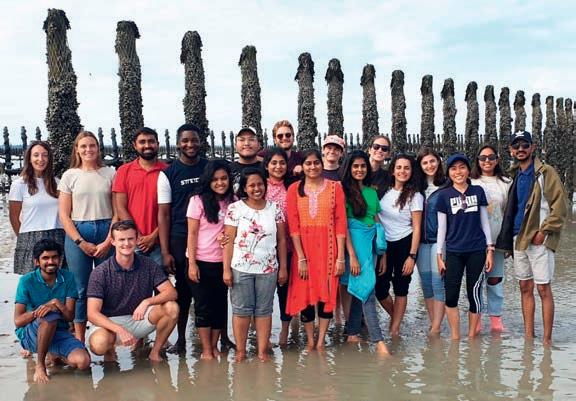
ACES-STAR is extending the scholarship offering for Europe’s top-rated Erasmus Mundus Joint Aquaculture Master’s programme. The two-year Aquaculture, Environment and Society STAR course allows students to study in three centres of excellence in European aquaculture research in Scotland, France and Greece.
As well as fully funded scholarships, the programme now offers places with tuition fees waived and full insurance cover, thanks to Erasmus Mundus funding. Fully funded scholarships offer an additional 1,400 per month towards travel and living expenses. The course prepares students for a successful career in aquaculture, teaching practical and theoretical skills through industry-led research programmes, internships and fieldwork.
To find out more, visit www.emm-aces.org or email aces@sams.ac.uk
PRODUCTS AND SERVICES www.fishfarmermagazine.com 68
Photo: Laurent Barillé
What’s NEW Monthly update on industry innovation and solutions from around the world
UCO adds six to its Falcon fleet
Underwater Contracting (UCO) has ordered a further six Falcons, boosting its fleet to 33 vehicles. This follows the award of further major contracts in the aquaculture, renewable and oil and gas sectors to UCO. This will see the Falcon fleet working continuously over multi-year contracts and providing a range of services in Europe, North America and Australia.
UCO owns the world’s largest fleet of this model. Specialists in remotely operated vehicle operations, UCO has successfully deployed Seaeye Falcon underwater vehicles since 2018 across three continents covering various sectors of industry. The Falcon is designed and manufactured at Saab UK’s Fareham site.

Funding for revolutionary shrimp vaccine

An Israeli company that aims to revolutionise vaccination for shrimp farming has raised US $8.25m (£6.6m) from a consortium of venture capitalists led by S2G Ventures. ViAqua Therapeutics is developing an orally delivered vaccine platform for the targeted administration of RNA-based solutions to improve disease resistance in aquaculture. RNA vaccines, which use manufactured molecule, are faster and cheaper to produce than traditional vaccines, which typically use part of a bacterium or virus.
Shai Ufaz, CEO of ViAqua, said: “Oral delivery is the holy grail of aquaculture health development due to both the impossibility of vaccinating individual shrimp and its ability to substantially bring down the operational costs of disease management while improving outcomes.”
Innovasea’s biomass system now counts salmon too
The AI-driven biomass estimation solution from Innovasea, BiomassPro, is now available for use with Atlantic salmon. Recent field trials in British Columbia, the company says, have shown its algorithm for Atlantic salmon to be highly effective at estimating the size and weight of that species in real time.

“BiomassPro continues to perform well in the field, which is really exciting,” said Rafael Cordero, Vice President of Engineering at Innovasea. “Customers have been asking for some time when it would be available for Atlantic salmon, but we wanted to take time to fine tune the algorithm and ensure we were bringing a quality product to the marketplace.”
BiomassPro is also available for cobia, king salmon, red snapper, totoaba and yellowtail.
FIAP’s Alu series is light but strong
FIAP GmbH from Bavaria, Germany, has for many years offered a range of light but sturdy aluminium landing nets for fish farmers to facilitate their work. The FIAP profinet Alu was developed in-house by the company many years ago.
Among the features contributing to its robust and user-friendly design is the aluminium bow system of the net, which is reinforced for strength and resilience. The net is pulled into a guide rail in the bracket and flexibly secured with plastic beads. The series comes in several different sizes to meet every need. Options are available in terms of frame width and mesh size, and spare parts such as extra nets, beads, clamps or handles are obtainable from the company.
For more information, go online to .fiap.co , call +49 96 2892130 or email er auf fiap.de

PRODUCTS AND SERVICES
www.fishfarmermagazine.com 69
Anti-Predator
Predators may be smart BUT WE’RE SMARTER
Predators may be smart
Predators
Predators may be smart
Predators may be smart

Our new generation, award-winning acoustic deterrents Comply with both Marine Scotland EPS and MMPA requirements
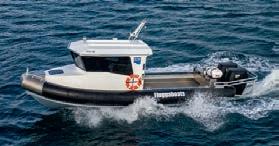
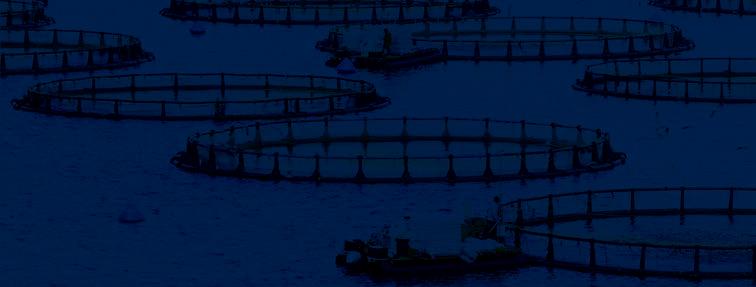
Our new generation, award-winning acoustic deterrents Comply with both Marine Scotland EPS and U.S. MMPA requirements













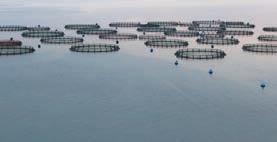




• Create conditioned avoidance so we can put far less acoustic output into the water than older barrier systems Have low duty cycles, low average volume and low frequency to help deter seals, while better safeguarding cetaceans









• Create conditioned avoidance so we can put far less acoustic output into the water than older barrier systems






Have low duty cycles, low average volume and low frequency to help deter seals, while better safeguarding cetaceans

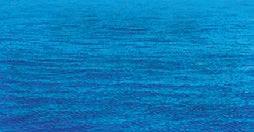


Your first choice for animal welfare.
Your first choice for animal welfare.
Your first choice for animal welfare. Get in touch to set up a trial: acedeterrents@aceaquatec.com

Get in touch to set up a trial: acedeterrents@aceaquatec.com
Get in touch to set up a trial: acedeterrents@aceaquatec.com











Boat Builders

Cranes
Data Analytics








+1 407 995 6490 AquaticED.com DESIGN EQUIPMENT SOLUTIONS We are your source for professional aquatic and aquaculture products and services. Contact us today to learn more! AQUA SOURCE DIRECTORY www.fishfarmermagazine.com 70 GET YOUR BUSINESS NOTICED FOR A WHOLE YEAR, OR SIX MONTHS! Air Compressors Analytical Services Aquaculture Equipment Boat Builders Animal Nutrition Robust fish Strengthening fish defences If not us, who? If not now, when? WE MAKE IT POSSIBLE • OVN Optimum Vitamin Nutrition® • Rovimax® (nucleotides) • Biotronic® (enhanced organic acids) • Digestarom® (essential oils) • Levabon® (autolysed yeast) Follow us on: www.dsm.com/anh Nutritional Analytical Service A commercial analytical service providing advice and analysis to the aquaculture and food and drink sectors across the world. Please contact us for a full list of analytical tests offered. James Dick: j.r.dick@stir.ac.uk Fiona Strachan: fiona.strachan@stir.ac.uk BE THE DIFFERENCE SAFE, GENTLE AND EFFICIENT HANDLING OF LIVE FISH Boat Builders Tel: (+44)1957 711 881 Email:info@fluggaboats.co.uk www.fluggaboats.co.uk HDPE collar, aluminium hull. ALL ELECTRIC, diesel or petrol power ALL THE ADVANTAGES OF A RIB, JUST HARDER
VERSATILE OPEN DECKED CRAFT-A REAL ALL ROUNDER Matrix Pontoons & Boats by Zego Marine (UK) Ltd T: 0044(0) 7976 700 044 / 02920 703699 E: info@matrixpontoons.co.uk www.matrixpontoons.co.uk ALL NEW MATRIX PRO-CAT 6000 * FISH-SEAWEED FARM * IT’S UP TO YOUR IMAGINATION With this Compact Multifunctional Craft BY MATRIX PONTOONS Engines Cummins services are available throughout Scotland. Contact us for: • Maintenance & repairs • Engine overhauls • Replacement engines and generators • Parts Call 01236 50 58 00 FishFarmerAdMarch23_40x60mm.indd 1 02/03/2023 16:09
POWER YOUR AQUACULTURE BUSINESS WITH Get the most comprehensive monitoring & advanced analytics solution available. SIGHTLINE.COM T: +39 0375 254819 info@hsmarine.net www.hsmarine.net
Our new generation, award-winning acoustic deterrents • Comply with both Marine Scotland EPS and U.S. MMPA requirements Create conditioned avoidance so we can put far less acoustic output into the water than older barrier systems Have low duty cycles, low average volume and low frequency to help deter seals, while better safeguarding cetaceans Your first choice for animal welfare. Get in touch to set up a trial: acedeterrents@aceaquatec.com
BUT WE’RE SMARTER Our new generation, award-winning acoustic deterrents Comply with both Marine Scotland EPS and U.S. MMPA requirements Create conditioned avoidance so we can put far less acoustic output into the water than older barrier systems Have low duty cycles, low average volume and low frequency to help deter seals, while better safeguarding cetaceans Your first choice for animal welfare. Get in touch to set up a trial: acedeterrents@aceaquatec.com
Predators may be smart
BUT WE’RE SMARTER Our new generation, award-winning acoustic deterrents Comply with
Marine Scotland EPS
U.S. MMPA requirements Create conditioned avoidance so we can put far less acoustic into the water than older barrier systems low duty cycles, low average volume and low frequency to help deter seals, better safeguarding cetaceans Your first choice for animal welfare. Get in touch to set up a trial: acedeterrents@aceaquatec.com
both
and
BUT WE’RE SMARTER Our new generation, award-winning acoustic deterrents Comply with both Marine Scotland EPS and U.S. MMPA requirements Create conditioned avoidance so we can put far less acoustic output into the water than older barrier systems Have low duty cycles, low average volume and low frequency to help deter seals, while better safeguarding cetaceans Your first choice for animal welfare. Get in touch to set up a trial: acedeterrents@aceaquatec.com Predators may be smart BUT WE’RE SMARTER Our new generation, award-winning acoustic deterrents Comply with both Marine Scotland EPS and U.S. MMPA requirements • Create conditioned avoidance so we can put far less acoustic output into the water than older barrier systems Have low duty cycles,
low average volume and low frequency to help deter seals, while better safeguarding cetaceans
BUT WE’RE SMARTER
BUT WE’RE SMARTER Our new generation, award-winning acoustic deterrents Comply with both Marine Scotland EPS and U.S. MMPA requirements • Create conditioned avoidance so we can put far less acoustic output into the water than older barrier systems Have low duty cycles, low average volume and low frequency to help deter seals, while better safeguarding cetaceans Your first choice for animal welfare. Get in touch to set up a trial: acedeterrents@aceaquatec.com
may be smart BUT WE’RE SMARTER info@aceaquatec.com www.aceaquatec.com Our new generation, award-winning acoustic deterrents Comply with both Marine Scotland EPS and U.S. MMPA requirements Create conditioned avoidance so we can put far less acoustic output into the water than older barrier systems Have low duty cycles, low average volume and low frequency to help deter seals, while better safeguarding cetaceans Your first choice for animal welfare. Get in touch to set up a trial: acedeterrents@aceaquatec.com
may be smart BUT WE’RE SMARTER
may be smart
Predators
Predators
Anti-Fouling ANTI-FOULING SPECIALIST Suppliers of Coatings and Anti-Fouling Paints Tel: +47 66 80 82 15 Fax: +47 66 80 25 21 post@netkem.no www.netkem.no
tomorrow www.storvik.no
Fish Health


Clynav will turn the way you see PD control upside down. Clynav is like no other PD vaccine it uses Elanco’s unique DNA plasmid technology and has become the leading choice for PD protection in Norway. Clynav is delivered intra-muscularly without the need for an adjuvant.
www.elanco.co.uk CLYNAV Upside Down Ad 297x210 2021.indd
Clynav brings fresh hope in the fight against pancreatic disease Elanco UK AH Limited, First Floor, Form 2, Bartley Way, Bartley Wood Business Park, Hook RG27 9XA, United Kingdom. For further information consult the product SPC. Clynav, Elanco and the diagonal bar logo are trademarks of Use medicines responsibly www.noah.co.uk/responsible. Advice should be sought from the Medicine Prescriber. PM-UK-21-0435 04.2021 RLH
Turning conventional approaches... upside down Clynav brings fresh hope in the fight against pancreatic disease. Take back control of PD with Clynav. It will change your point of view, for good. www.elanco.co.uk
Clynav will turn the way you see PD control upside down. Clynav is like no other PD vaccine it uses Elanco’s unique DNA plasmid technology and has become the leading choice for PD protection in Norway. Clynav is delivered intra-muscularly without the need for an adjuvant.
Turning conventional approaches... upside down Take control
impex@impexagency.dkimpex@impexagency.dk impex@impexagency.dk EQUIPMENT SUPPLIEER EQUIPMENT SUPPLIEER RECIRCULATION




Clynav brings fresh hope in the fight against pancreatic disease Clynav contains pUK-SPDV-poly2#1 DNA plasmid coding for salmon pancreas disease virus proteins: 5.1 – 9.4 µg. Legal category in UK. For further information call Elanco Animal Health on +44(0)1256 353131 or write to: Elanco UK AH Limited, First Floor, Form 2, Bartley Way, Bartley Wood Business Park, Hook RG27 9XA, United Kingdom. For further information consult the product SPC. Clynav, Elanco and the diagonal bar logo are trademarks of Elanco or its affiliates. © 2021 Elanco or its affiliates. Use medicines responsibly www.noah.co.uk/responsible. Advice should be sought from the Medicine Prescriber. PM-UK-21-0435 04.2021 RLH


So, with Clynav, you can rest assured of excellent PD protection without the risks associated with conventional vaccines. Take back control of PD with Clynav. It will change your point of view, for good.
So, with Clynav, you can rest assured of excellent PD protection without the risks associated with conventional vaccines. Take back control of PD with Clynav. It will change your point of view, for good.
www.elanco.co.uk CLYNAV Upside Down Ad 297x210 2021.indd 1 11/05/2021 10:07
rkplast@rkplast.dk Tel +45 9758 4055 renovation and antifoulant retreatment. HATCHERIES NETS




Hatcheries Turning conventional approaches... upside down Take control



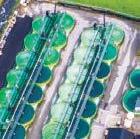


Storvik LTD Lochgilphead, Scotland Tel: +44 (0) 1546603989 info@storvik.co.uk MARINE EQUIPMENT NauticastTM & VideoRay Available for Sale or Hire from www.atlantasmarine.com T: +44 (0)1935 426 000

Delivering state of the art, quality products... industry... on budget, on time 06/02/2014 16:35:16

























































Recirculation Design • Supply • Build • Support Engineered Prefabricated Modular .com Advanced RAS

Breeding for the future with genomic precision • All-year delivery • Biosecurity • At the forefront of genetic R&D bmkgenetics.com www.fishfarmermagazine.com 71 Call Janice on 0131 551 7925 or email: jjohnston@fishfarmermagazine.com 12 MAGAZINES FOR £895 6 MAGAZINES FOR £595 Genetic Services Nets & Cages PUMPS FOR AQUACULTURE Specialists in long-lasting, corrosion-resistant pumps, with high uptime and low energy consumption. www.lykkegaard-as.com Propeller Pumps RAS Equipment blutan Se ng new standards for RAS tanks balmoral‐blutanq.com Jonathan.smith@balmoral.co.uk Pumps & Systems Pumps & Systems PROVEN TECHNOLOGY PUMPS & PUMPING SOLUTIONS Disinfecting water for aquaculture Pumps & Systems British Made Cage Nets In Nylon & Dyneema Predator Exclusion Nets Anti Foul Coatings Ropes - Large Stock All Sizes Floats, Buoys, Cushion Buoys Chain & Chain Weights Tarpaulins Tel: 01253 874891 e-mail: john@borisnet.co.uk web: www.borisnet.co.uk QUALITY NETS FOR FISH FARMING Nets & Cages NET CLEANING ROBOTICS DESIGN & MANUFACTURE Reliability Efficiency Autonomy COMMITMENT INNOVATION QUALITY email: info@bossaqua.com GLOBAL SALES & SUPPORT www.bossaqua.com Net Cleaning www.fishfarmer-magazine.com of: Feeders Lobster Baskets sales@aquacultureequipment.co.uk www.AquacultureEquipment.co.uk
www.rkbioelements.dk Email: rkplast@rkplast.dk Tel +45 9758 4055 www.rkbioelements.dk Email: rkplast@rkplast.dk Tel +45 9758 4055 www.rkbioelements.dk Email: rkplast@rkplast.dk Tel +45 9758 4055 www.rkbioelements.dk Email: rkplast@rkplast.dk Tel +45 9758 4055 www.rkbioelements.dk Email:
Your partner in Aquaculture Technology AKVA group is a unique supplier with the capability of offering both Sea and Land Based Aquaculture operations with complete technical solutions and local support. www.akvagroup.com www.egersundnet.no








































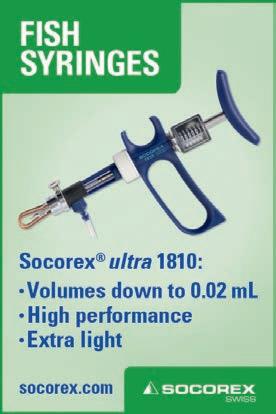













































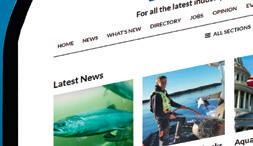




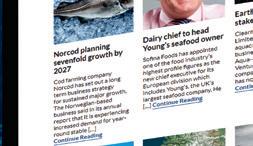

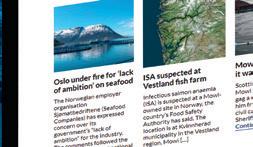



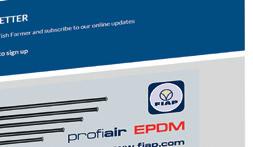





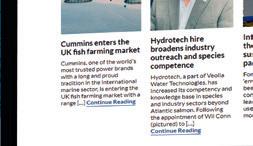
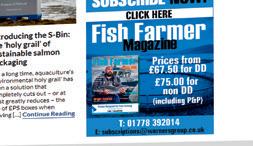


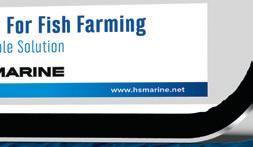

































AQUA SOURCE DIRECTORY www.fishfarmermagazine.com 72 Fish processing equipment Industrial washing drying +32 9 376 95 95 www.cretel.com info@cretel.com Processing Equipment Processing Equipment Everyvalve Ltd Valves & Fittings 1/2”-20” Metal & Plastic GATE BALL BUTTERFLY AUTOMATION United Kingdom - EN6 1TL (44)-01707-642018 Fax 646340 sales@everyvalve.com Valves Vaccination A wide range of applications, including lobster, oyster, mussel and prawn cultivation Artificial seawater free from bacteria, algae and toxic detritus found in seawater 15kg and 25kg bags Salt Transport & Logistics Sensors PROCESSING SOURCE DIRECTORY Sensors FOR ALL THE LATEST DAILY NEWS AND INDUSTRY INFORMATION Sign up to our newsletter to get the latest news directly to your inbox! VISIT THE Fish Farmer WEBSITE www.fishfarmermagazine.com
Industry DIARY
The latest aquaculture events, conferences and courses
SEPTEMBER 23
AQUACULTURE EUROPE 2023
www.aquaeas.org
The European Aquaculture Society’s annual conference focuses on “Balanced Diversity in Aquaculture Development”.
Vienna, Austria

September 18-21, 2023
MAY 24
AQUACULTURE UK 2024
AUGUST 24
AQUA 2024
www.aquaeas.org - www.was.org
Copenhagen, Denmark

August 26-30, 2024
The theme of AQUA 2024 is BLUE FOOD, GREEN SOLUTIONS.
NOVEMBER 23
AFRAQ 2023
www.was.org/meeting/code/AFRAQ23
Lusaka, Zambia
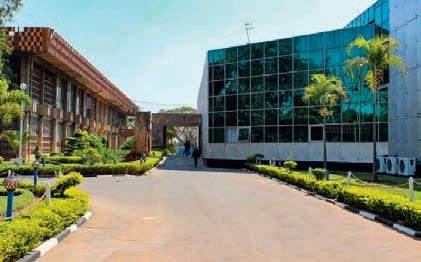
November 13-16, 2023
www.aquacultureuk.com
Aviemore will once again be the venue for this biennial trade fair and conference. It is undoubtedly the most important aquaculture exhibition held in the British Isles. The show has a tremendous following and with increased investment for 2024 it promises to reach even further across the broader aquaculture markets in both the UK and Europe.
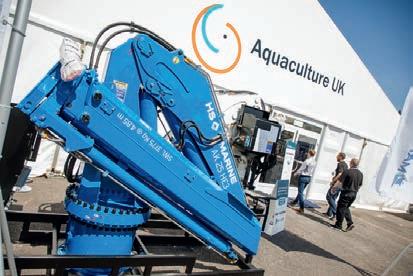
Aviemore, United Kingdom
May 14-15, 2024
JUNE 24
SEAWORK
www.seawork.com
Europe’s largest on-water commercial marine and workboat exhibition.
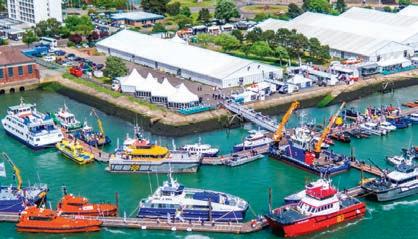
Southampton, United Kingdom
June 11-13, 2024
FEBRUARY 24
AQUACULTURE AMERICA
www.was.org
San Antonio, Texas, USA

February 18-21, 2024
ASIAN PACIFIC AQUACULTURE 2024
Surabaya, Indonesia
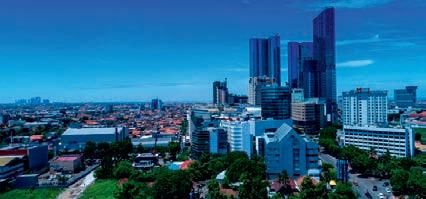
June 11-14, 2024
Aquaculture – Driving the Blue Economy is the theme of the conference at the Grand City next year.
SEPTEMBER 24
LATIN AMERICAN & CARIBBEAN
AQUACULTURE 2024
www.was.org
Medellin, Colombia
September 24-27, 2024
MARCH 25
AQUACULTURE 2025
New Orleans, Louisiana USA

March 6-10, 2025
SEPTEMBER 25
AQUACULTURE EUROPE 2025
Valencia, Spain
September 22-25 2025
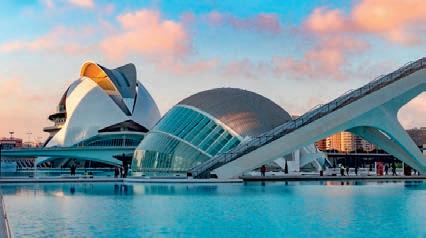
INDUSTRY DIARY www.fishfarmermagazine.com 73
Is there such a thing as a common purpose?
By Nick Joy
FOR many years, it has seemed obvious to me that there is a great deal of coordination in the “anti” groups that exist all over the world to campaign against almost anything. Most notably, it applies to the vegan activist campaigns. In the days when I was working closely with the RSPCA, it was apparent that there were vegans at the highest levels. They were very open and devoted to their cause, which at least was understandable. When people don’t declare their allegiances and when science is conducted to prove a theory, not to evaluate it, activists have a much easier time promulgating unsound “findings”. It was thinking about this led me to a group called Common Purpose. It was created by an English woman who came up with the idea that two undeclared activists in positions of power could do far more than all of the campaigns and volunteers put together.
Common Purpose is a global not-for-profit organisation that runs leadership programmes and advocates diversity and “new thinking”. It holds seminars and you don’t have to declare that you are affiliated or involved with them, so it seems. Common Purpose also operates Chatham House rules, which means no comments at their meetings can be attributed to individuals. In other words, we don’t talk outside the meeting. Even the BBC questions whether they are a secret society and arguably they are just that.
Before you think that I am becoming paranoid in my old age, I would argue that when you notice that different people peddle the same untruths and refuse to discuss them, it does make you wonder.
Just the facts
Let’s look at some of the facts around our industry. We have been accused of polluting the seabed, even though endless studies have shown no such thing. Genetic introgression into the wild salmon population is also debatable and the sea lice agenda is still active despite limited evidence to show an impact on wild salmon survival.

Some of the regulatory bodies that supposedly manage our industry could do well to look at their practices, such as taking people from lobby bodies on secondment or employing people with clear bias in positions of authority. Otherwise, the regulators risk losing the respect and trust of the industry. When that happens, the relationship between the two becomes untenable. Regulation depends on the goodwill of those being regulated. In our industry, this is especially so, as the Scottish Environment Protection Agency (SEPA) learned to their cost in the early days. I once had an inspector come to measure the size of our pens and he told me that this was the only thing he could measure that wasn’t on trust.
There is absolutely no doubt that all branches of the civil service are involved – this has been documented – because it is clear that there is a much more anti-business agenda at work generally. It is evident in the planning system, the regulatory frameworks and government strategy. The difficulty of countering it and why it is so clever? The public perception of activists is that they are people trying to do good. The more extreme fringes of the trans lobby groups have done some damage to that, but in general people
think that unpaid individuals pushing for their cause must be good people. The opposite, which has become an accepted tenet, is that people doing things for profit must be bad.
Common Purpose and most of the significant lobby groups have learnt to start at as young an age as possible. They take an extremely long view. The only way we can counter it and offer our country a decent future is to begin to get involved at as early a stage of education as possible, not trying to inculcate our views but to show what we do and demystify our existence. However much they disapprove of salmon farming and aquaculture generally, these people have no answers regarding how to provide enough food to feed an ever-burgeoning population. The foodproducing organisations of the UK need to get together and create an education policy, which will not only cover how we do what we do and why, but also the essential ethics of food production. Not only will this counter illogical activism, it will also enthuse children about food and open their eyes to a possible career in food production.
www.fishfarmermagazine.com OPINION – INSIDE TRACK 74
”
Even the BBC questions whether they are a secret society


































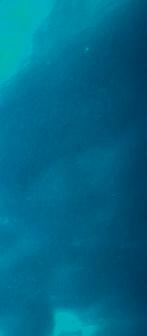










































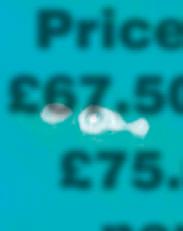








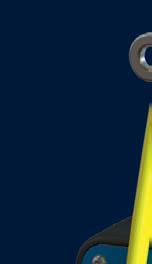
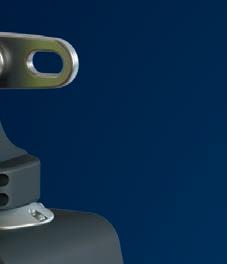








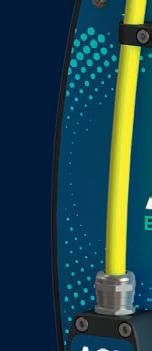






www.fishfarmermagazine.com 87 Backed by the UK’s leading supermarkets, regulators, Less stress, gaping, and bruising Suitable for salmon, trout, tilapia, seabass, seabream, yellowtail, and prawns WELFARE FIRST in-water electric stunning 22 - 24 August, booth G-726 Ace Aquatec.indd 1 28/06/2023 11:55:45 Magazine Fish Farmer SERVING WORLDWIDE AQUACULTURE SINCE 1977 E: subscriptions@warnersgroup.co.uk T: 01778 392014 Fish Farmer GREEN-ISH? The new deal at Holyrood BOATS Sector review NET BENEFITS Containment solutions AQUA NOR The trade show returns in style SEPTEMBER 2021 Bright futures Great careers in aquaculture Cover-final.indd 13/09/2021 18:34:47 SUBSCRIBE NOW! Prices from £67.50 for DD £75.00 for non DD (INCLUDING P&P) VERSIONPRINTED TM the weight is over! Automated AI cameras Real-time millimetre accuracy Weighing in at 8.5 kg
Turning conventional approaches... upside down
Clynav brings fresh hope in the fight against pancreatic disease
Clynav™ will turn the way you see PD control upside down.
Clynav is like no other PD vaccine - it uses Elanco’s unique DNA plasmid technology and has become the leading choice for PD protection in Norway. Clynav is delivered intra-muscularly without the need for an adjuvant.








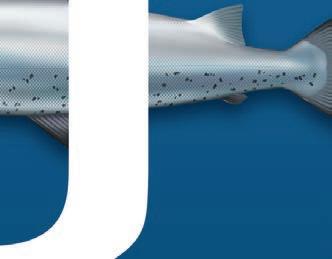













So, with Clynav, you can rest assured of excellent PD protection without the risks associated with conventional vaccines.
Take back control of PD with Clynav. It will change your point of view, for good.




Take control
Clynav contains pUK-SPDV-poly2#1 DNA plasmid coding for salmon pancreas disease virus proteins: 5.1 – 9.4 µg. Legal category POM-V in UK. For further information call Elanco Animal Health on +44(0)1256 353131 or write to: Elanco UK AH Limited, First Floor, Form 2, Bartley Way, Bartley Wood Business Park, Hook RG27 9XA, United Kingdom. For further information consult the product SPC. Clynav, Elanco and the diagonal bar logo are trademarks of Elanco or its affiliates. © 2021 Elanco or its affiliates. Use medicines responsibly www.noah.co.uk/responsible. Advice should be sought from the Medicine Prescriber. PM-UK-21-0435 – 04.2021 - RLH www.elanco.co.uk









































































































































































































































































































































 Dr Martin Jaffa
Dr Martin Jaffa




























































































































 Photo: ADEC, Milas, Turkey
Above left: Ocean Clear Skin Films
Photo: ADEC, Milas, Turkey
Above left: Ocean Clear Skin Films



































































































































































































































 Left: RAS farm
Below: Dis�nguishing pathogens from beneficial bacteria is ital
Left: RAS farm
Below: Dis�nguishing pathogens from beneficial bacteria is ital












































































































































































































































































































































































































































































































































































